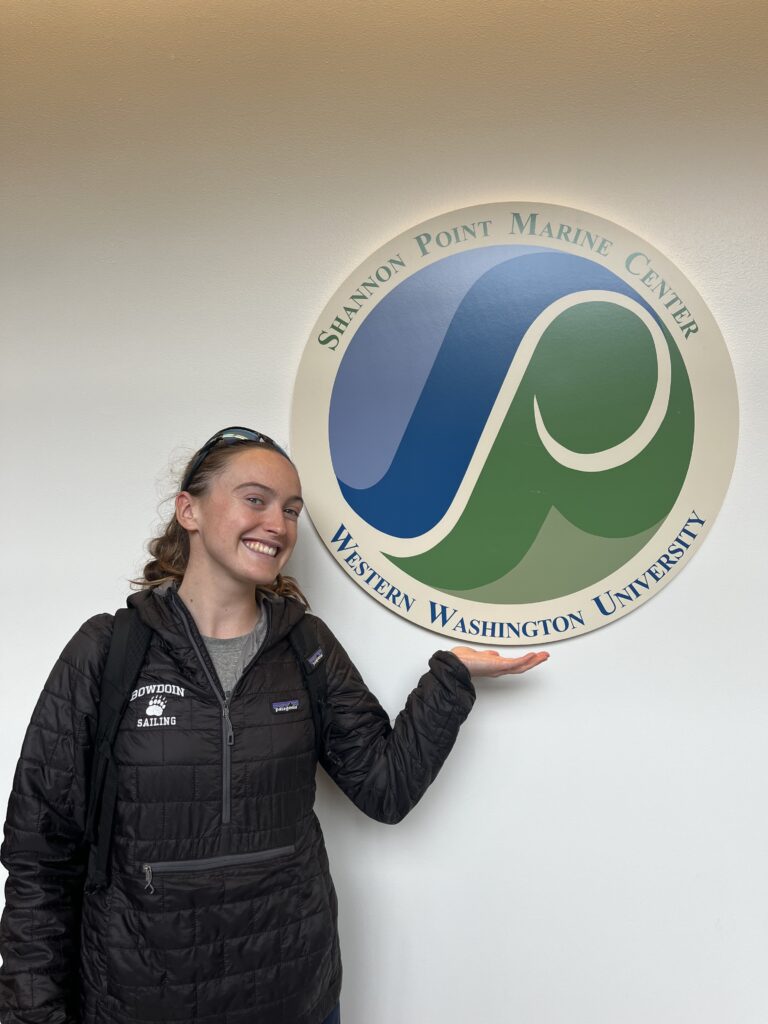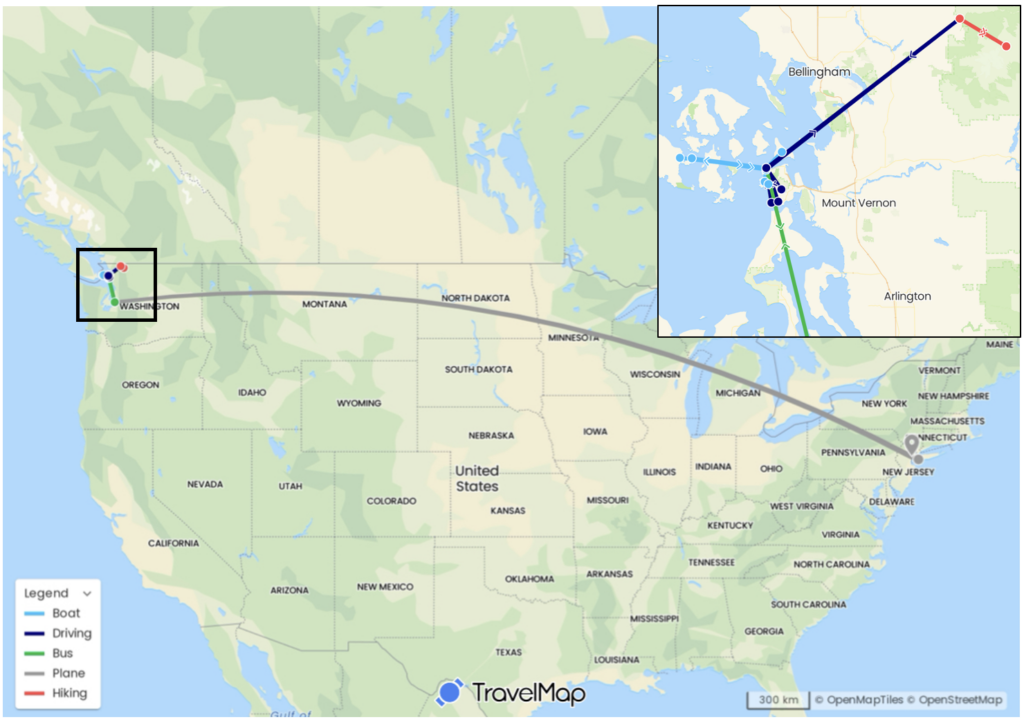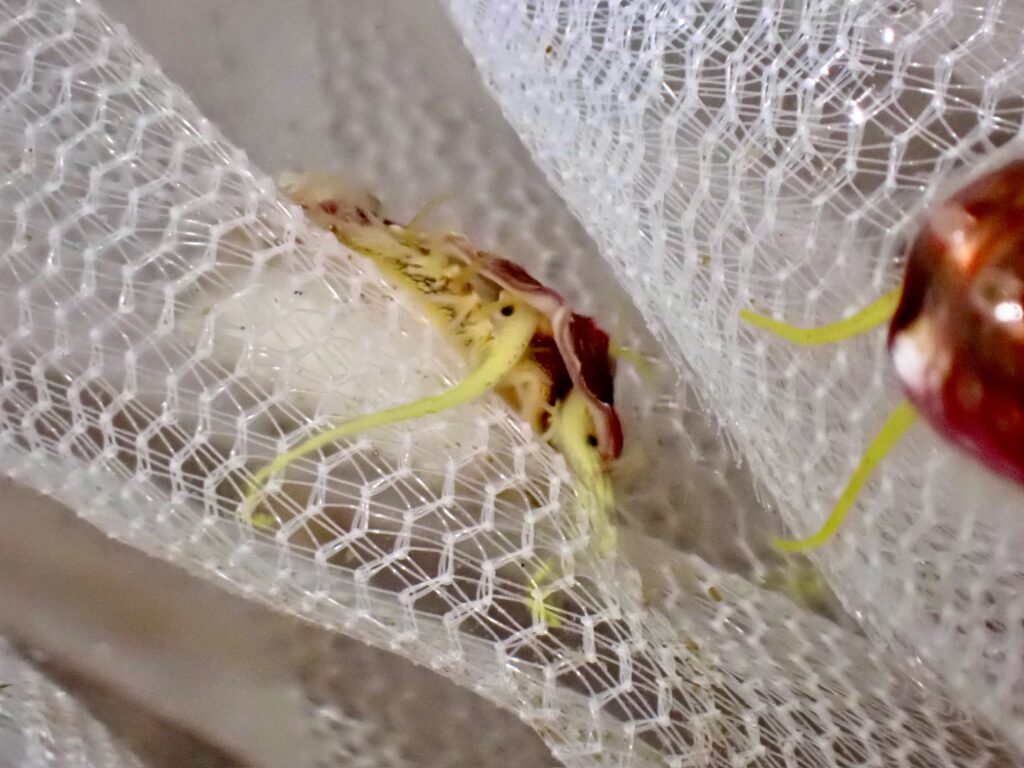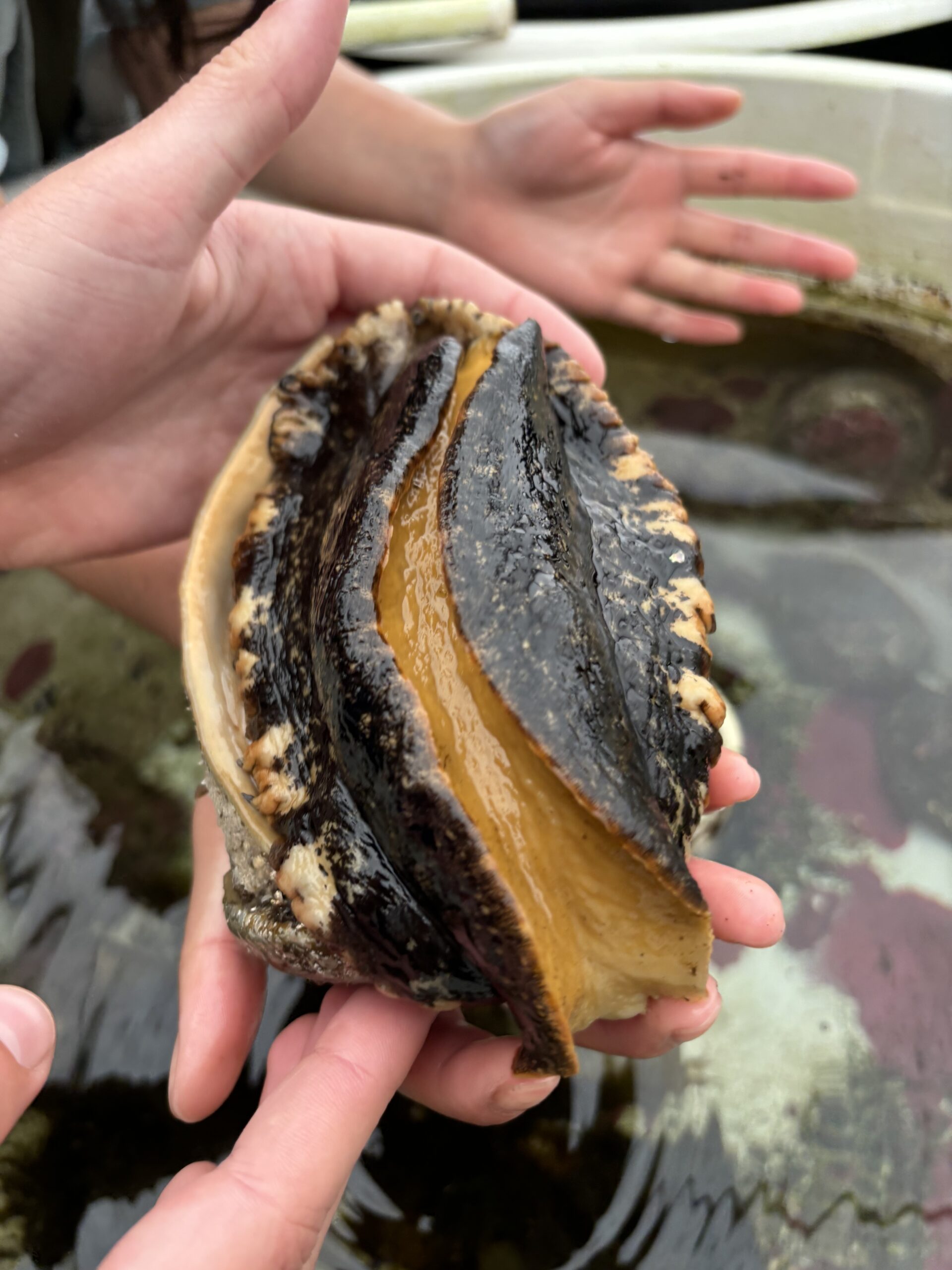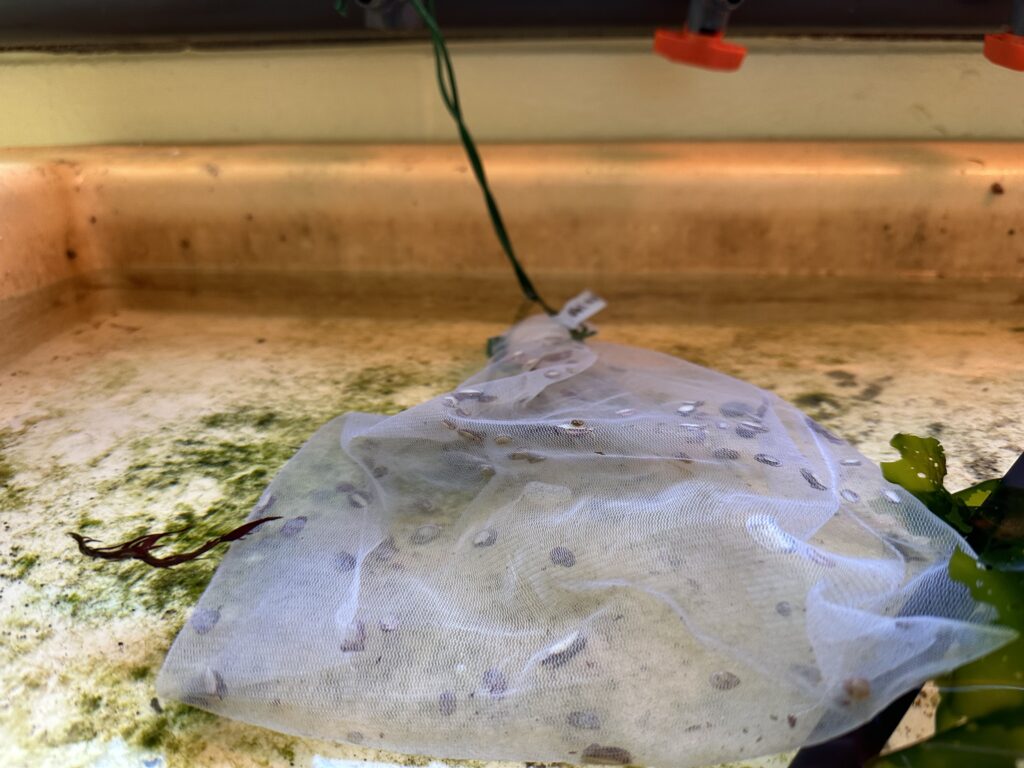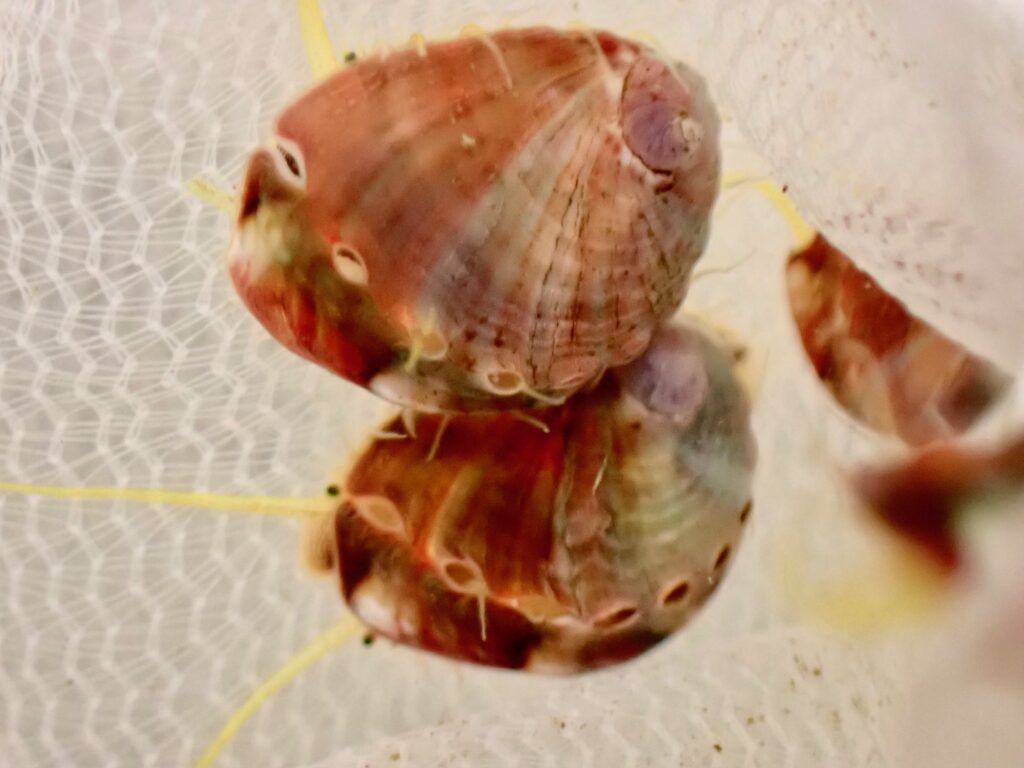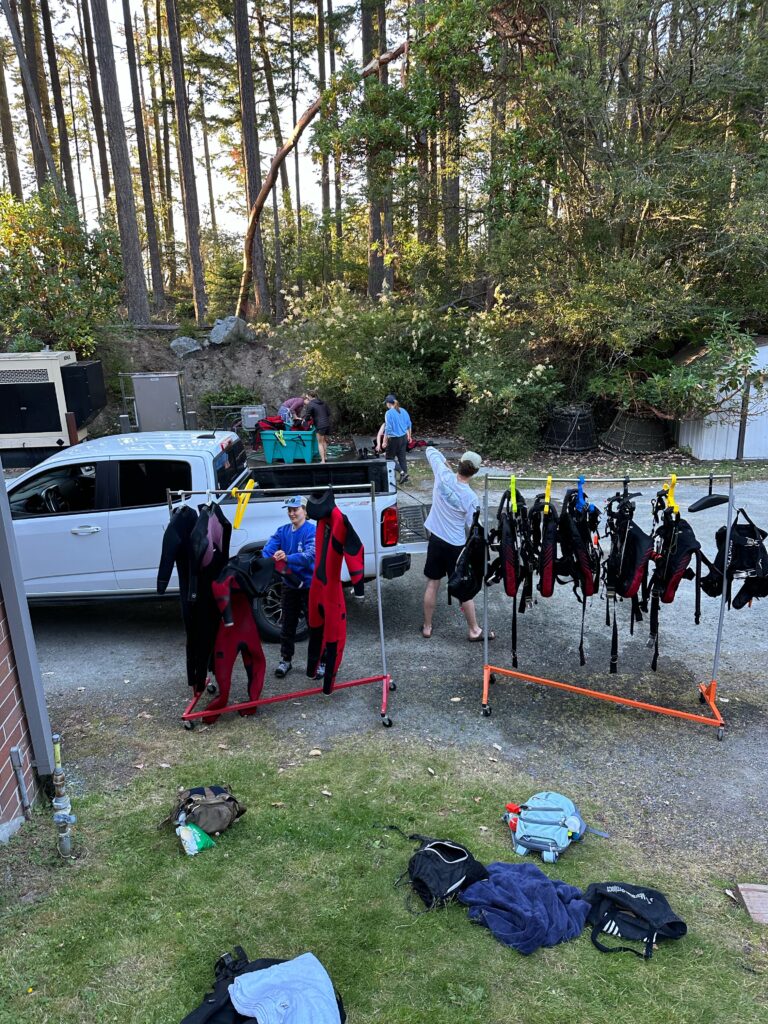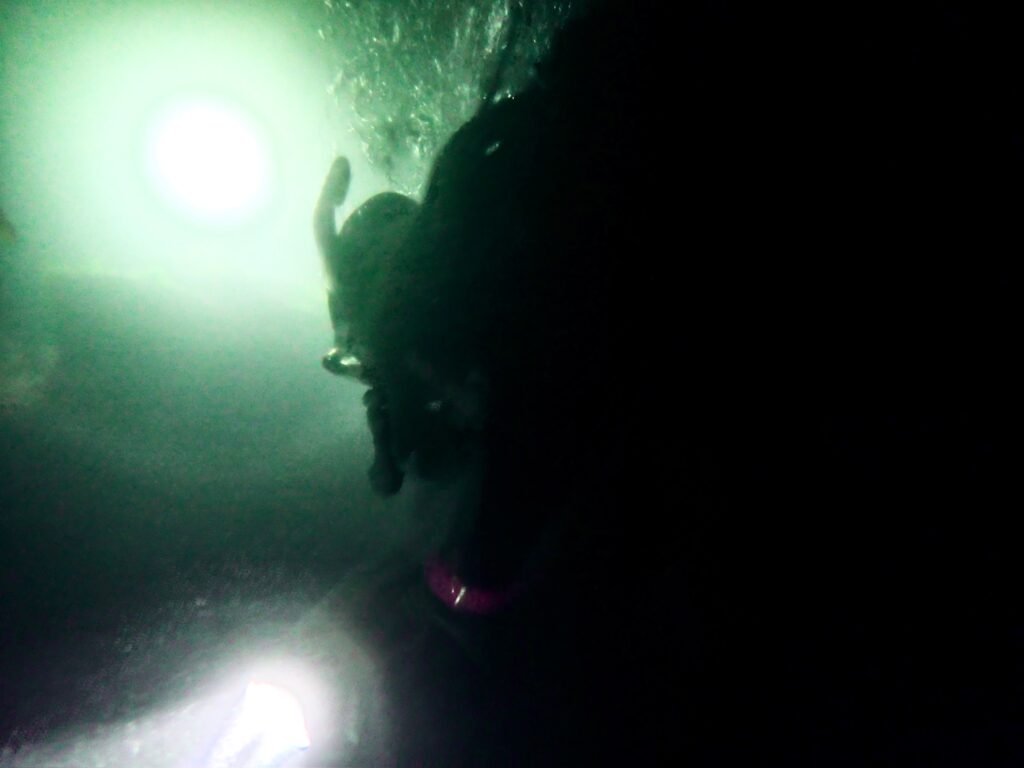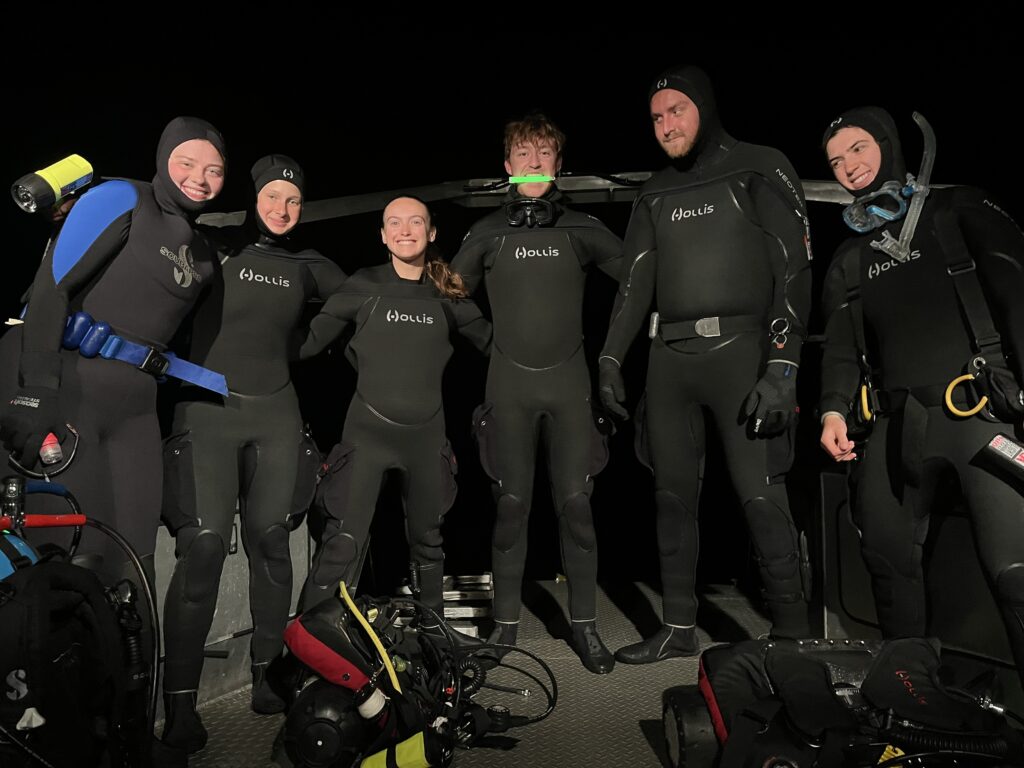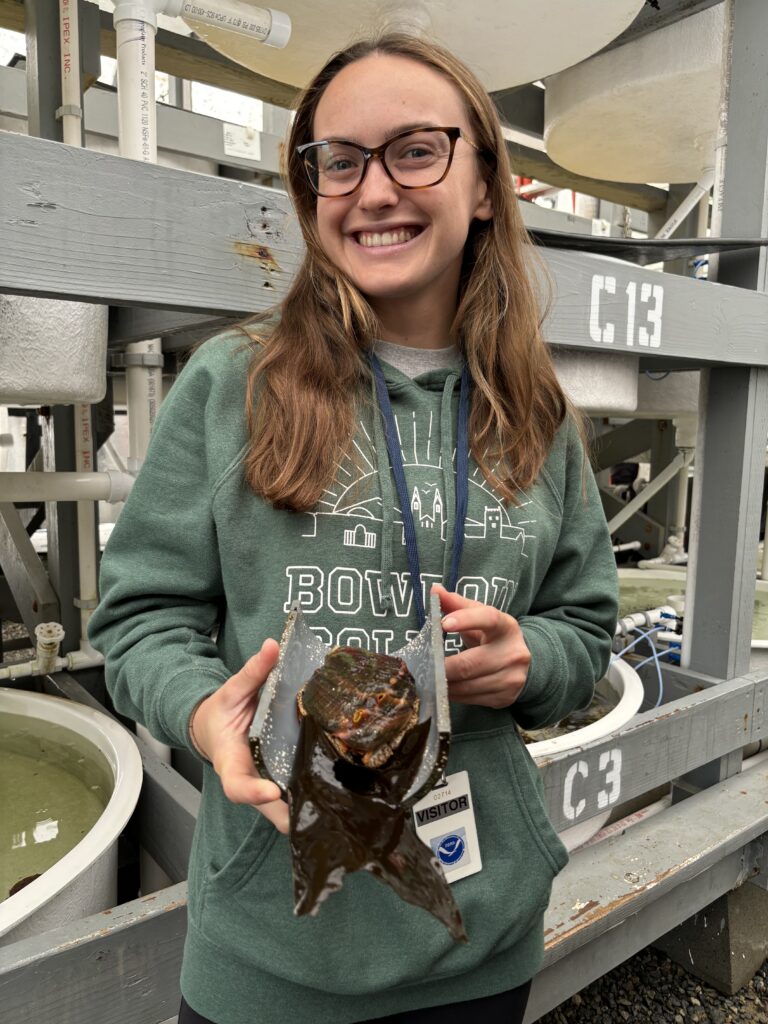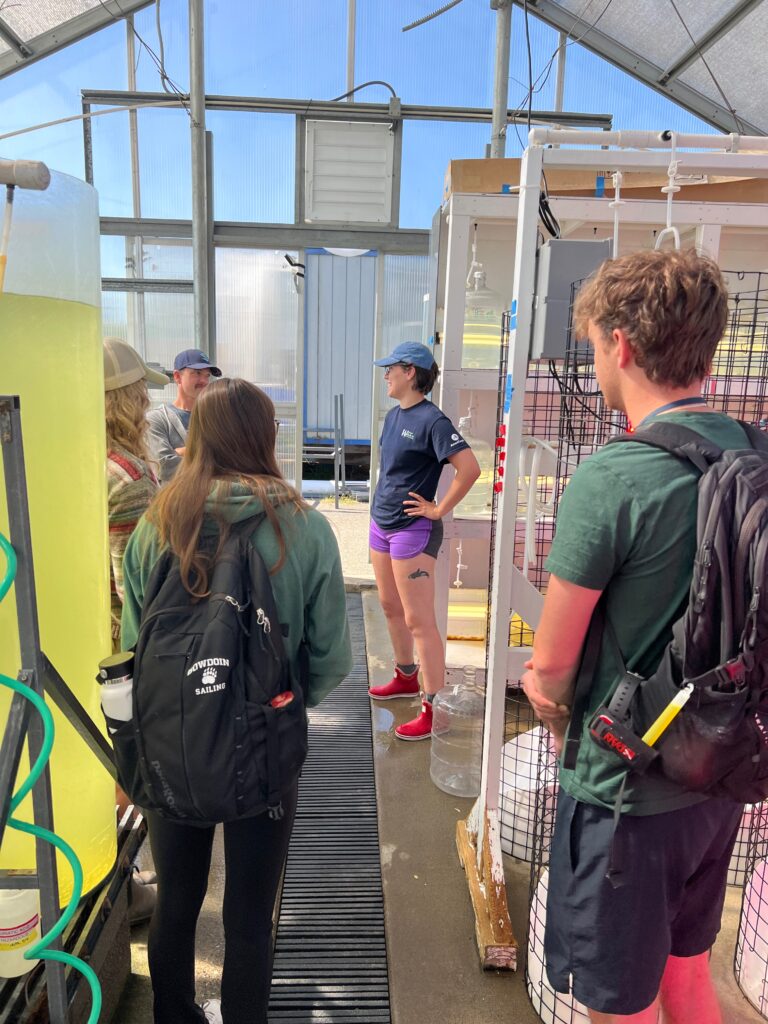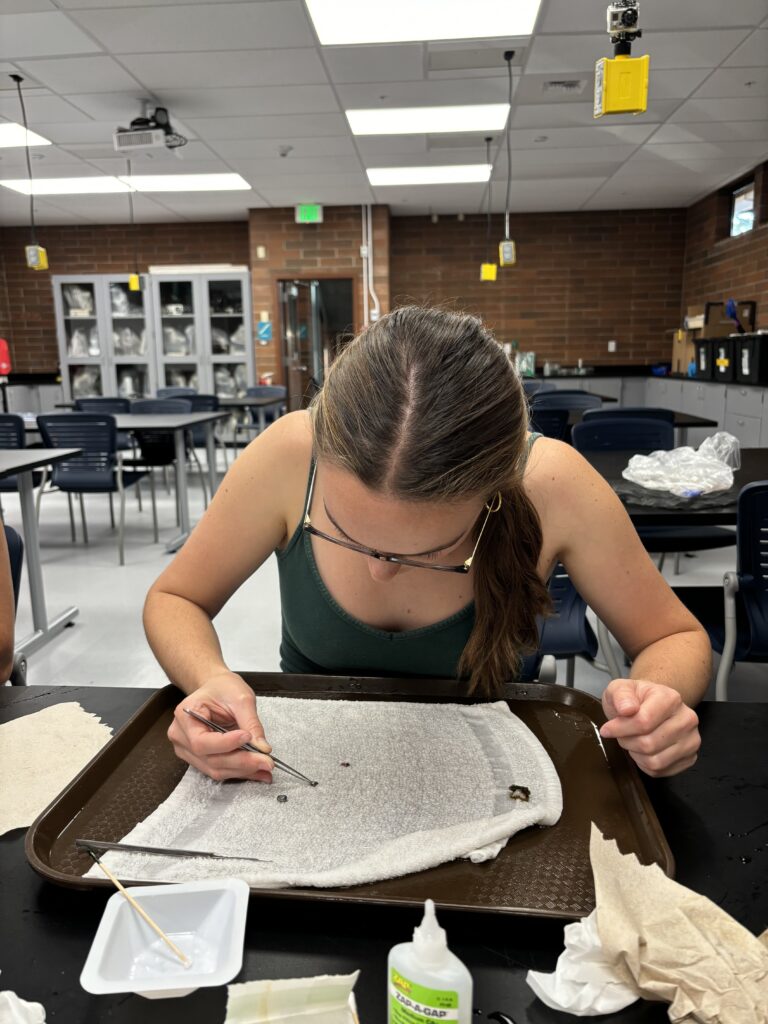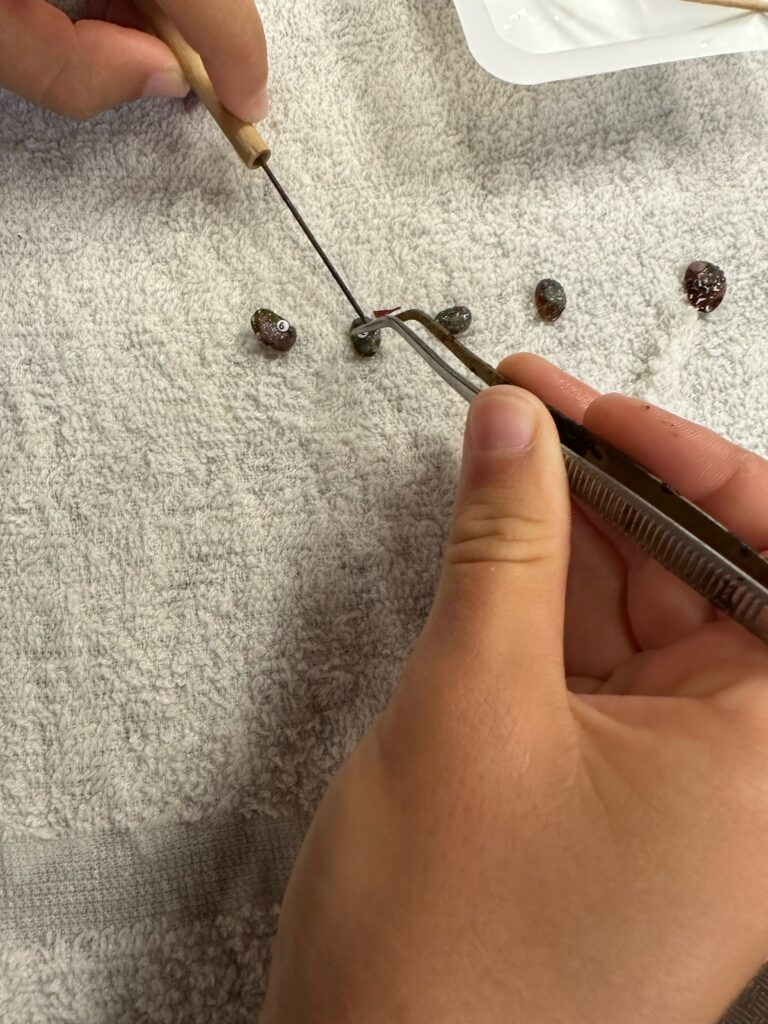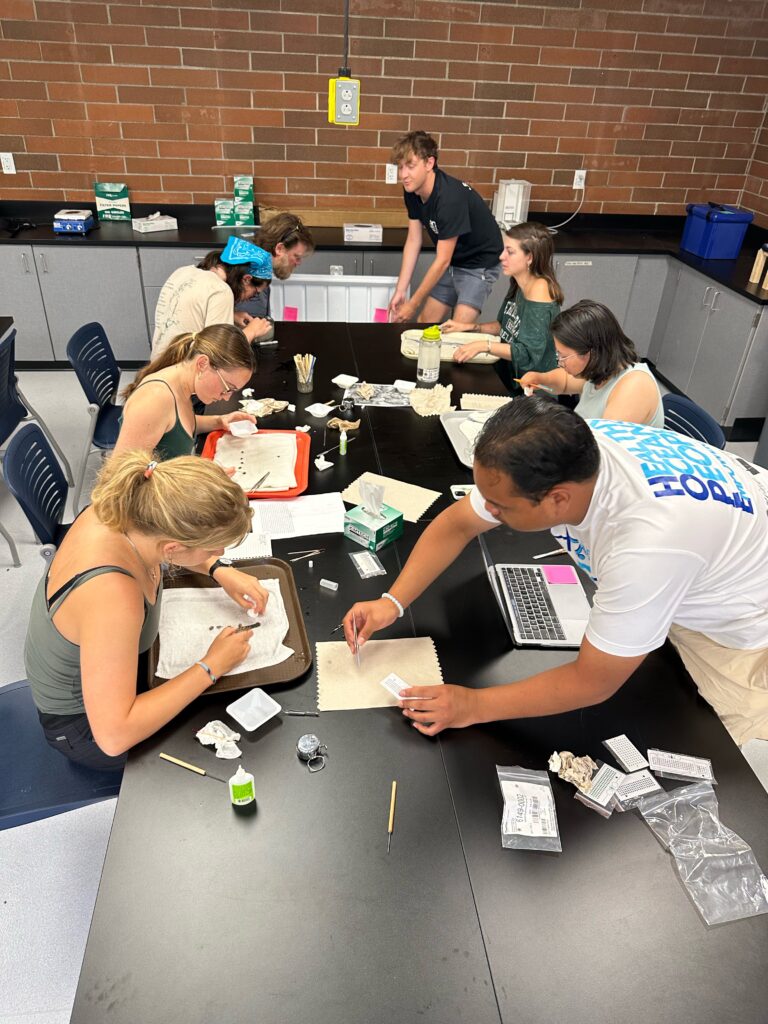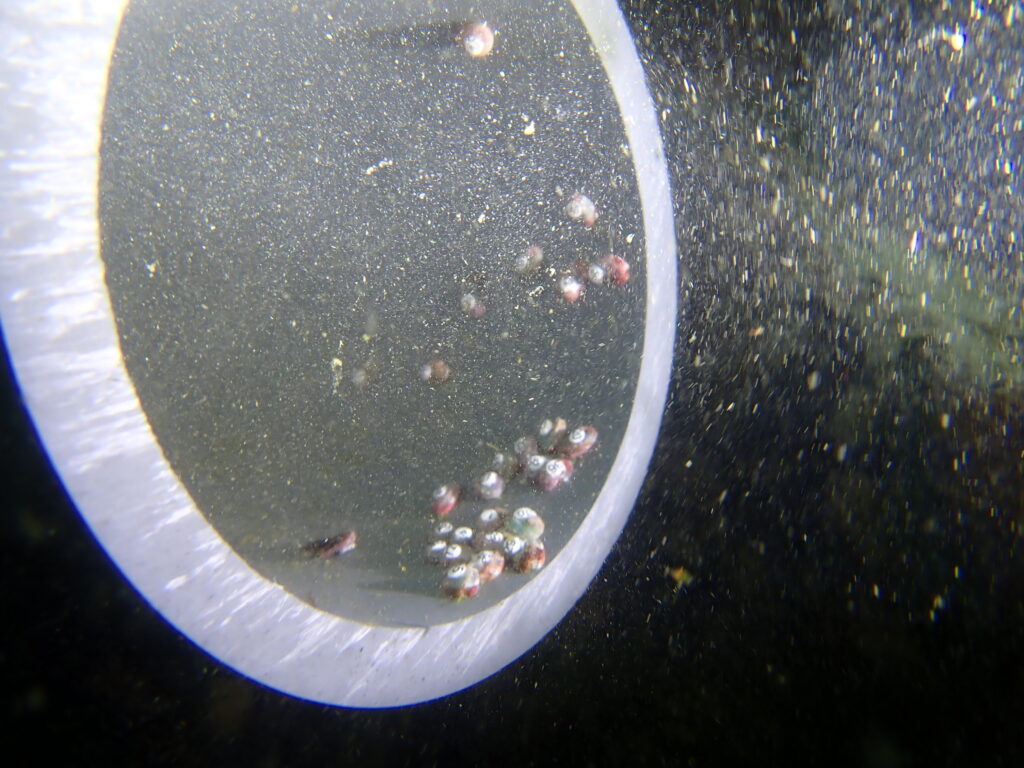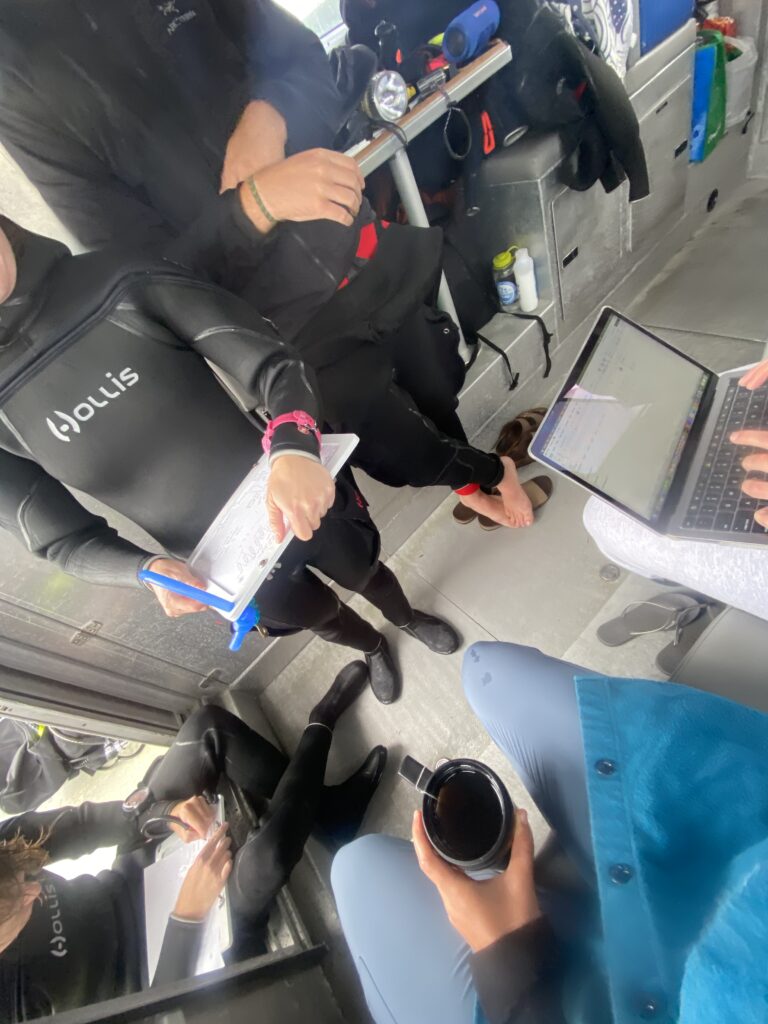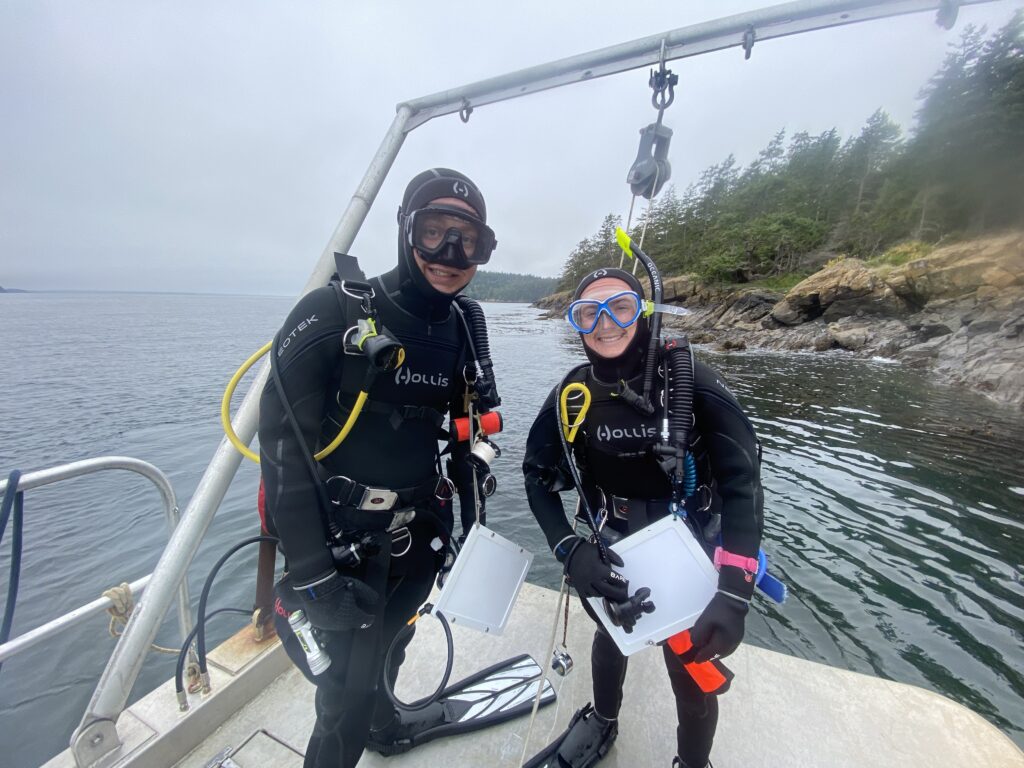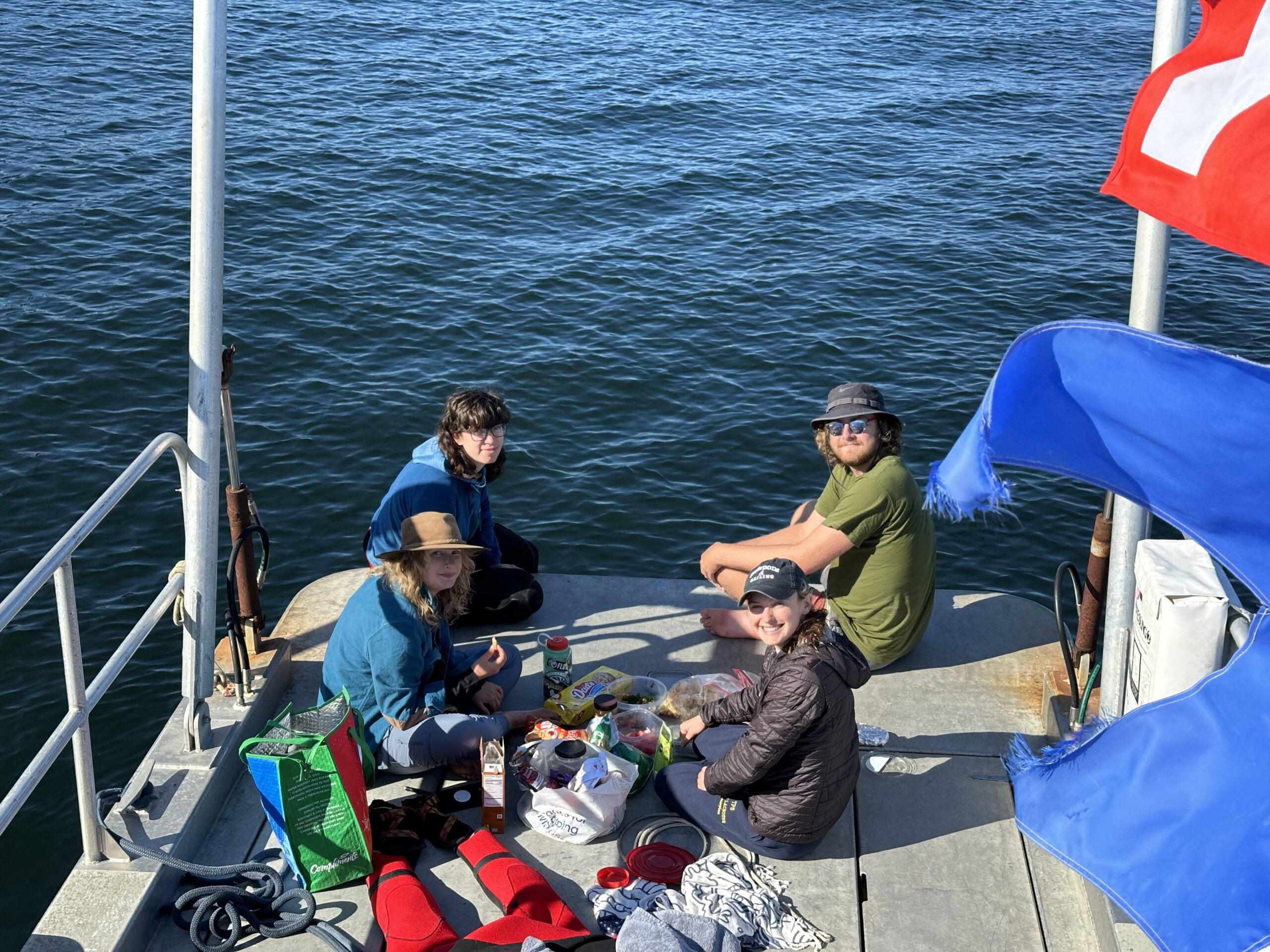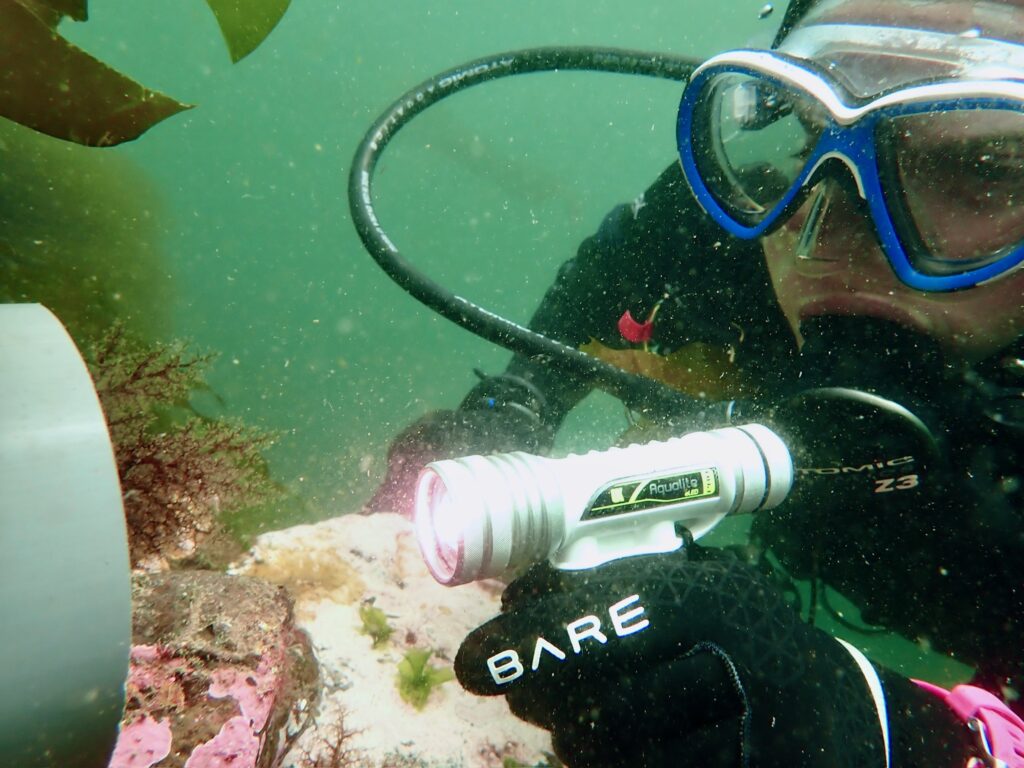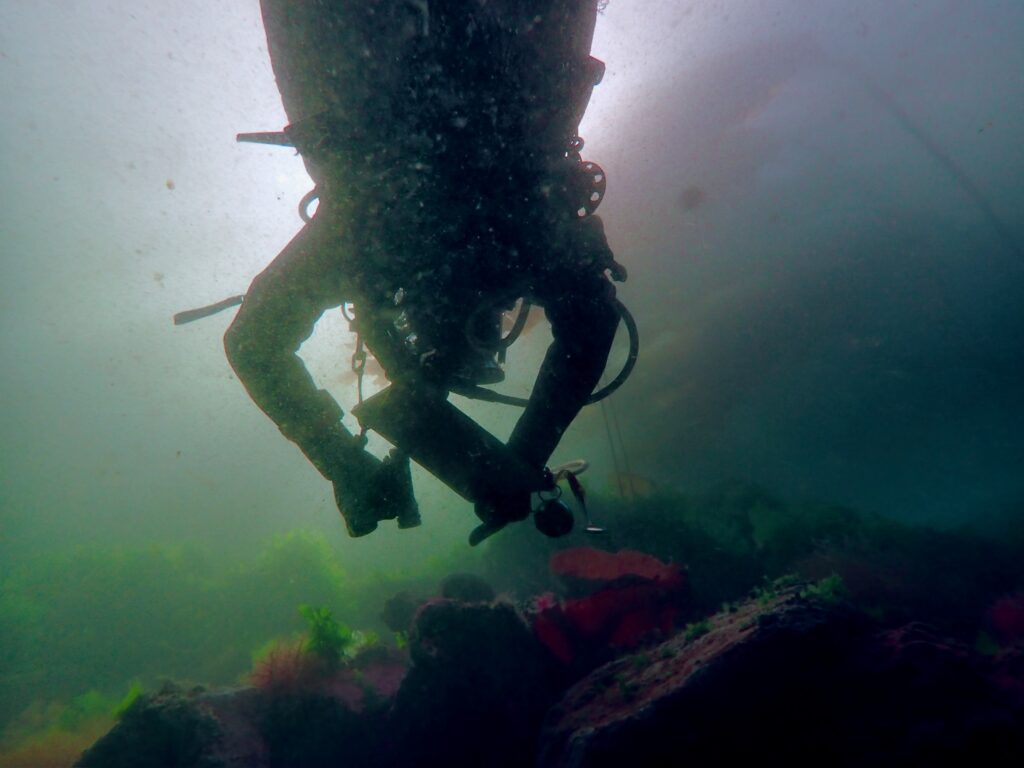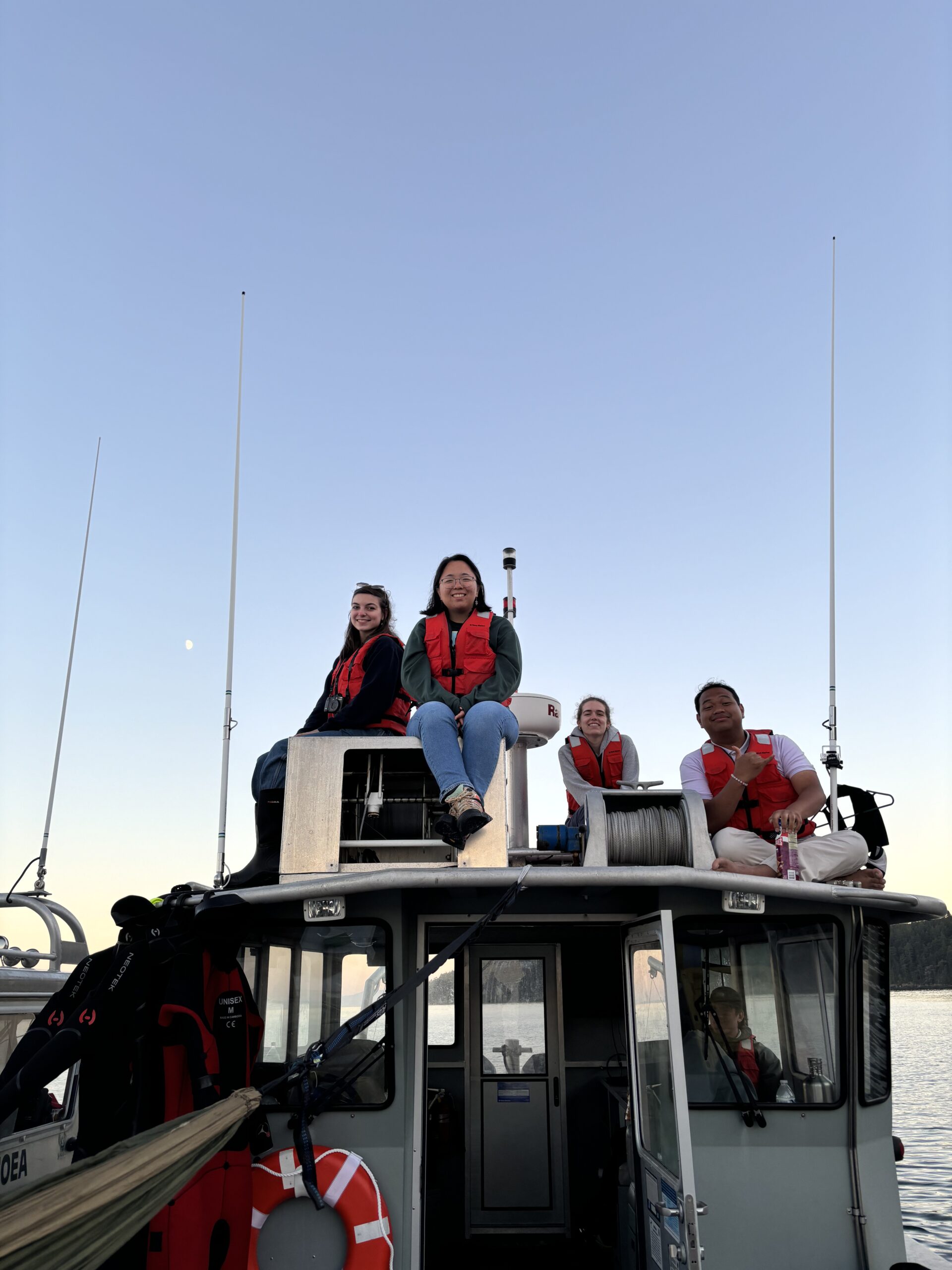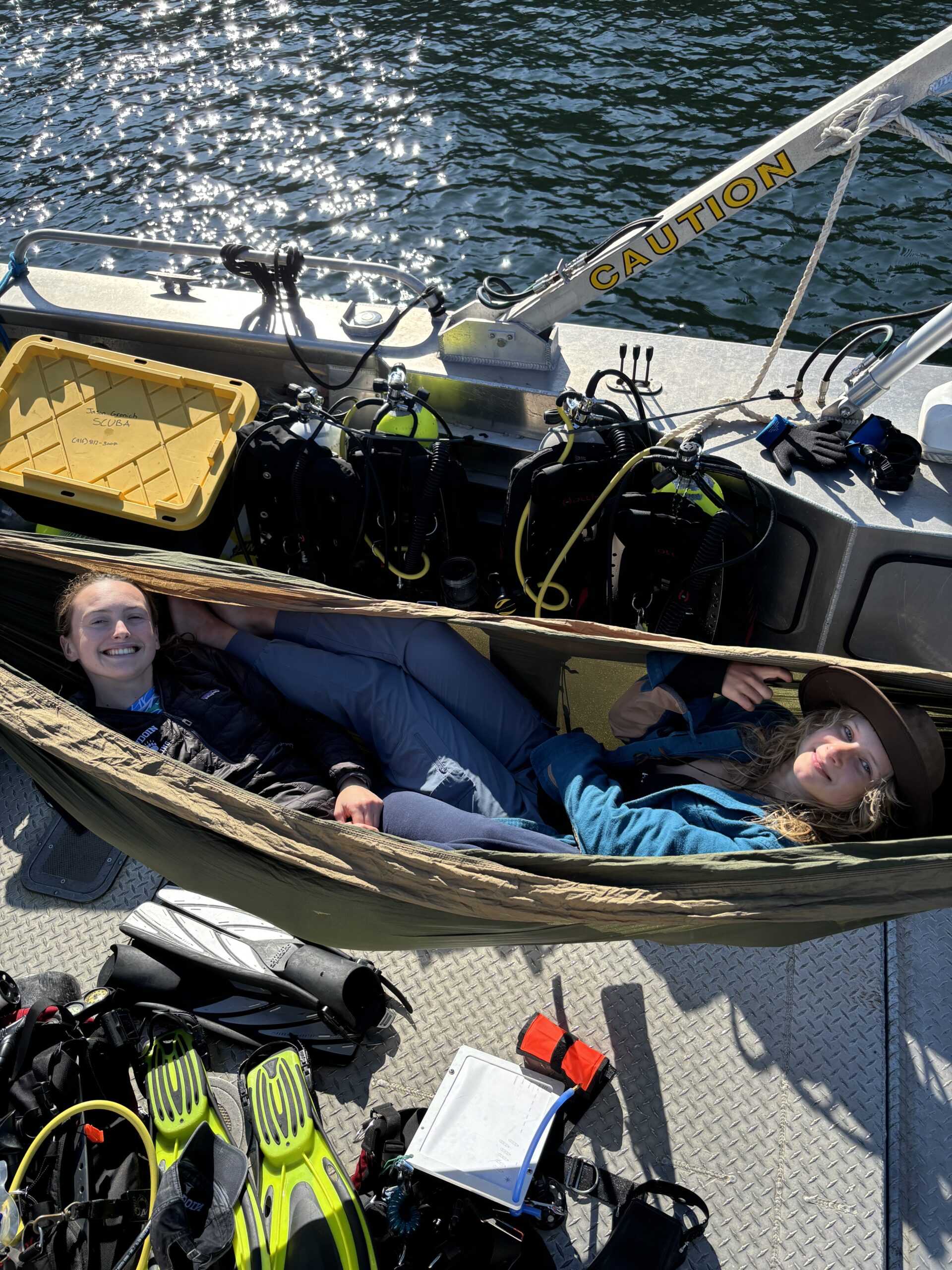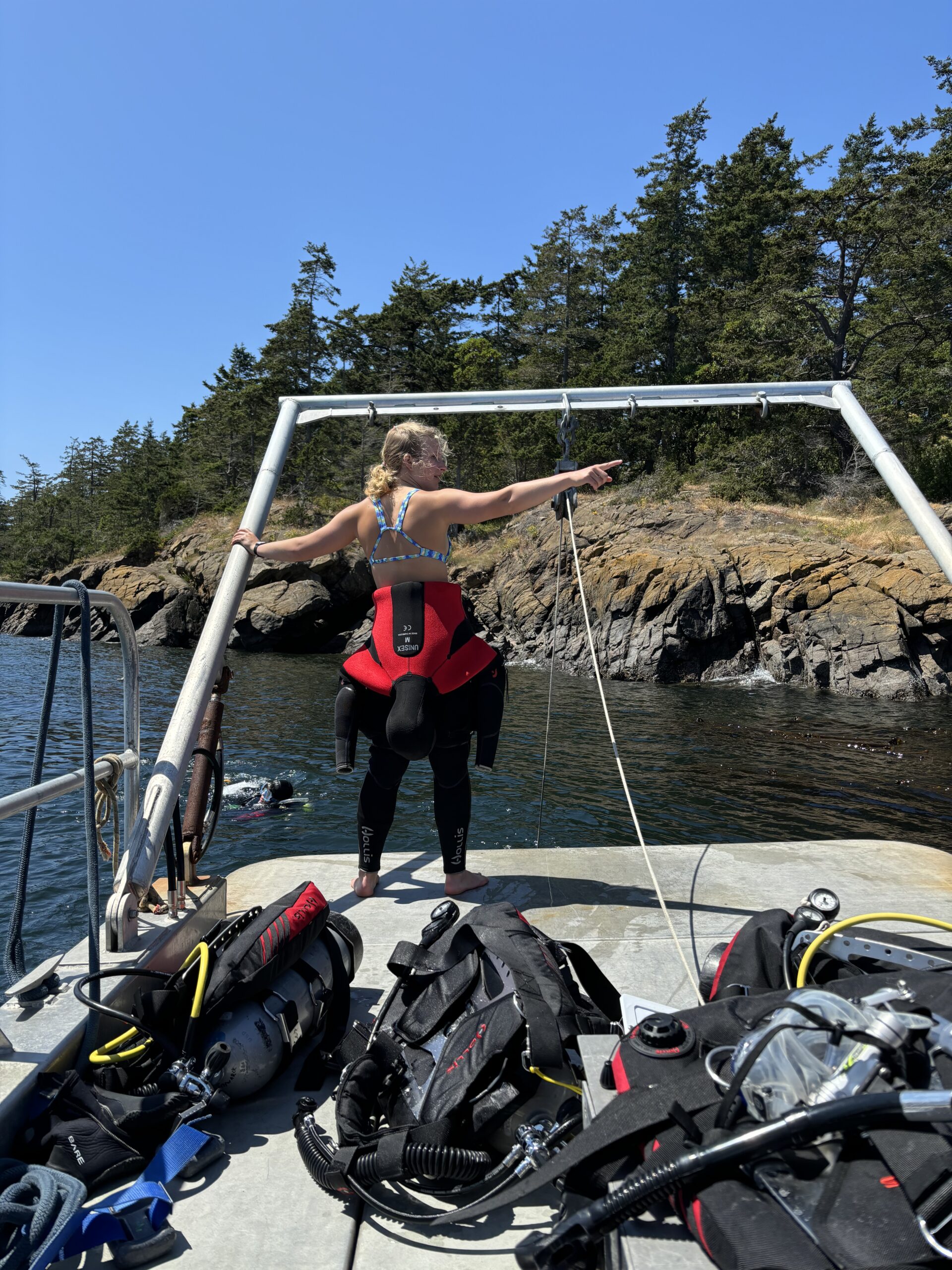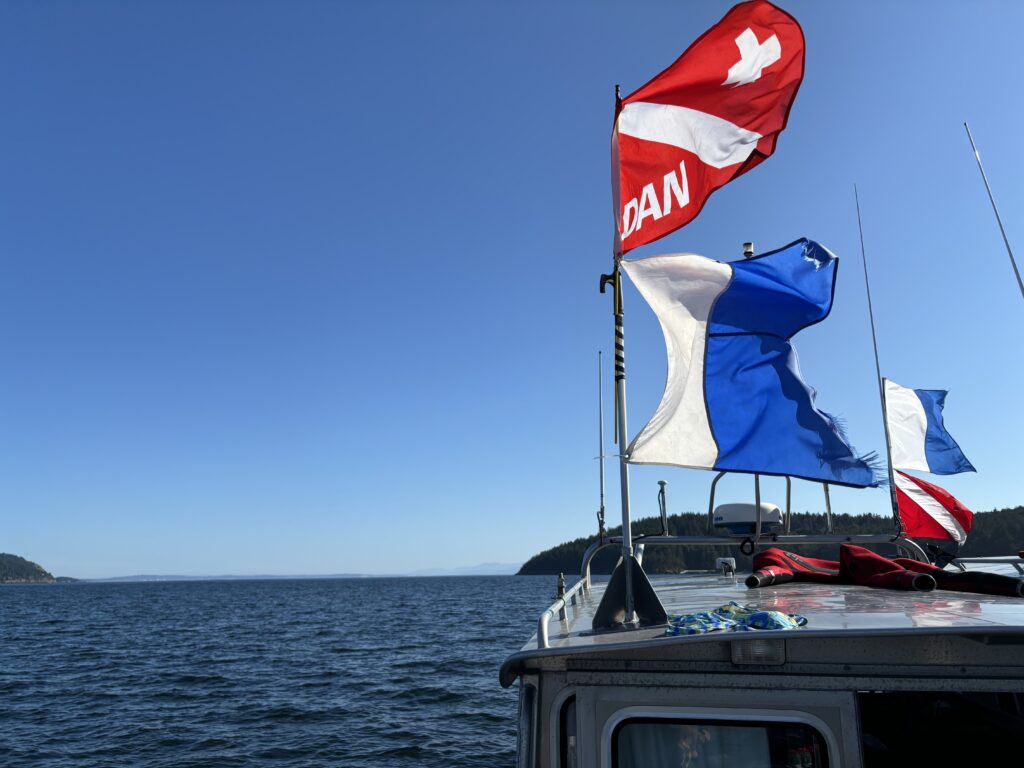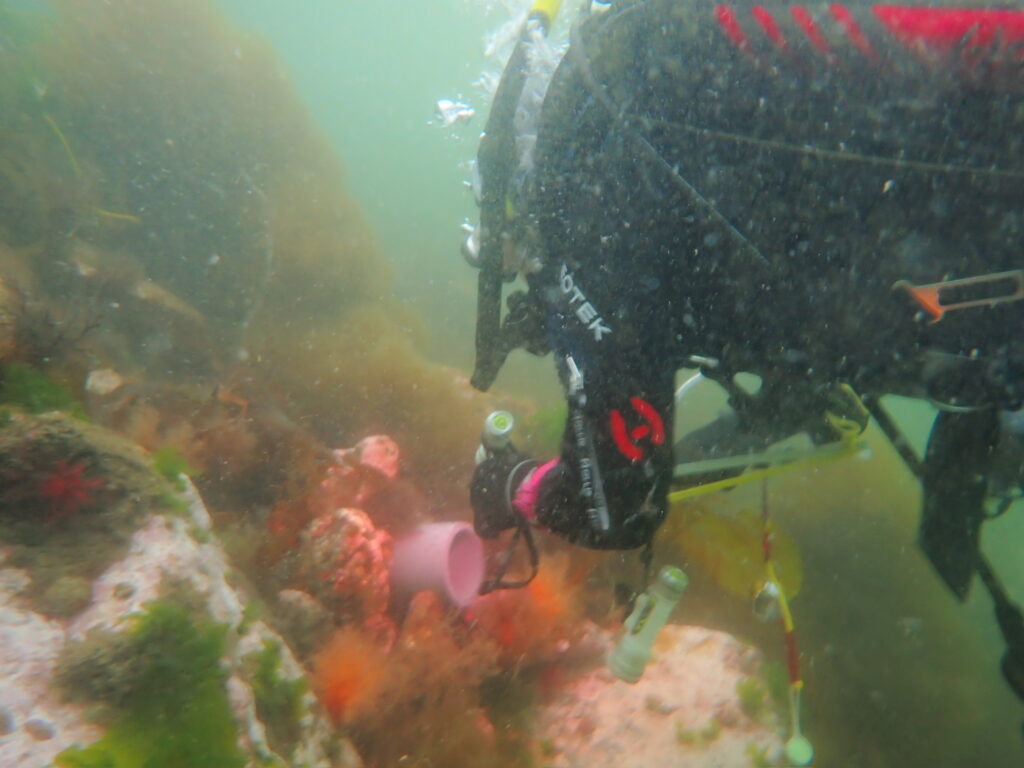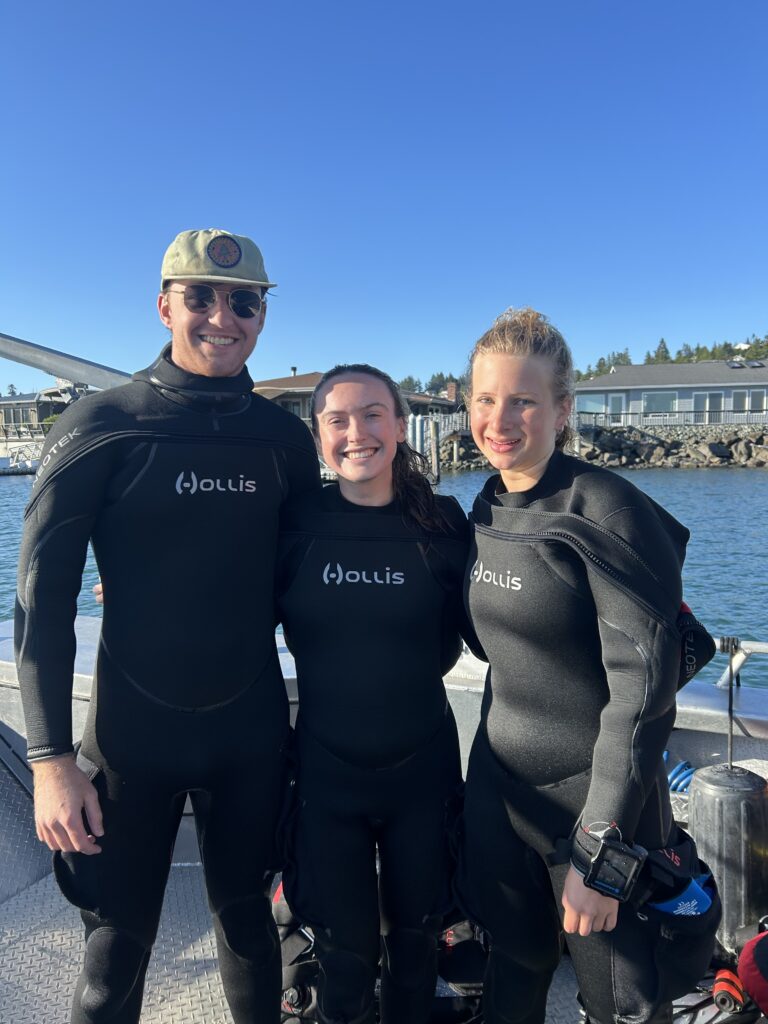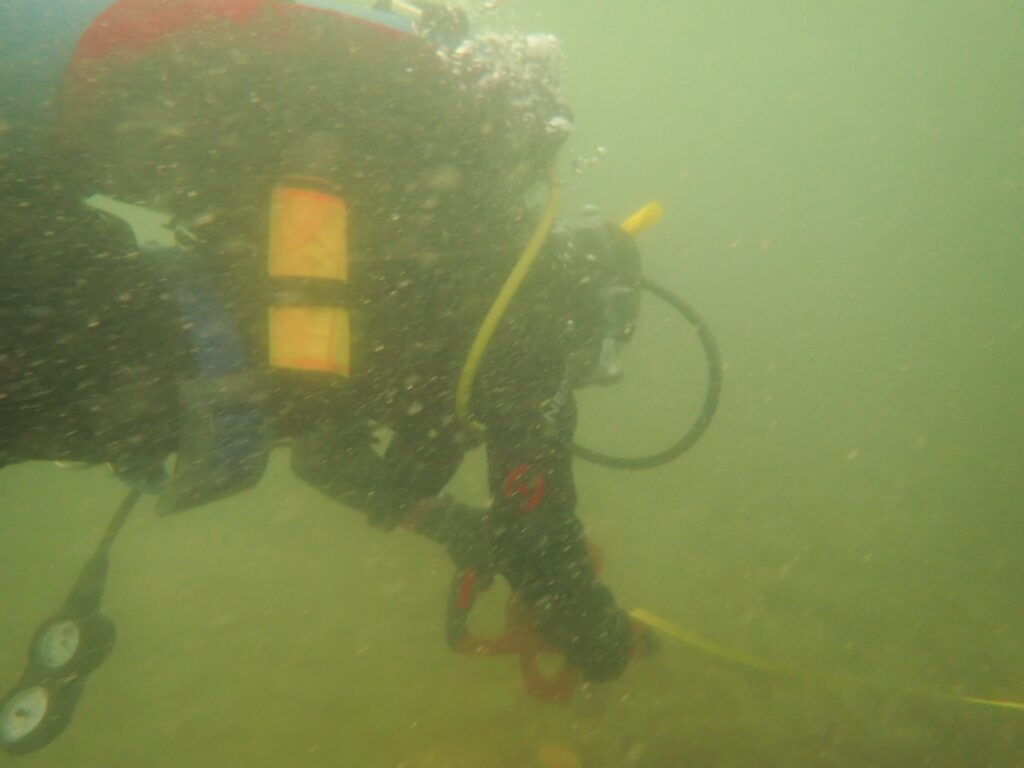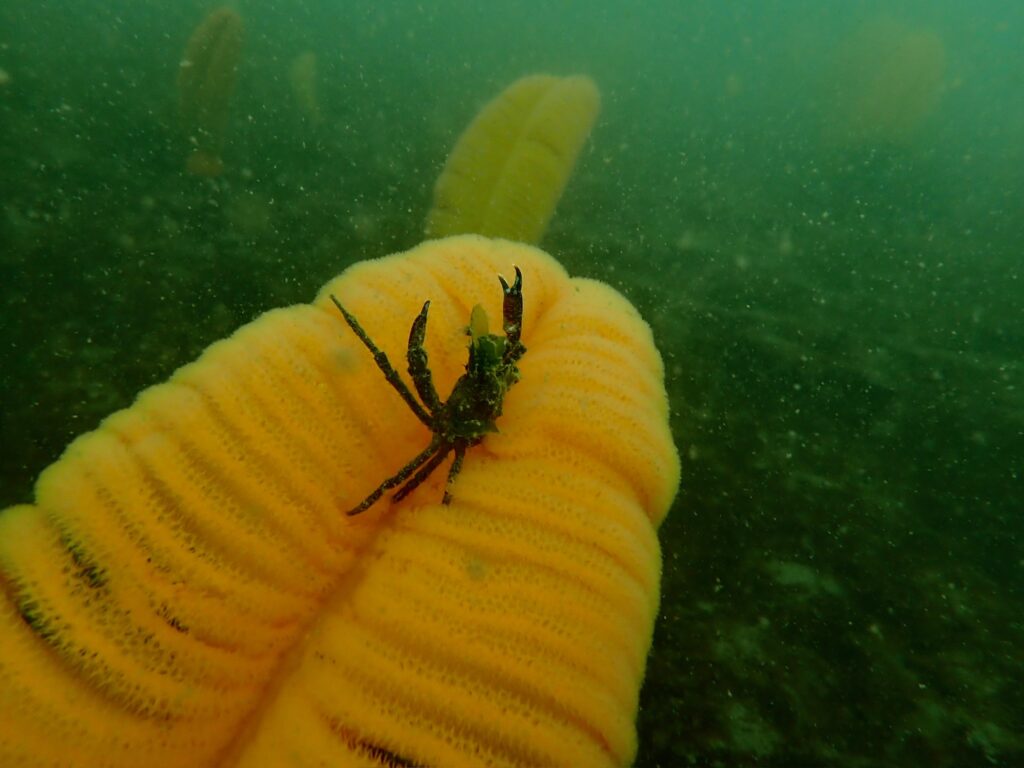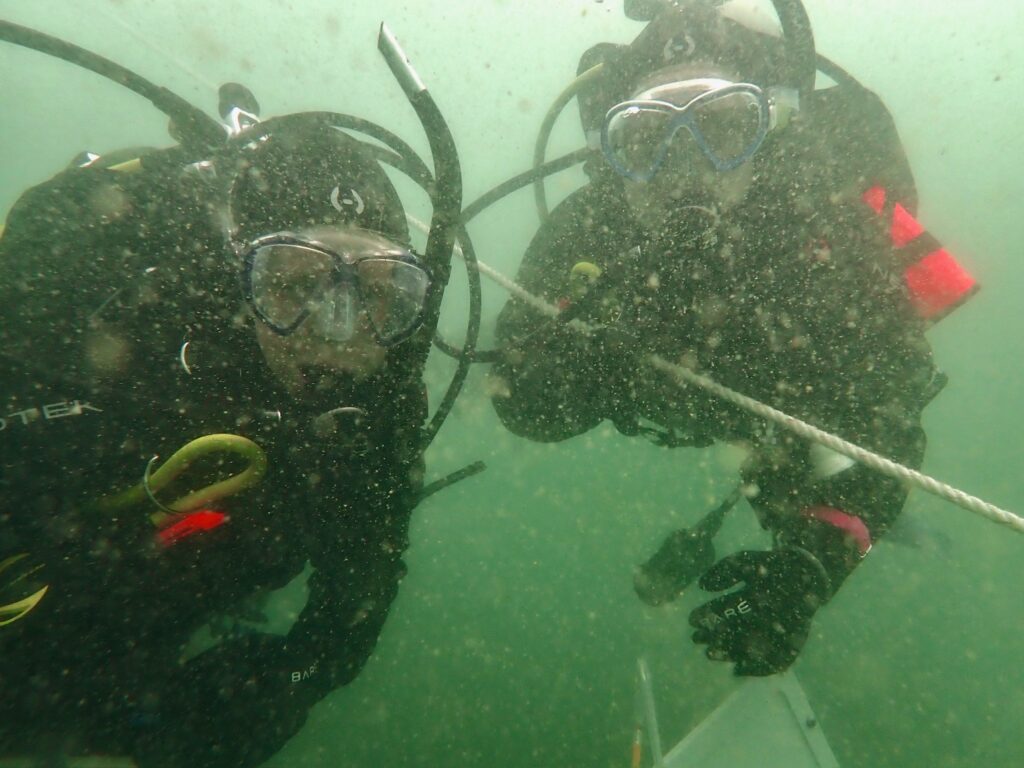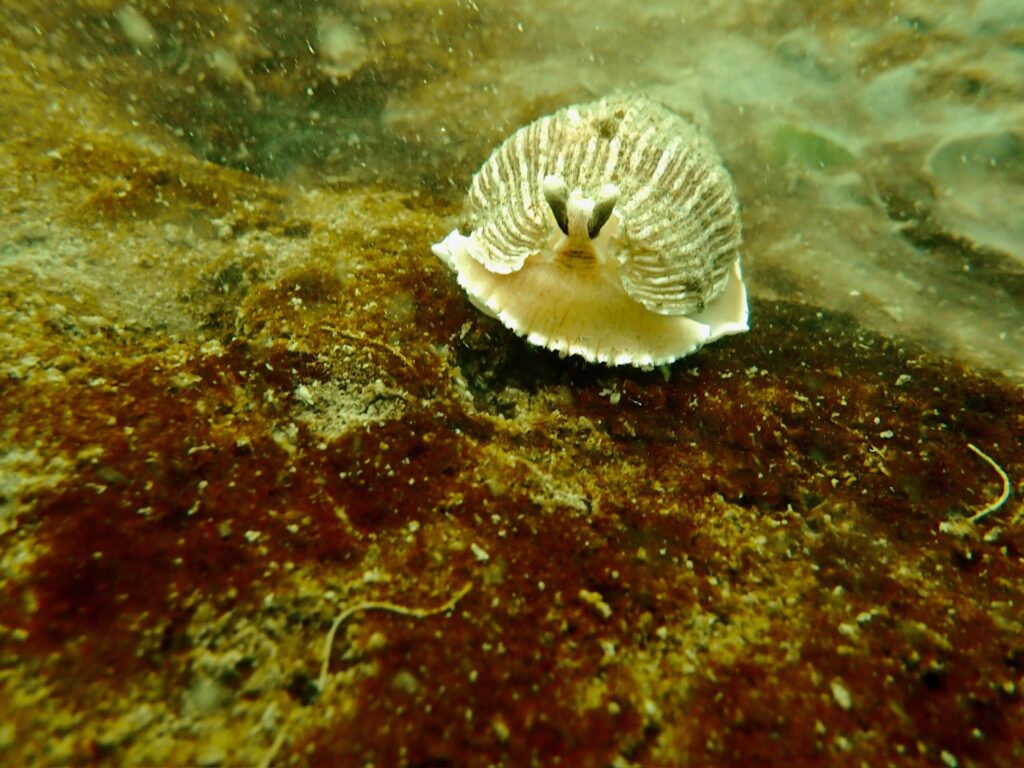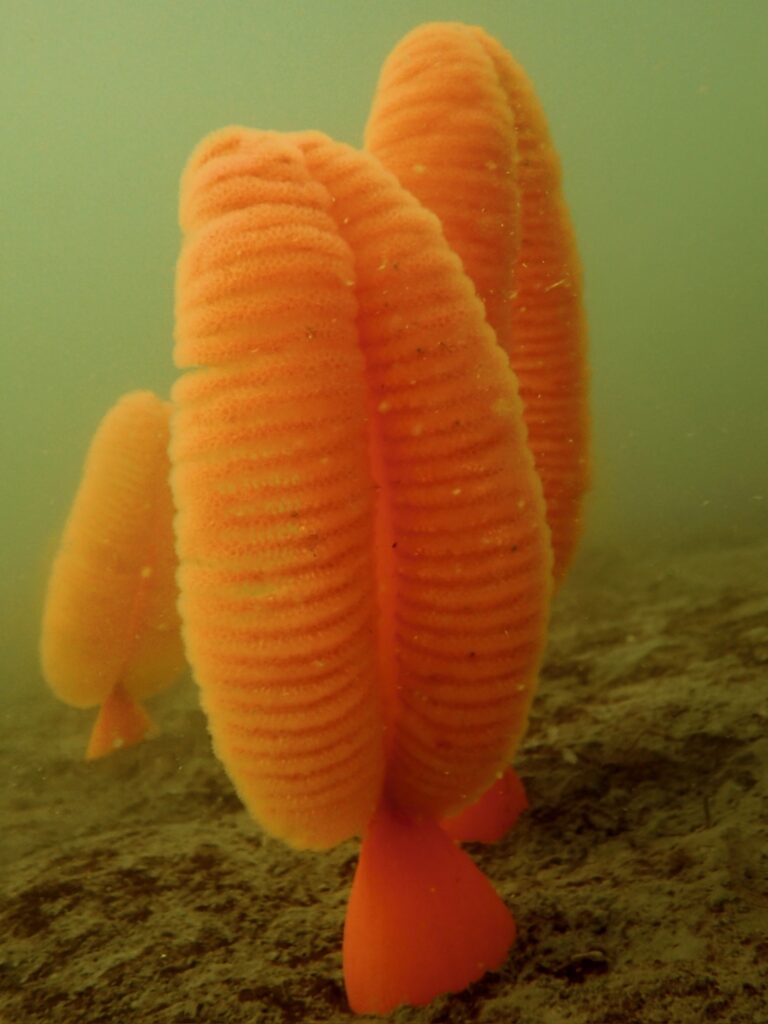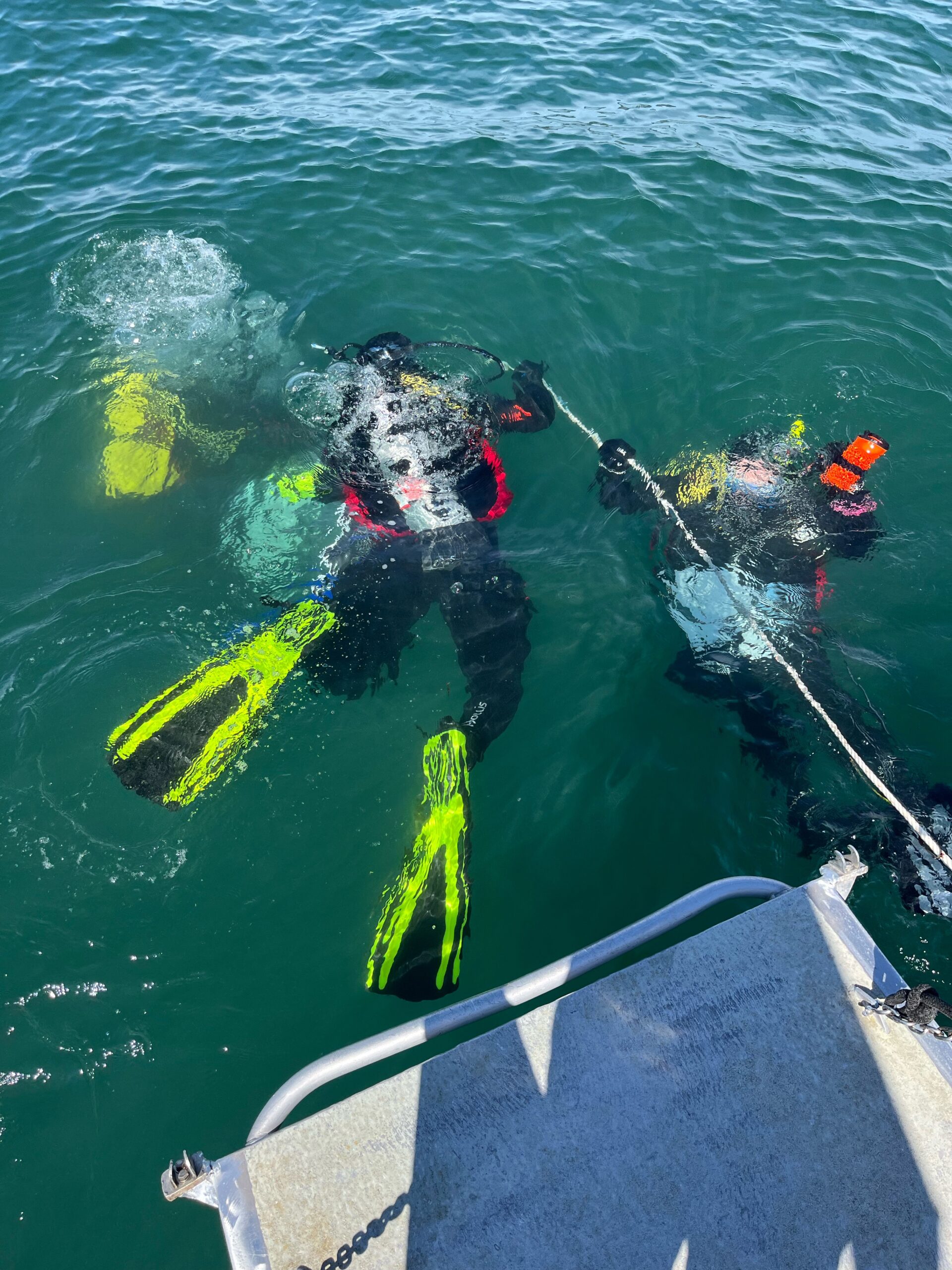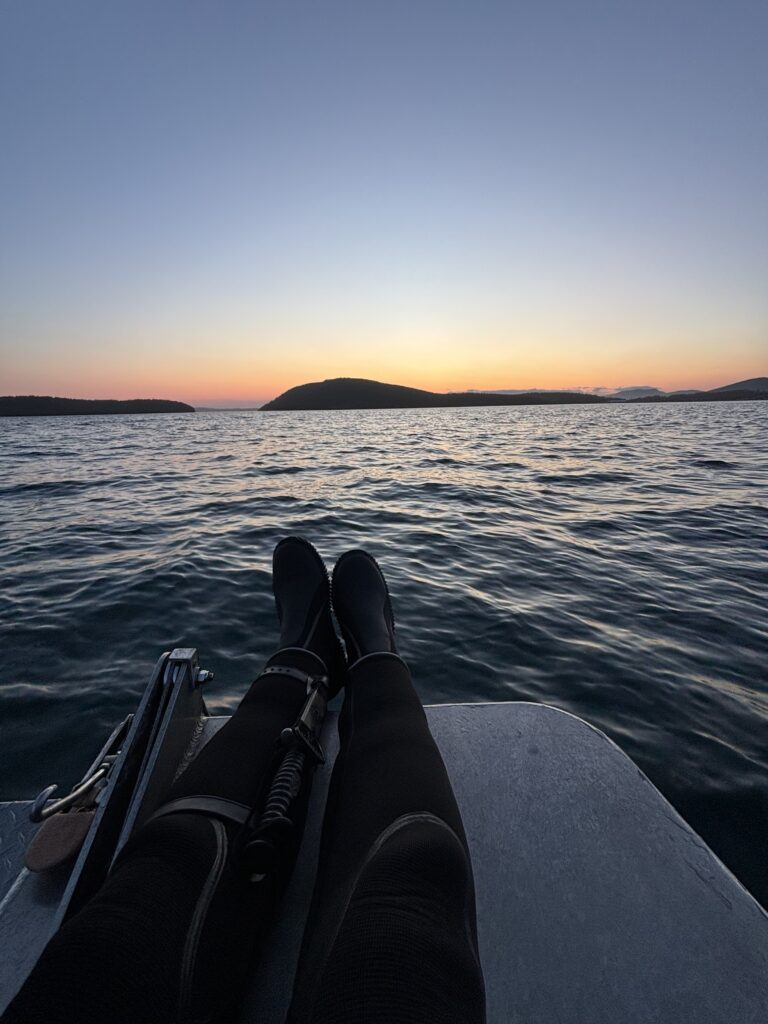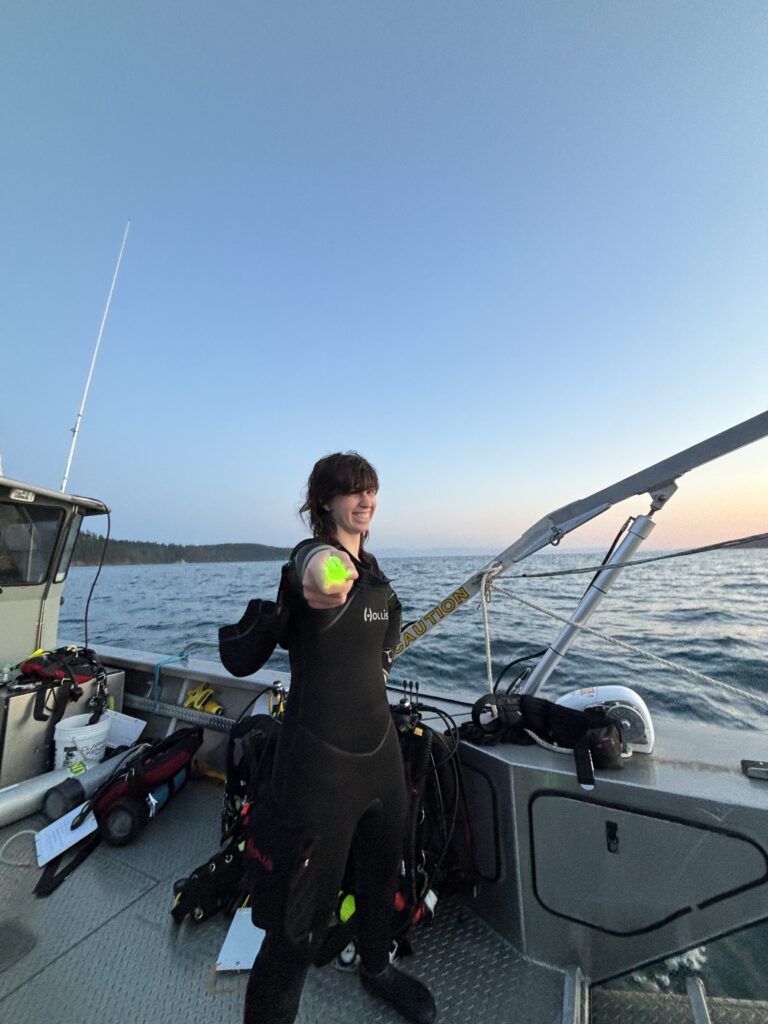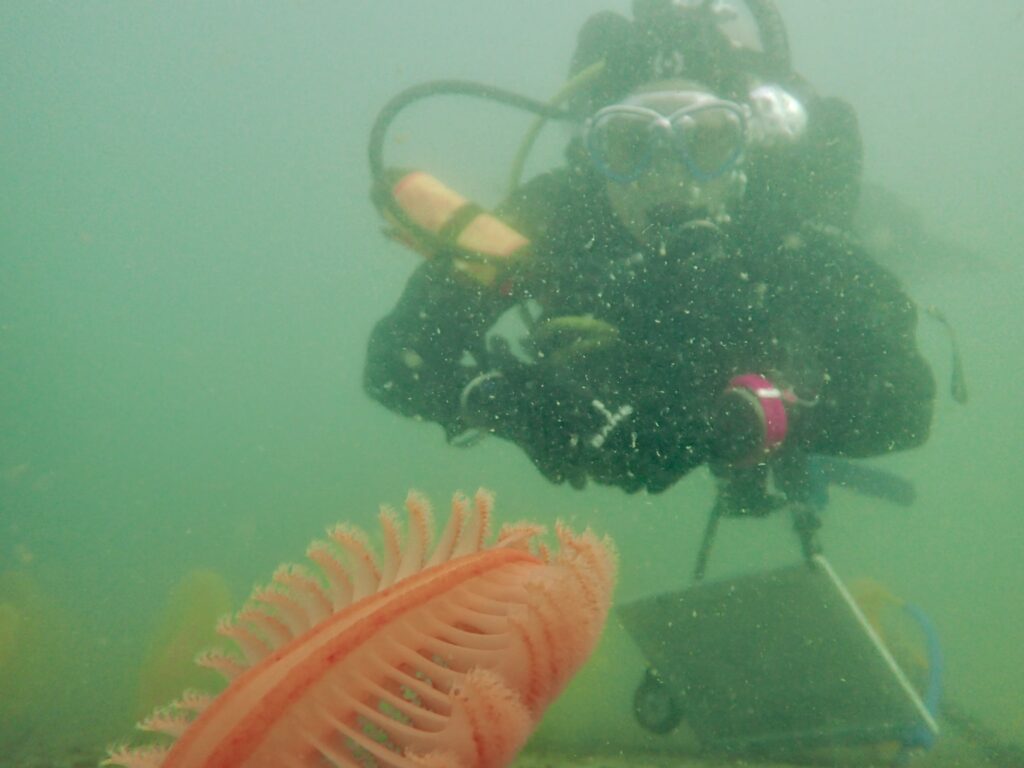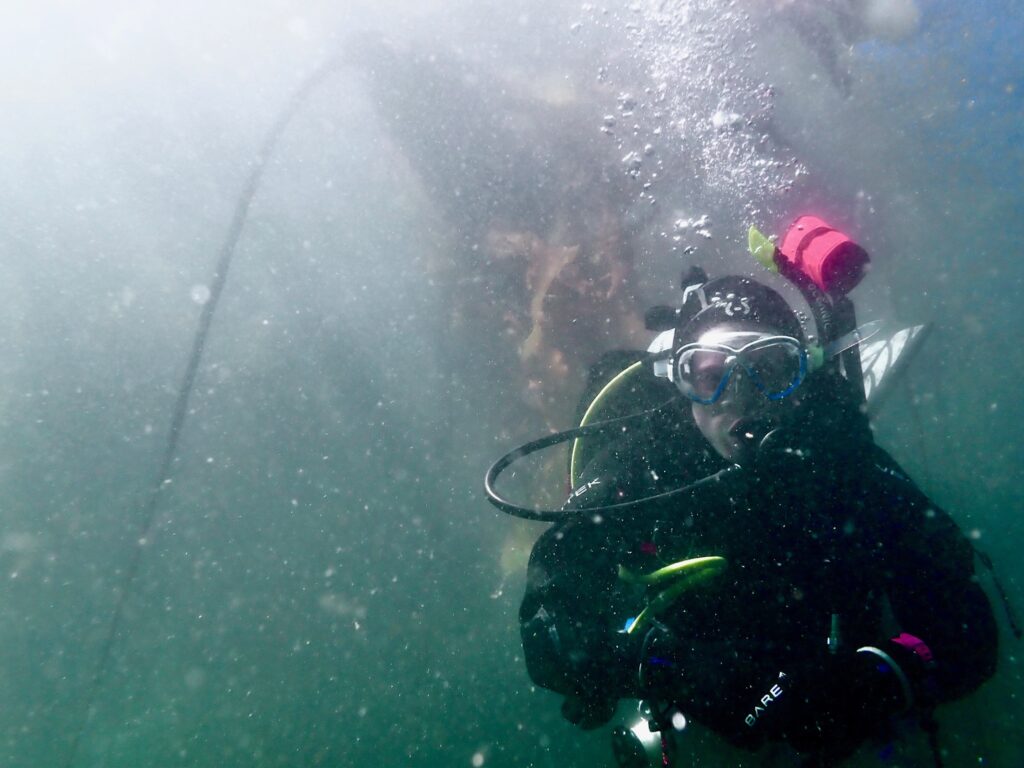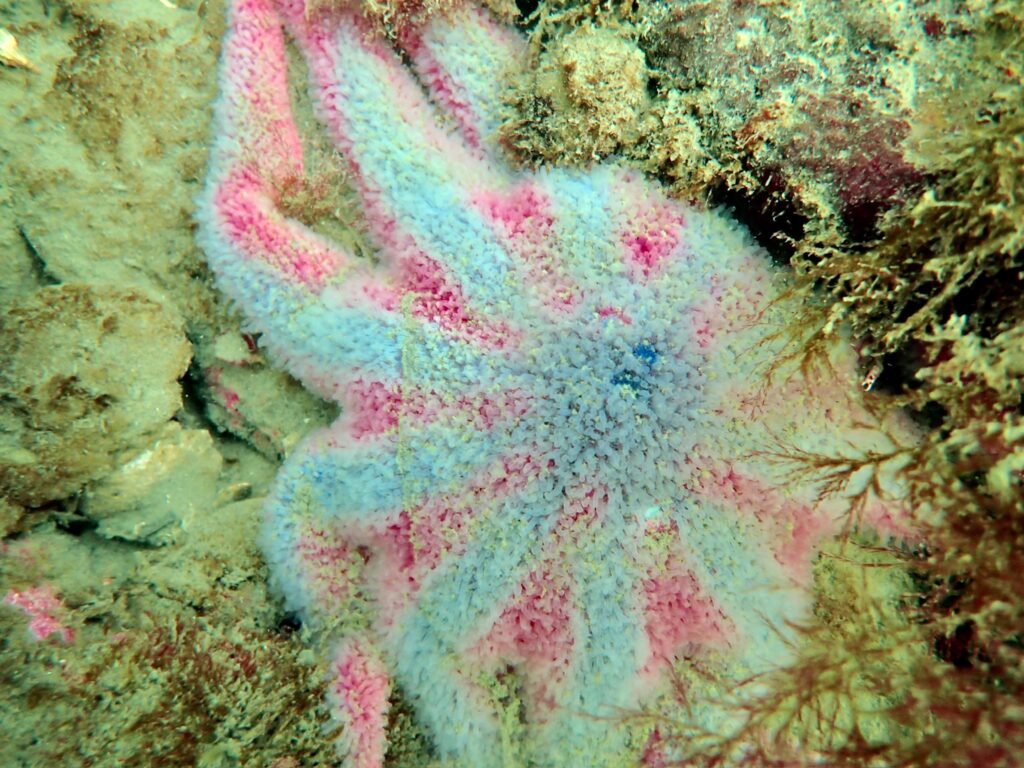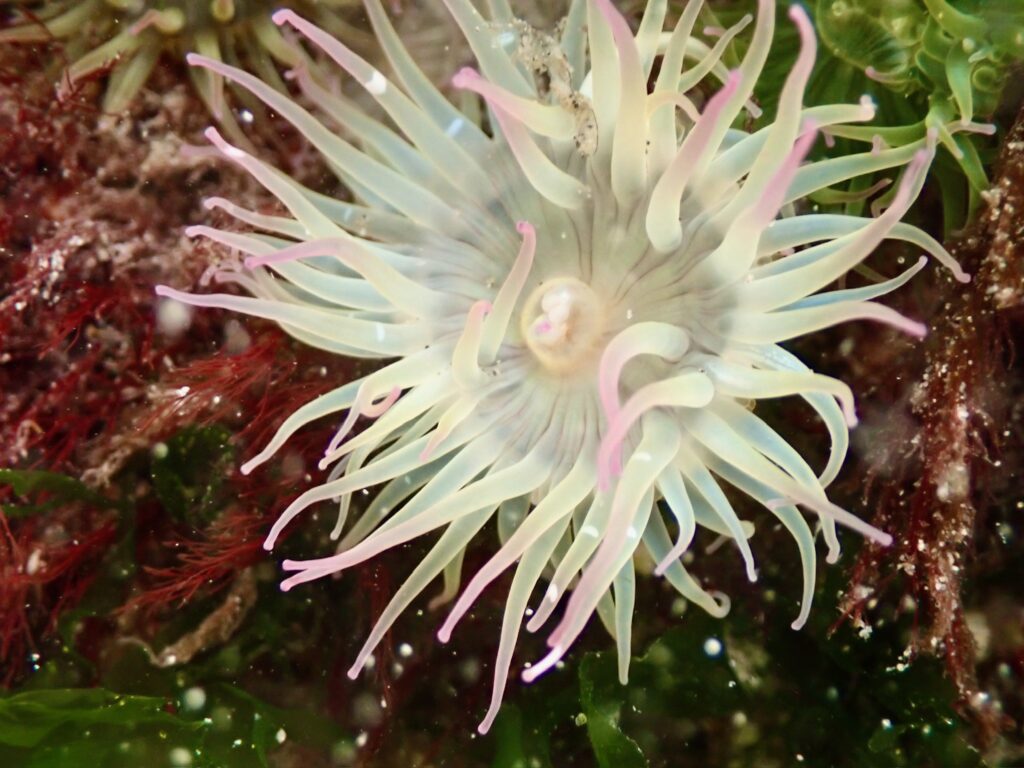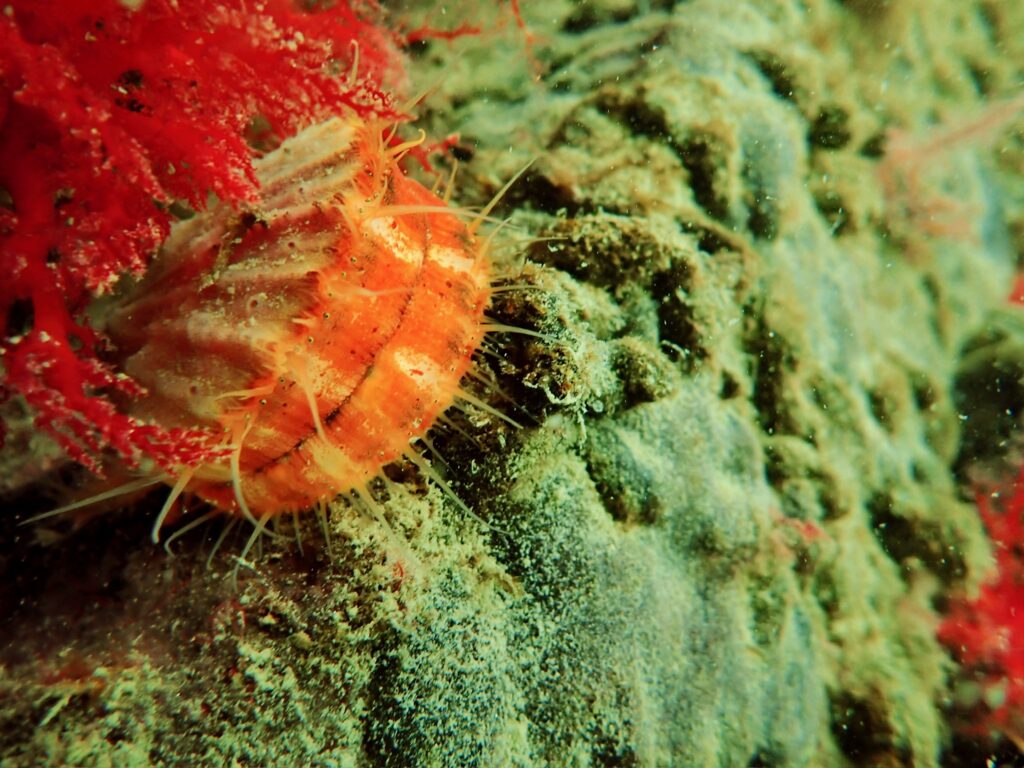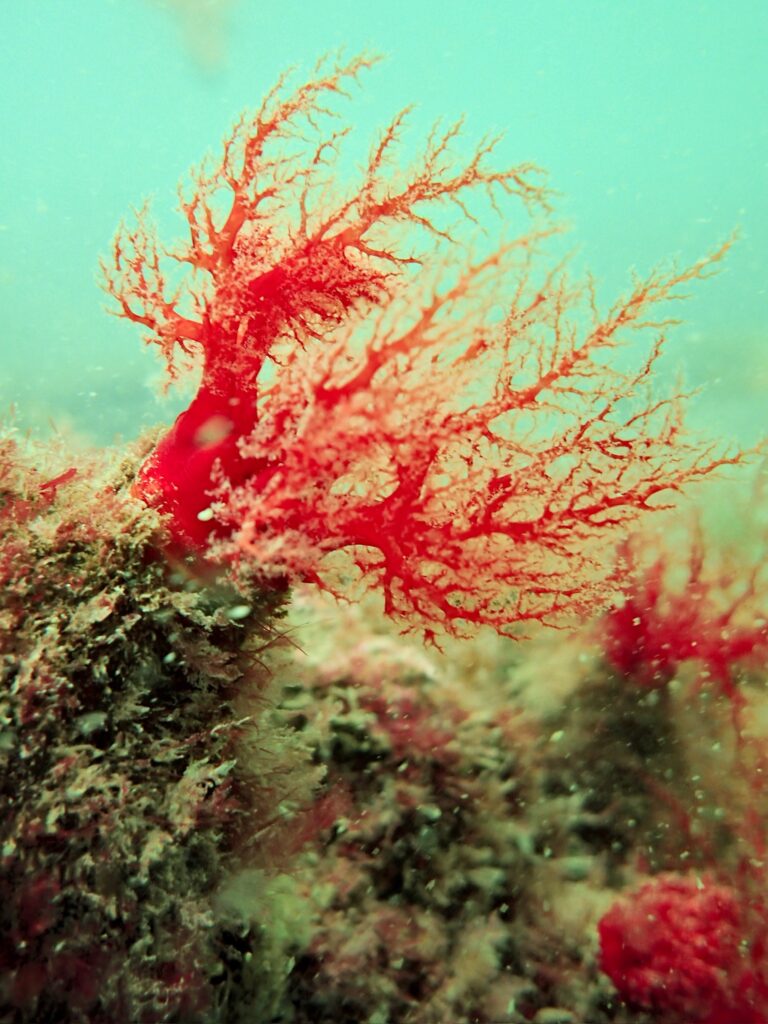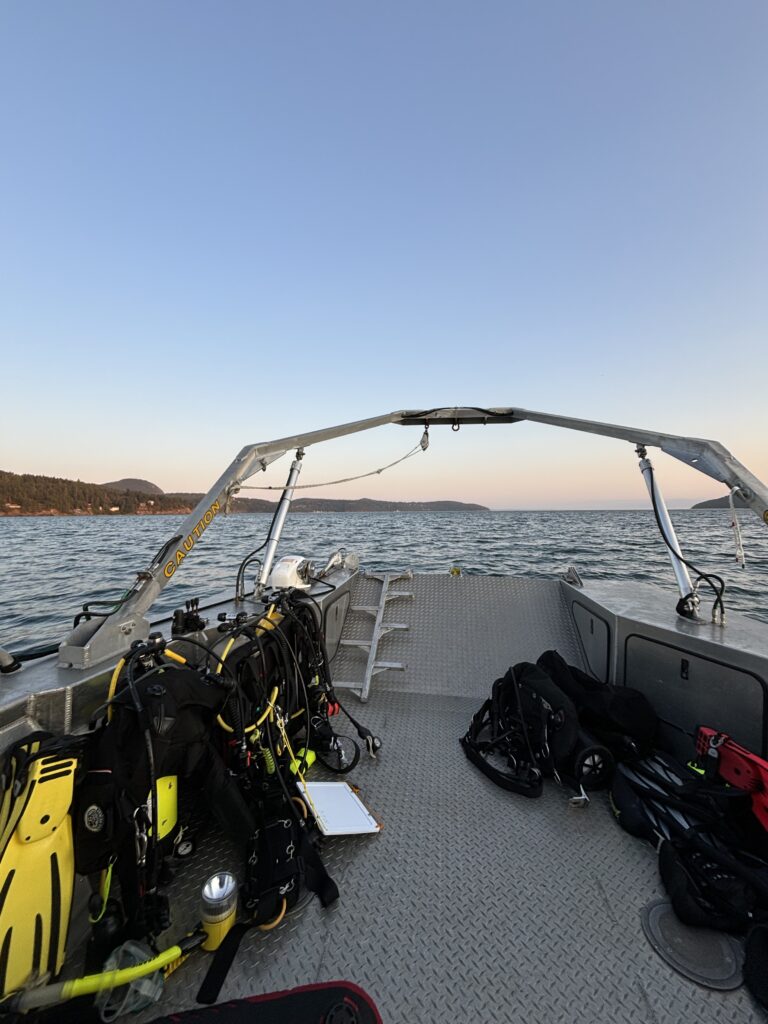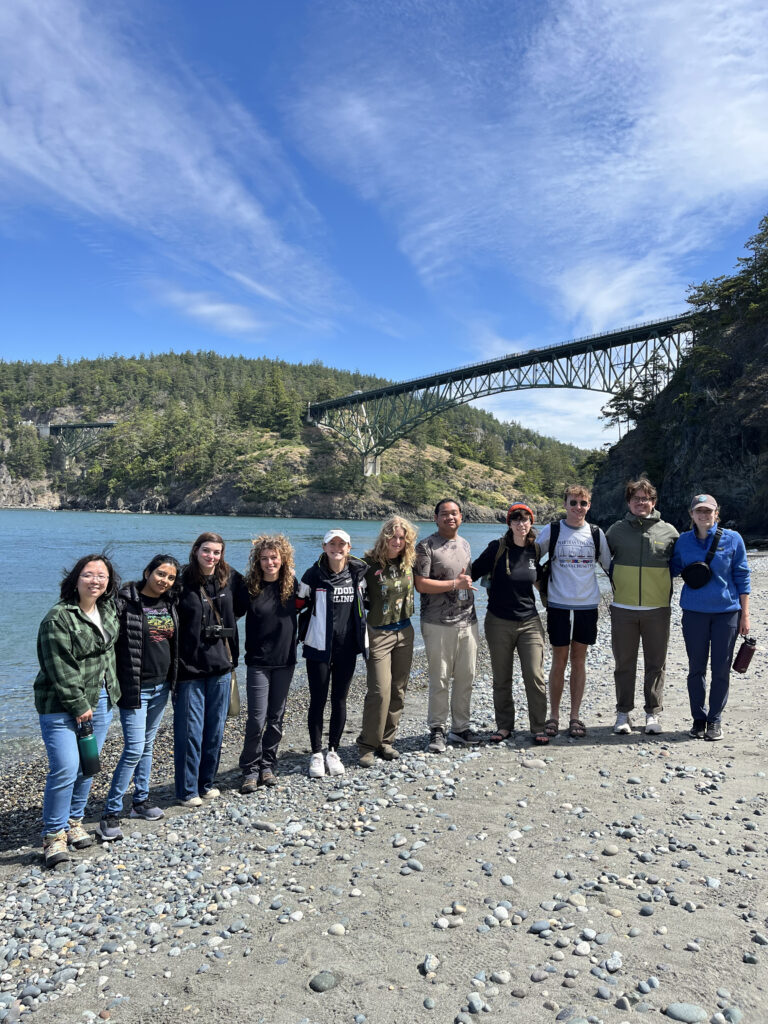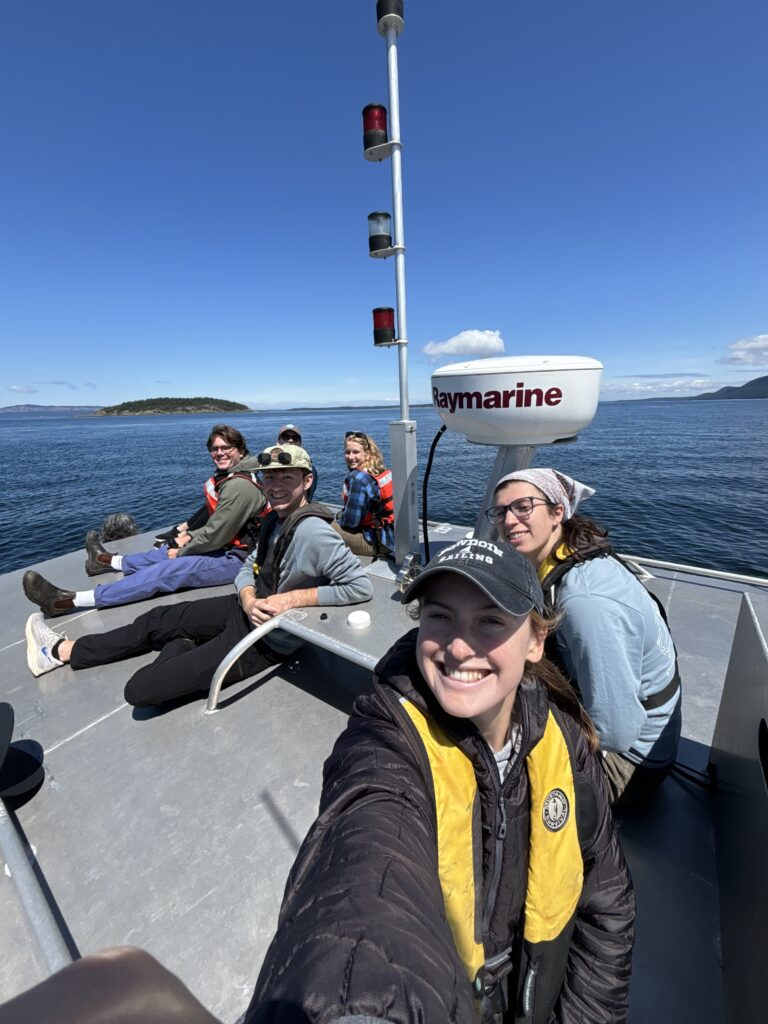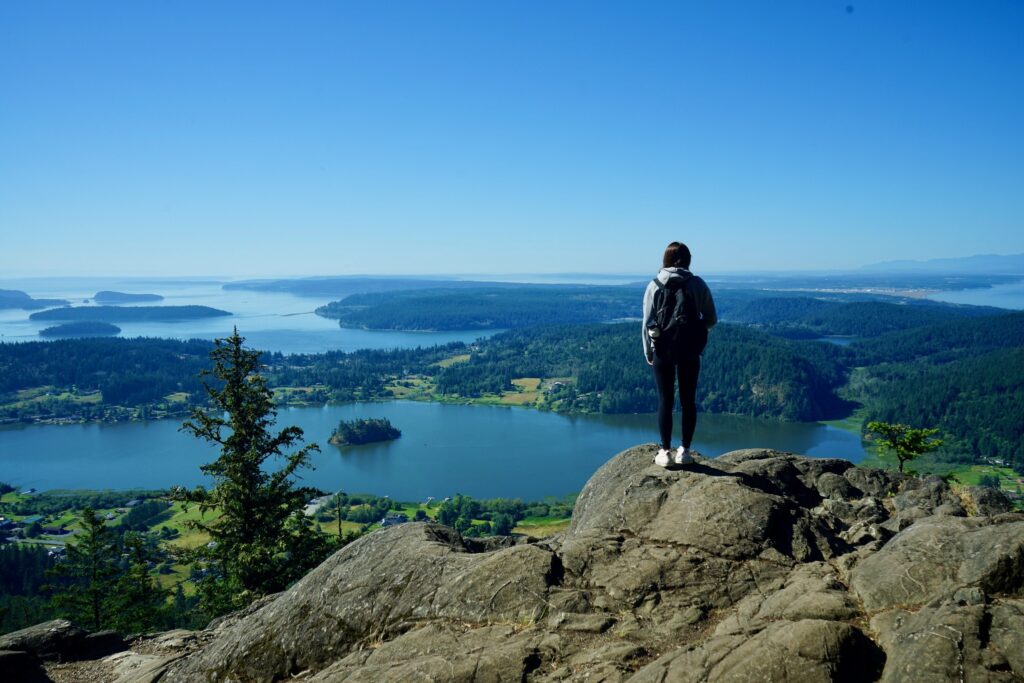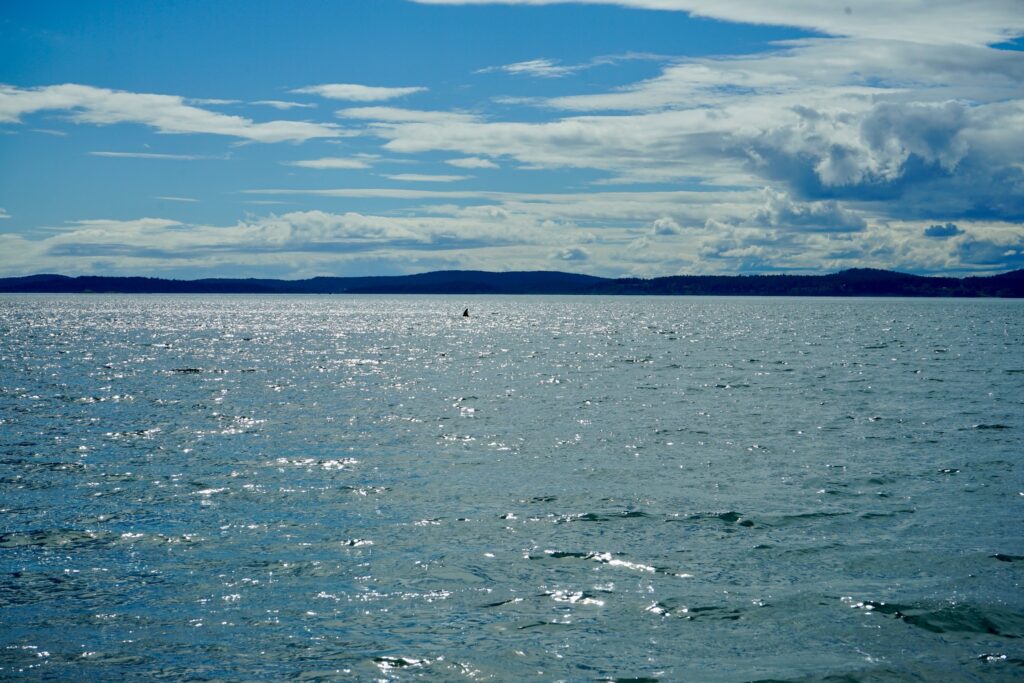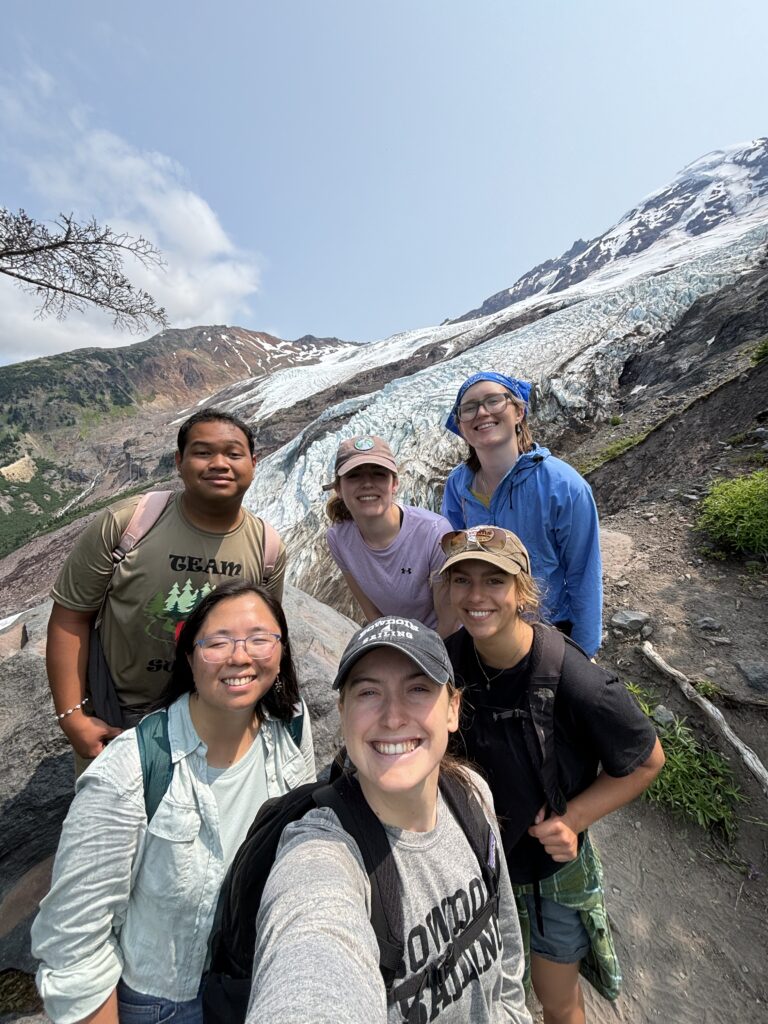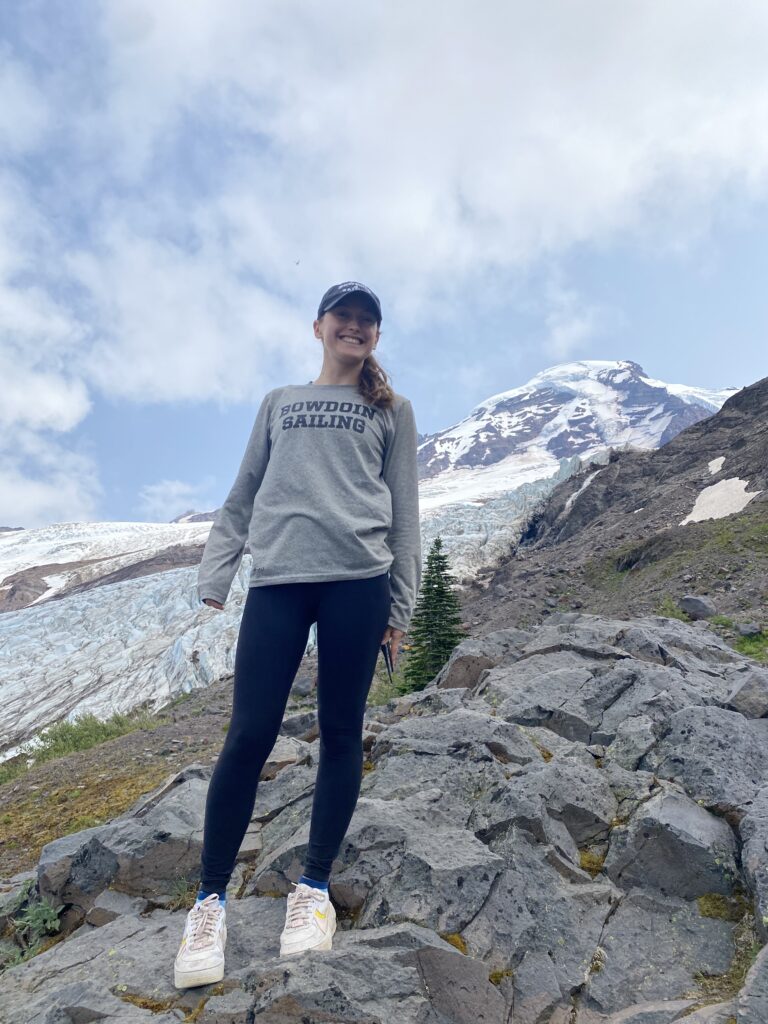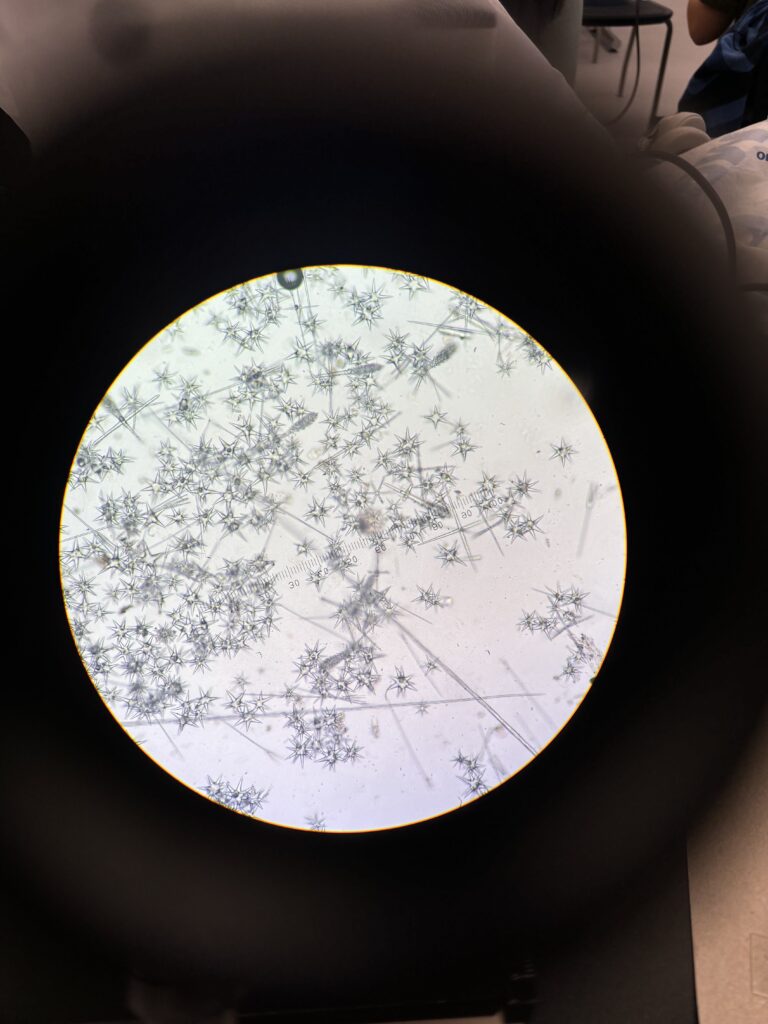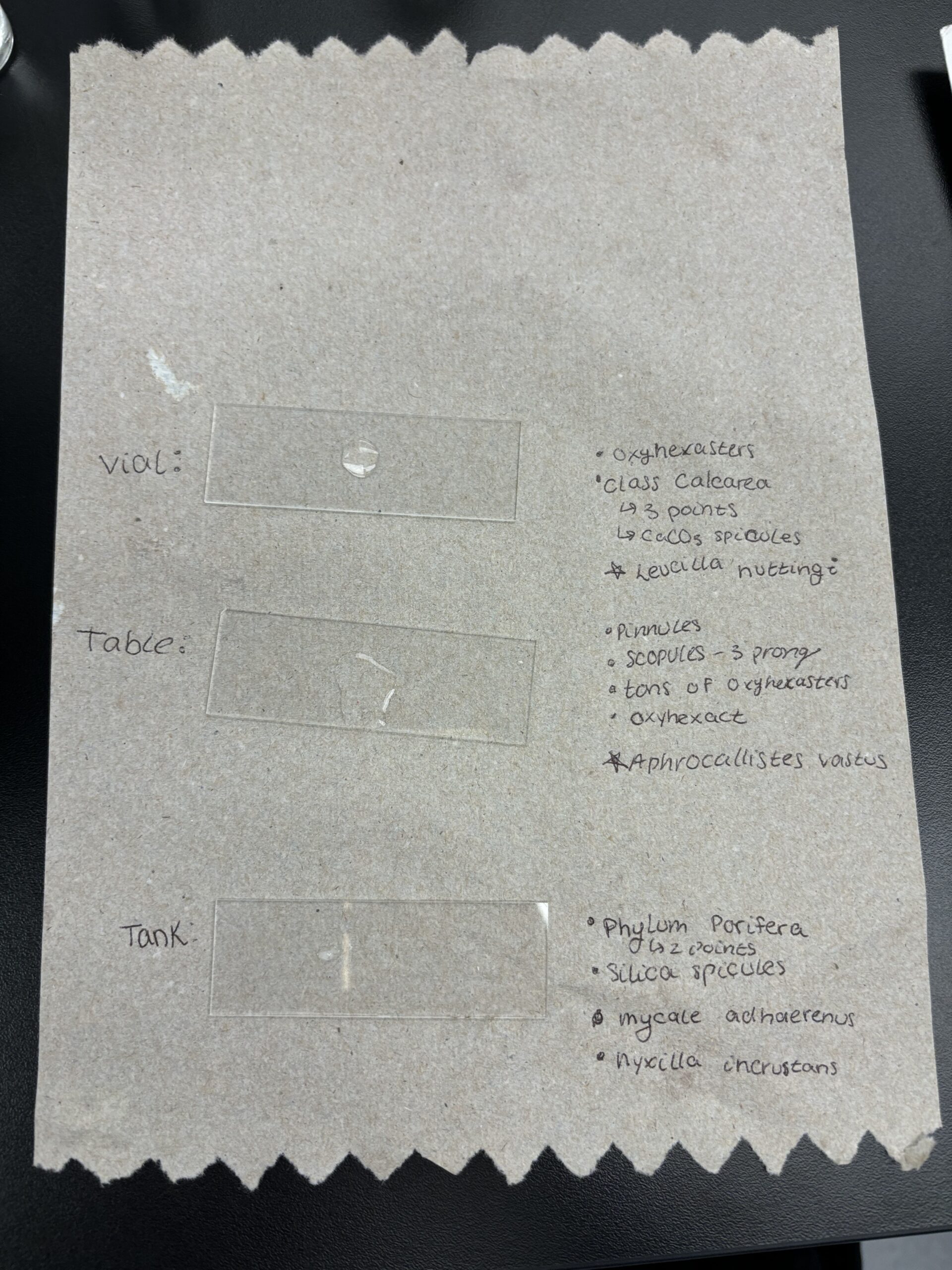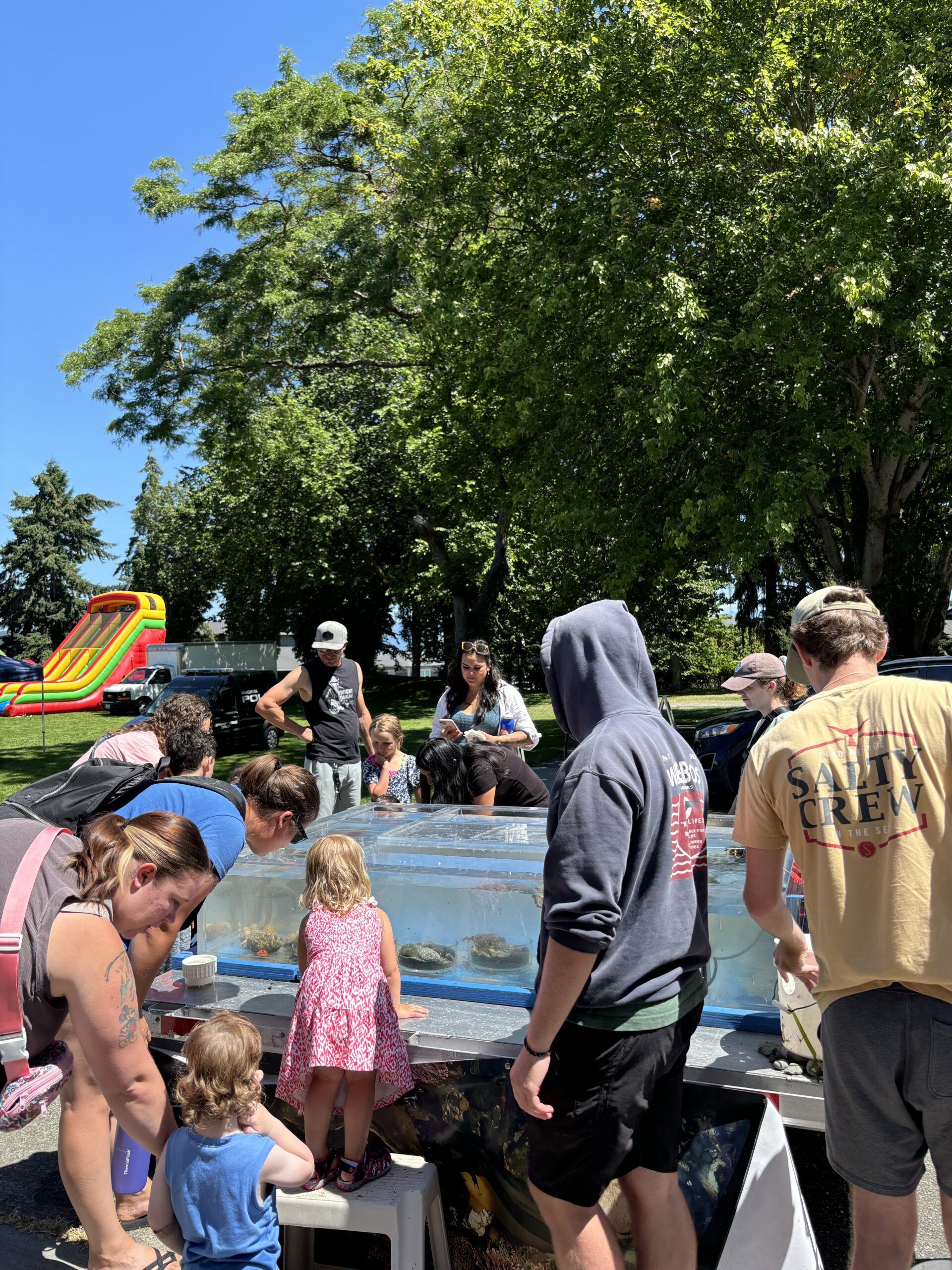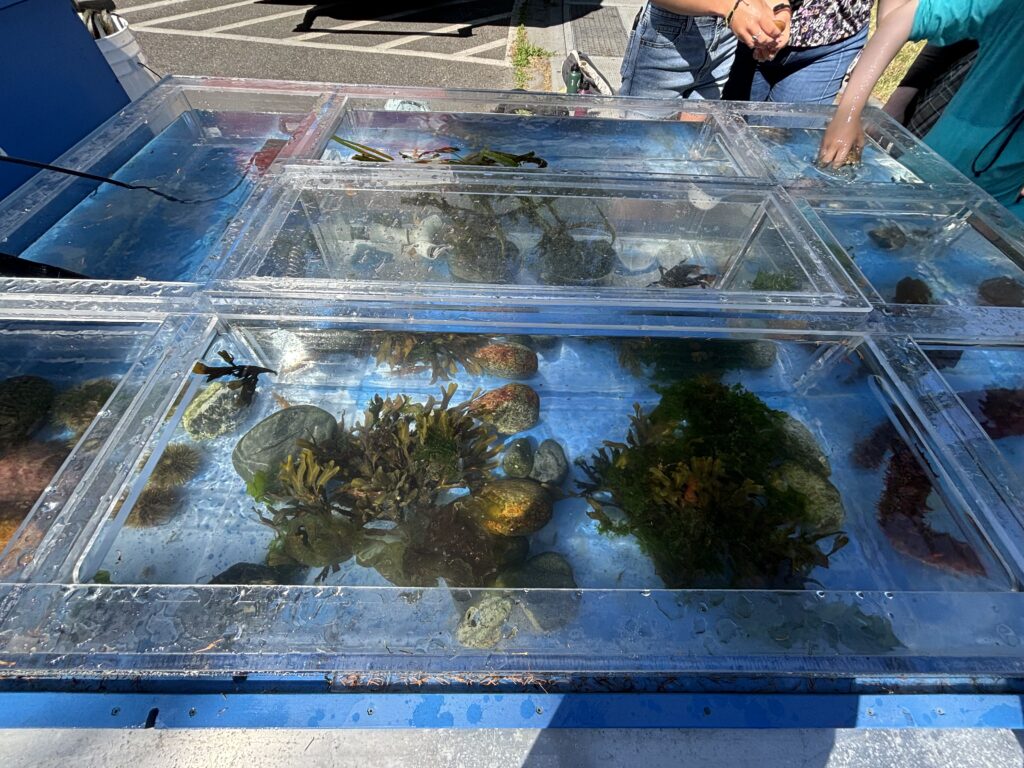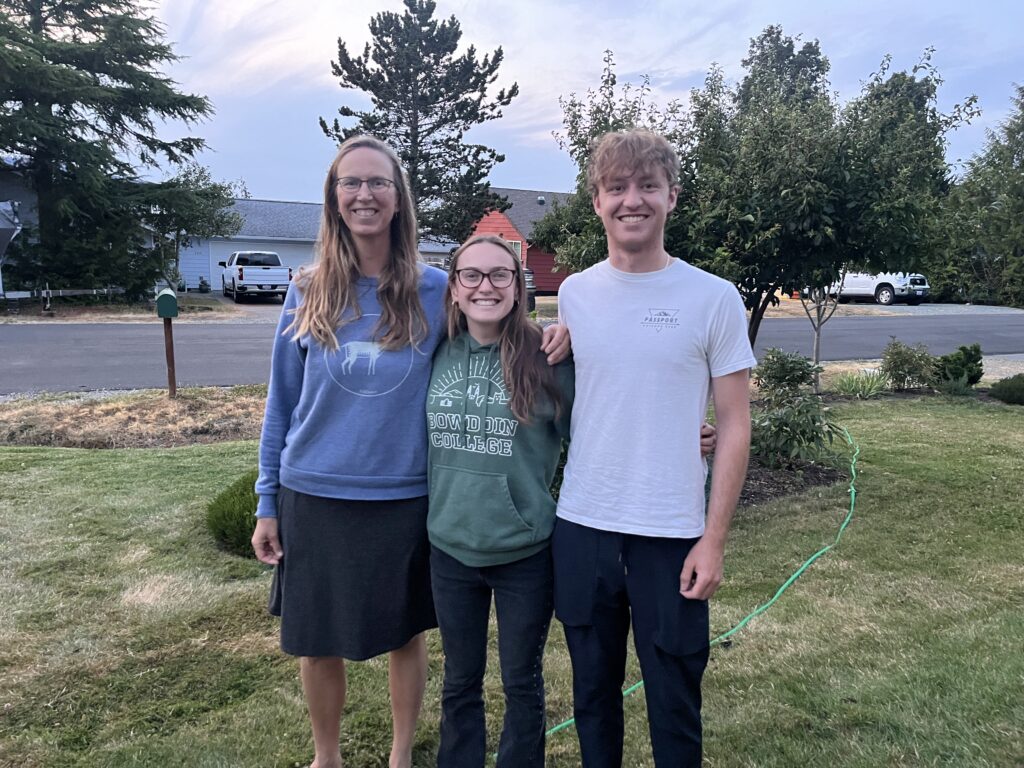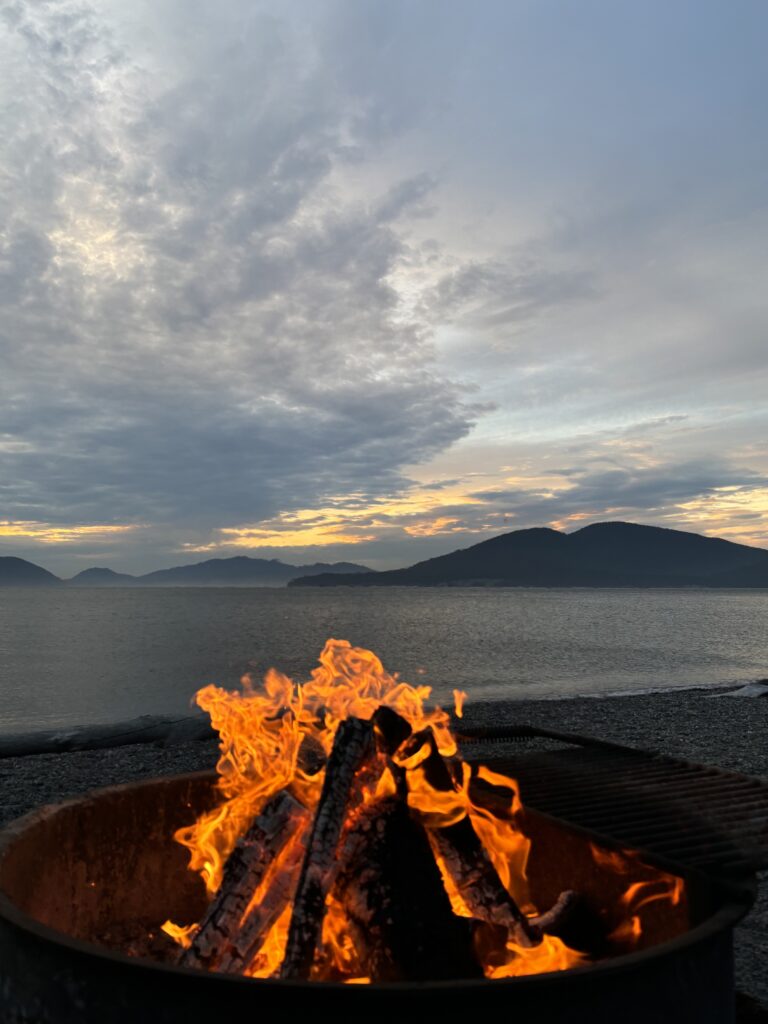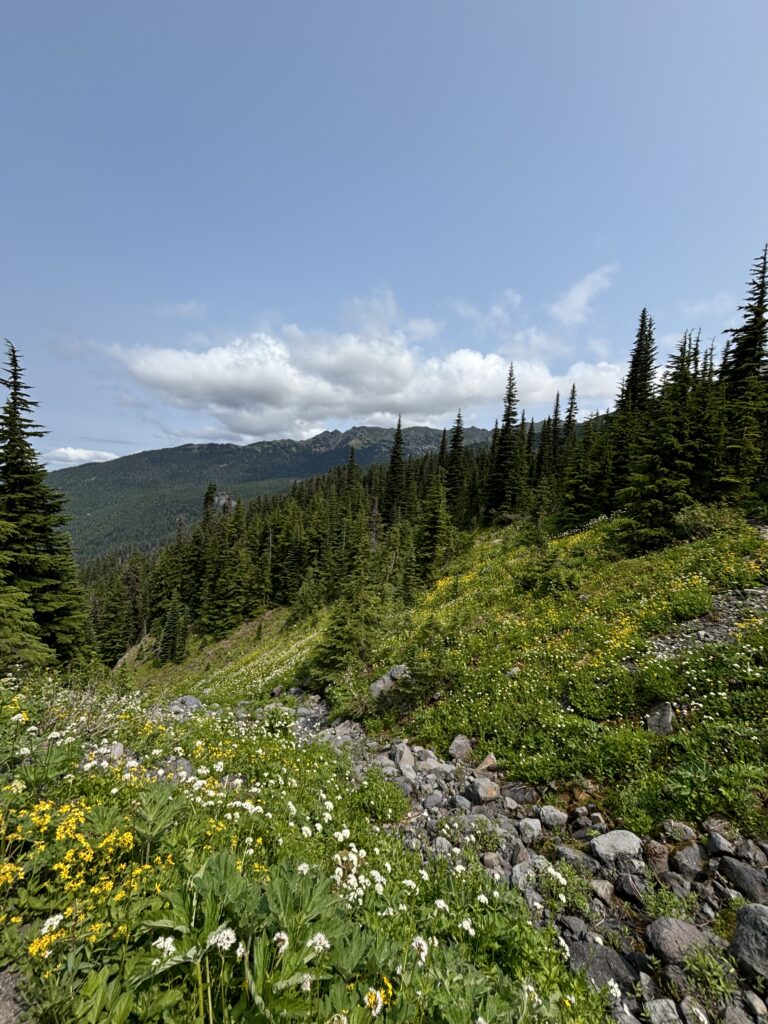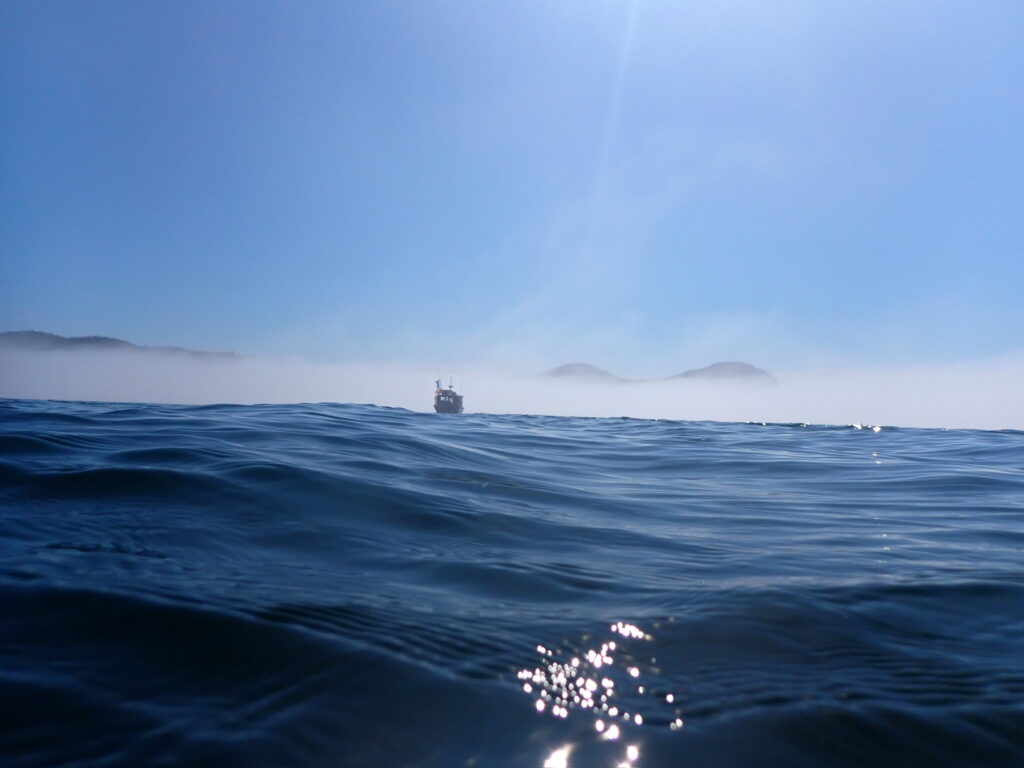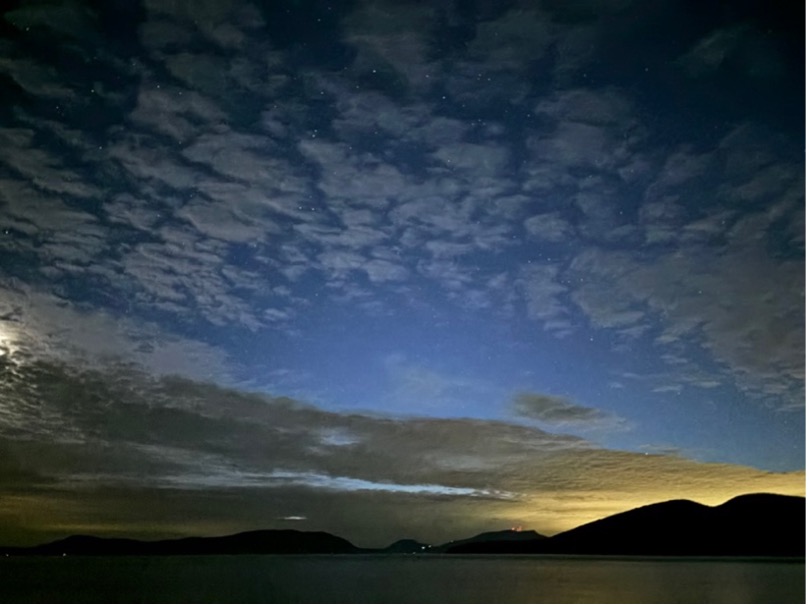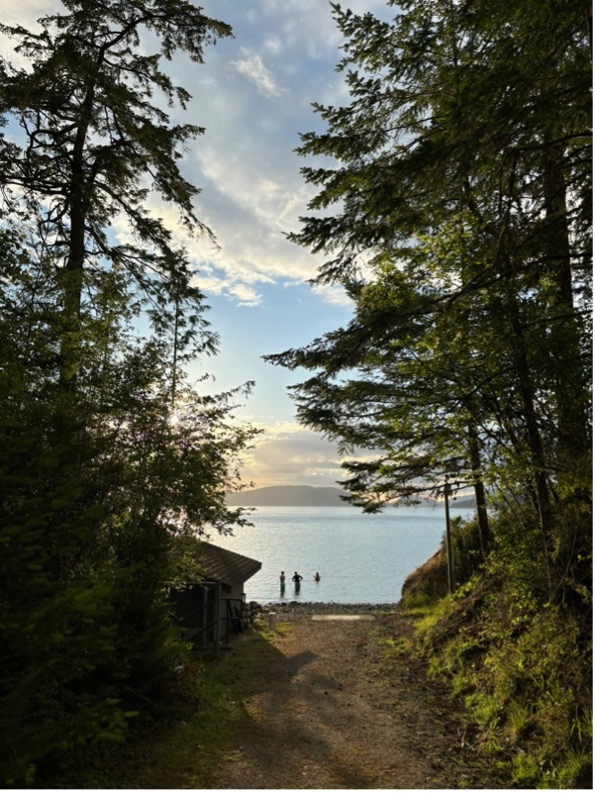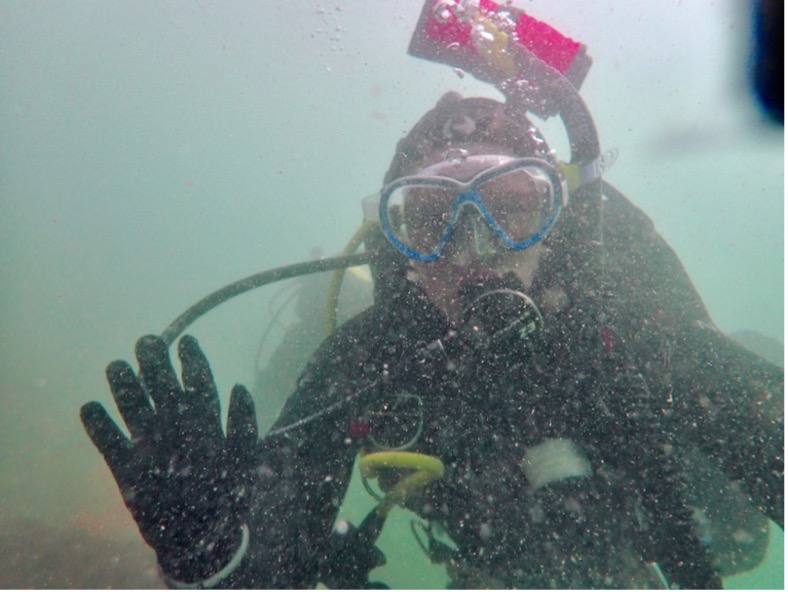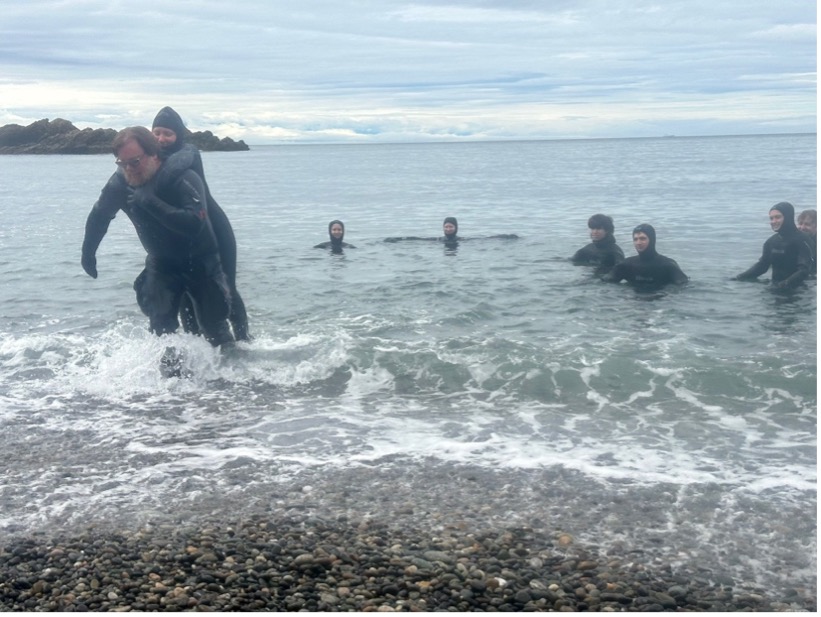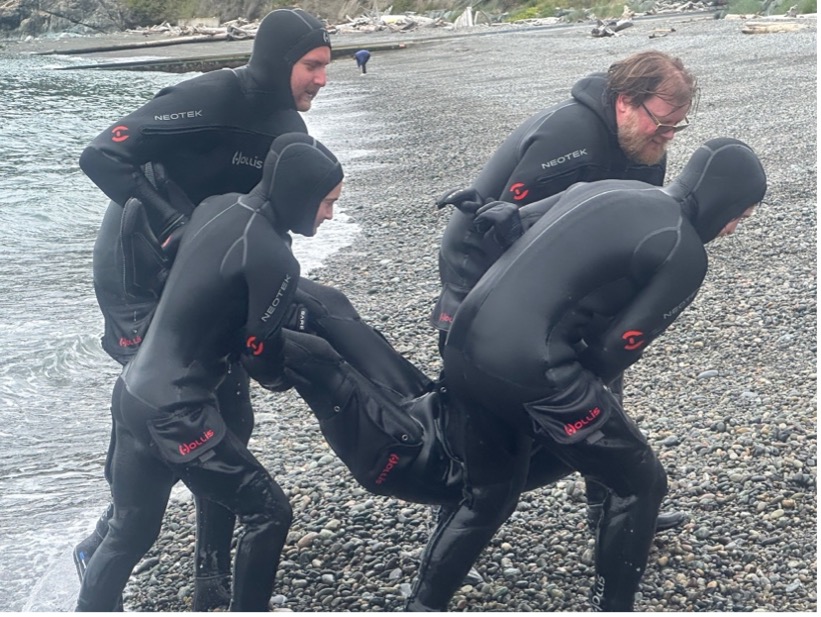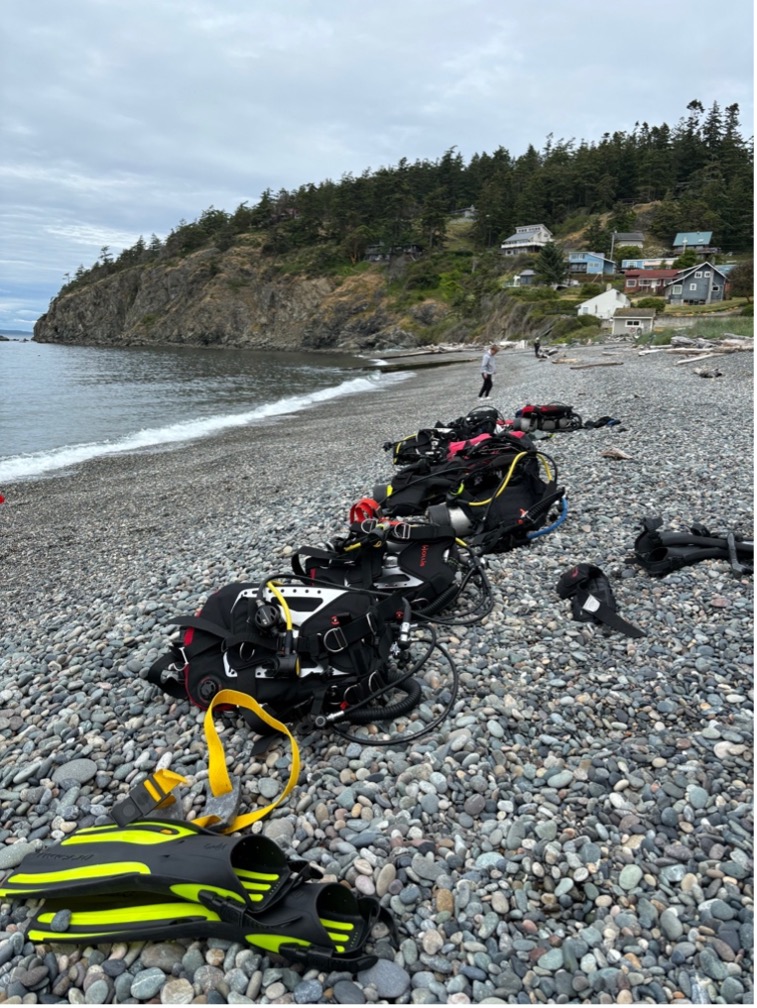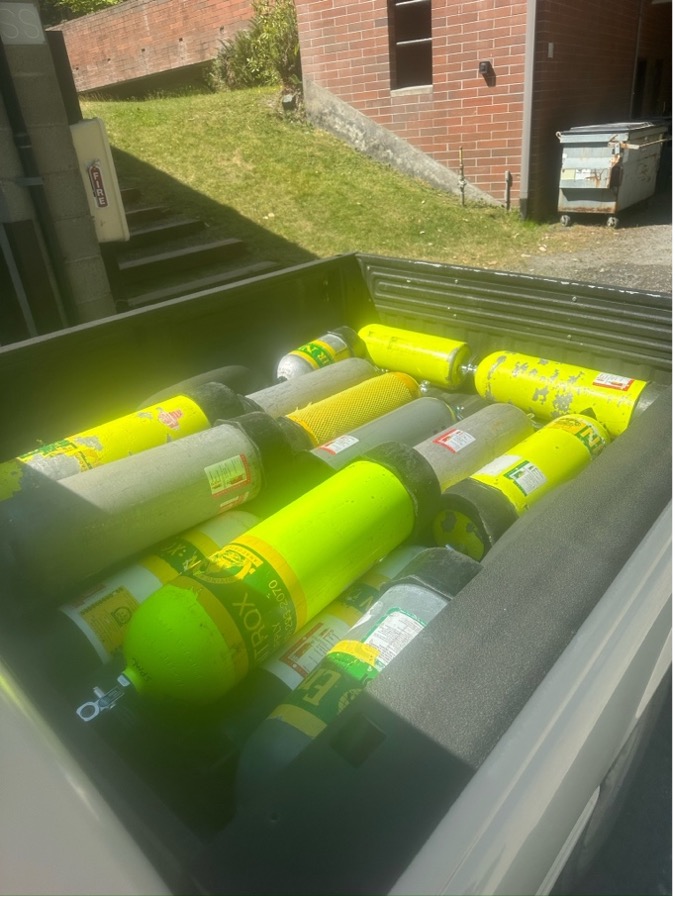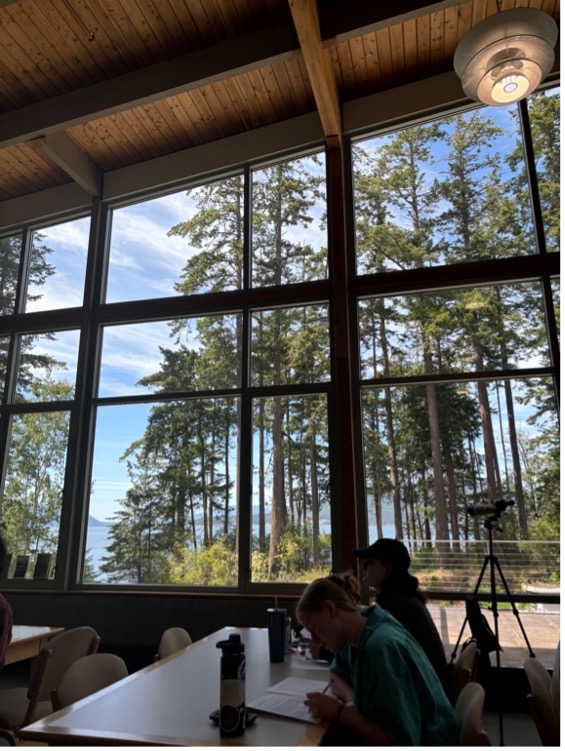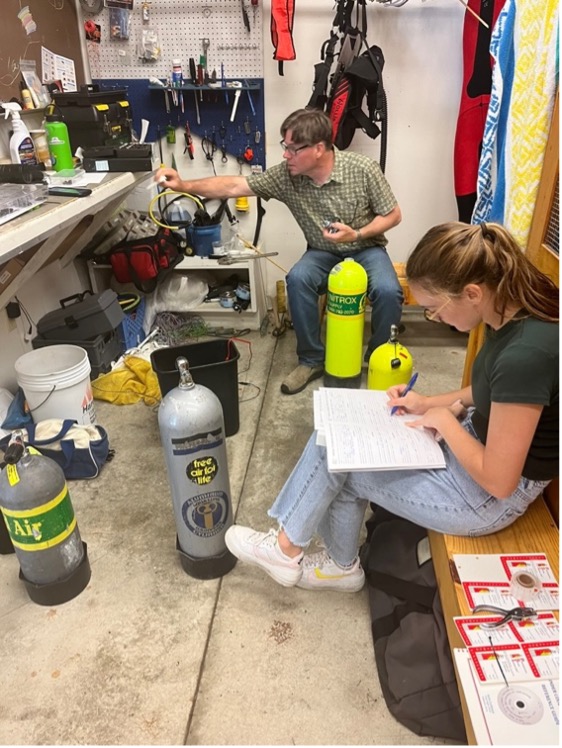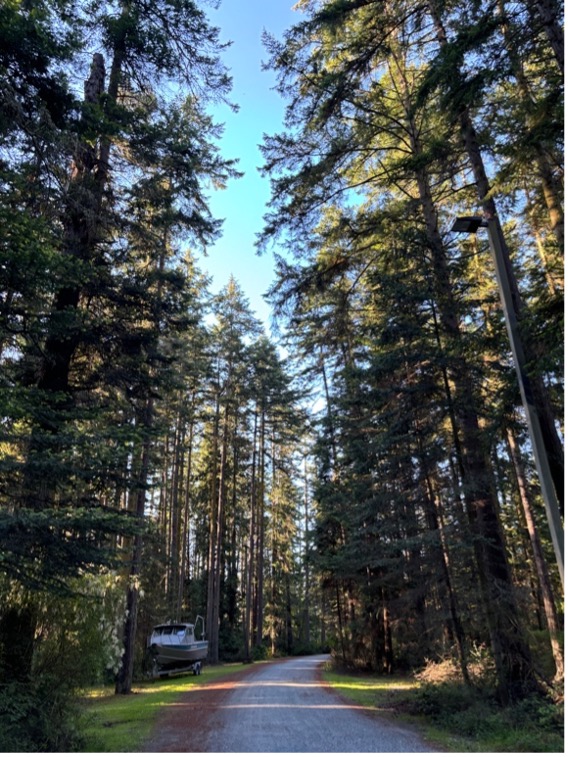Friday Harbor Adventures
July 30th, 2024 – All of the REUs and divers woke up bright and early to leave for the ferry to Friday Harbor at 5:45 am. We drove to a local nature preserve to walk around before heading to Lime Kiln. The tide was very low, and the fog rolled over the horizon. But a bunch of marine scientists still enjoyed looking at the shoreline! At Lime Kiln, our scientific dive team was assisting Jason Wood at the Sea Mammal Research Unit to deploy and move hydrophones that were capturing real time acoustics for marine mammals and noise measurements. We went down in two groups: Derek, Ayden, and Ana moved the smaller hydrophone deeper while Larkin, and I untangled the crossed cable wires disrupting the sound on the shallower hydrophone. Then the whole group moved the smaller hydrophone to a shallower, new location. It was very important that we timed the tide correctly and got our work done in a timely manner because the current was only slack for ~40 minutes.
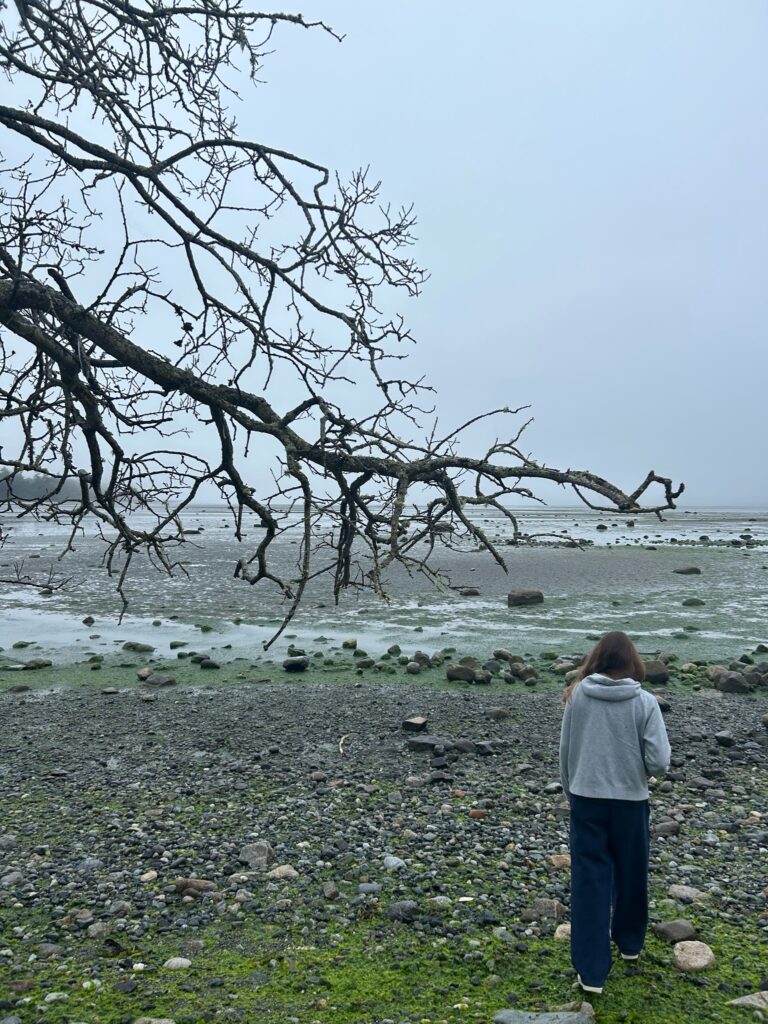
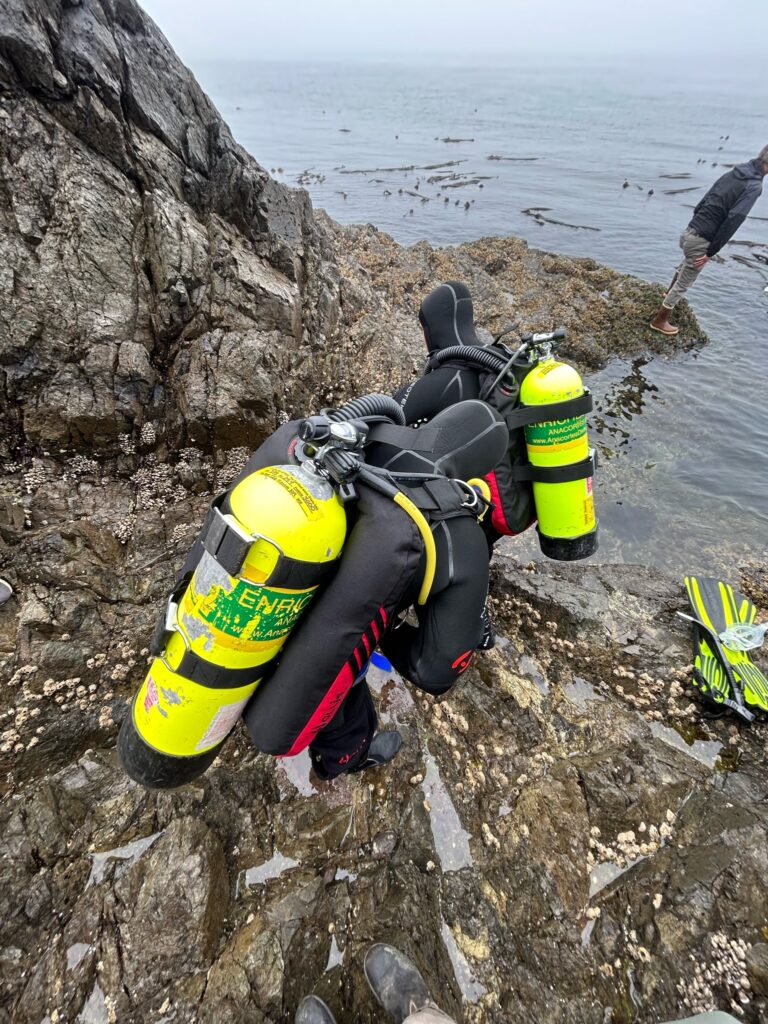
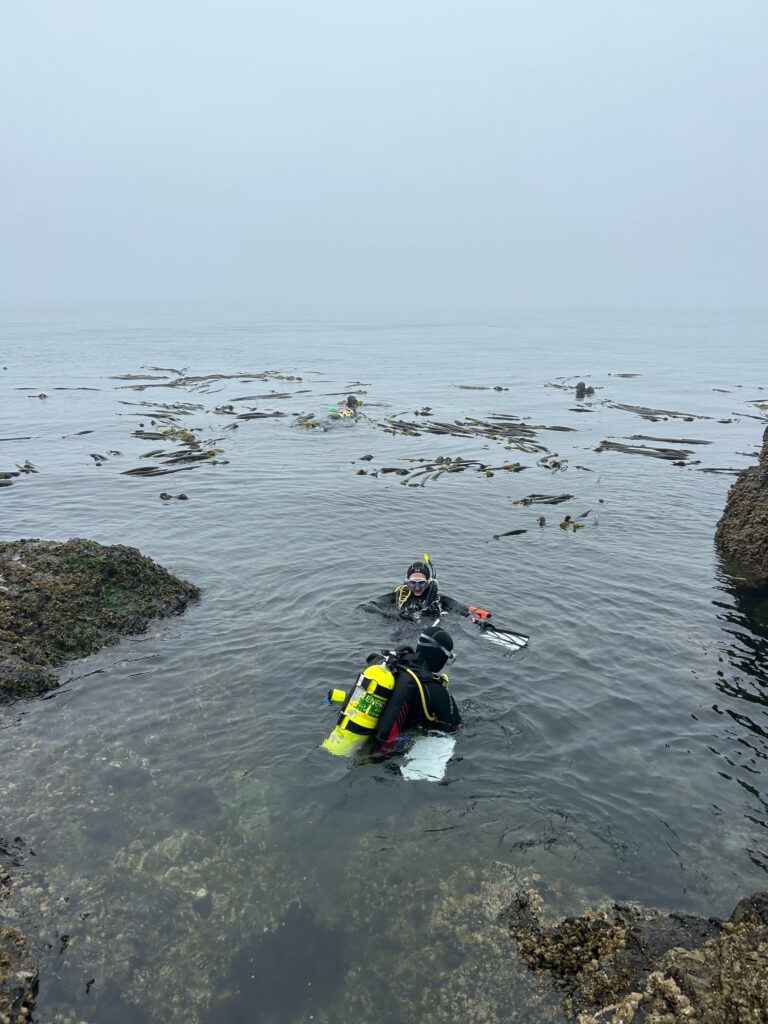
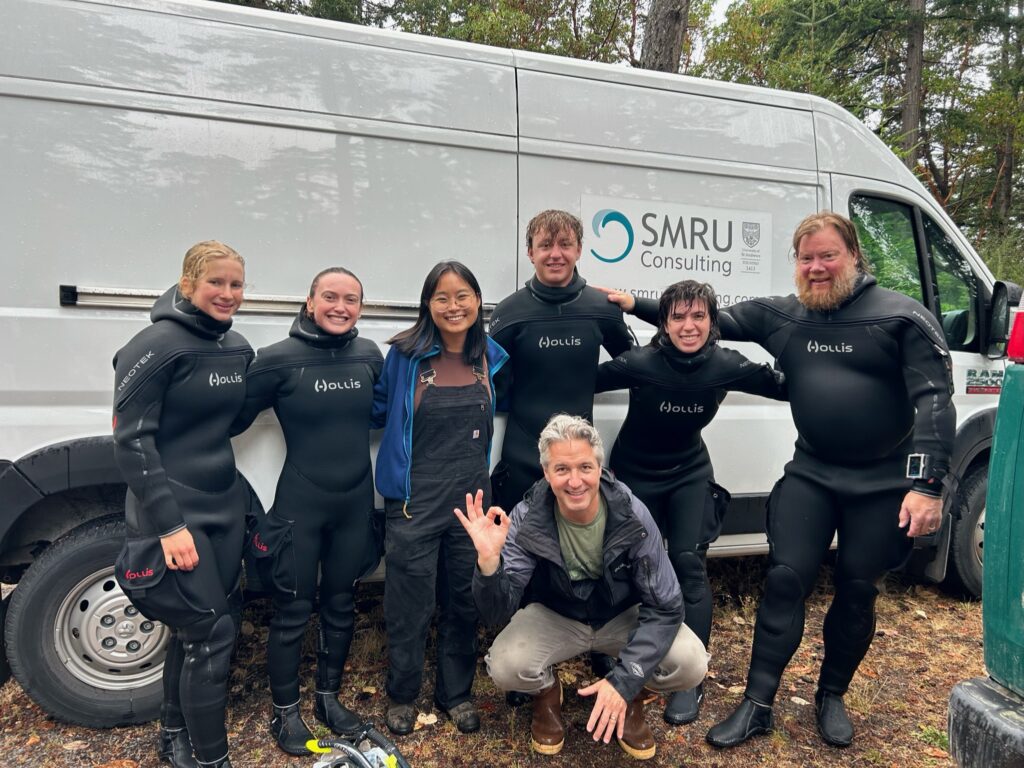
After the dive, we quickly made our way to the Friday Harbor Research Lab where we watched their summer REUs give their final presentations. Tim Dwyer gave Ayden and I a tour of the facilities including the labs and dive locker! Tim is a Bowdoin alum like me, husband to Megan Cook (2012 NA Scholar), and a teacher at Friday Harbor High School. I even met another Bowdoin graduate working on the Friday Harbor research boats: small world. As we were waiting for the ferry back to Anacortes, the group walked around Friday Harbor. It was a good time to pick up so small gifts to bring home to family and friends!
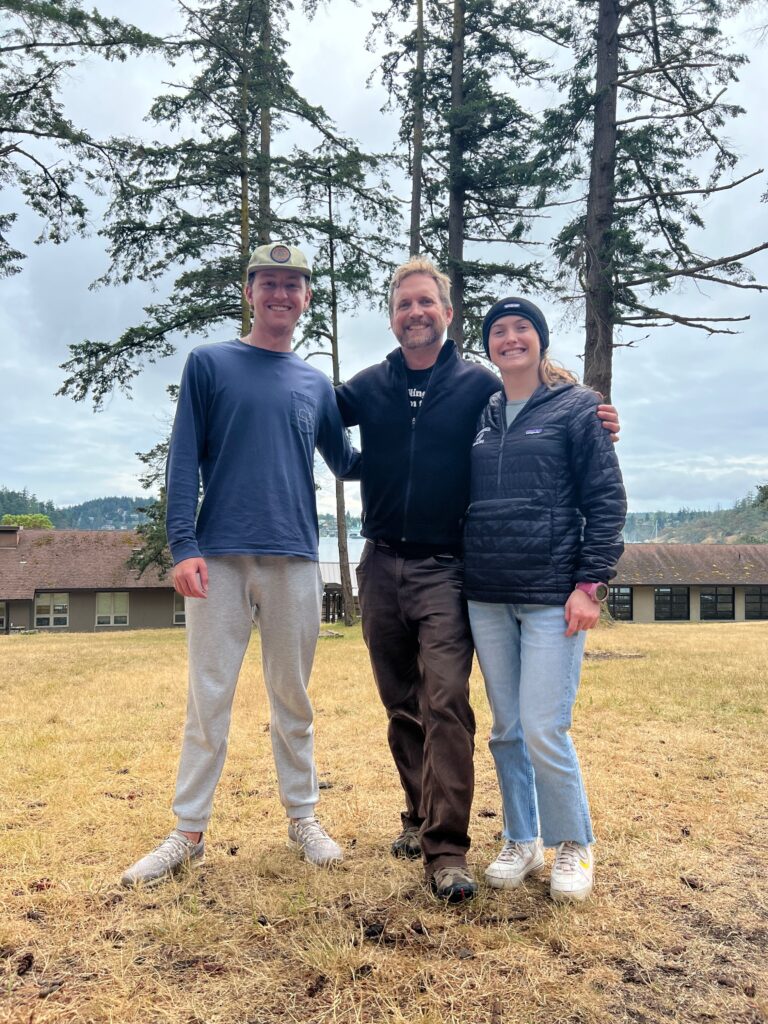
The Last Week
August 1st, 2024 – The dive team travelled to the WWU Lakewood Boathouse in Bellingham to dive Lake Whatcom. We pulled right up to the lake to unload dive gear, and it was truly a beautiful sight. We had the facilities to ourselves, and the surface water was so warm! It was about 63 degrees until 40 ft and then 42 degrees at depth. The stratification was crazy, but the water was so clear! It looked like the Caribbean. Ayden and I explored the lake and got to a maximum depth of 111 ft which is our deepest dive to date. We also assisted in collecting marine debris from right off the docks. The group found some interesting items including a bike and many pairs of sunglasses.
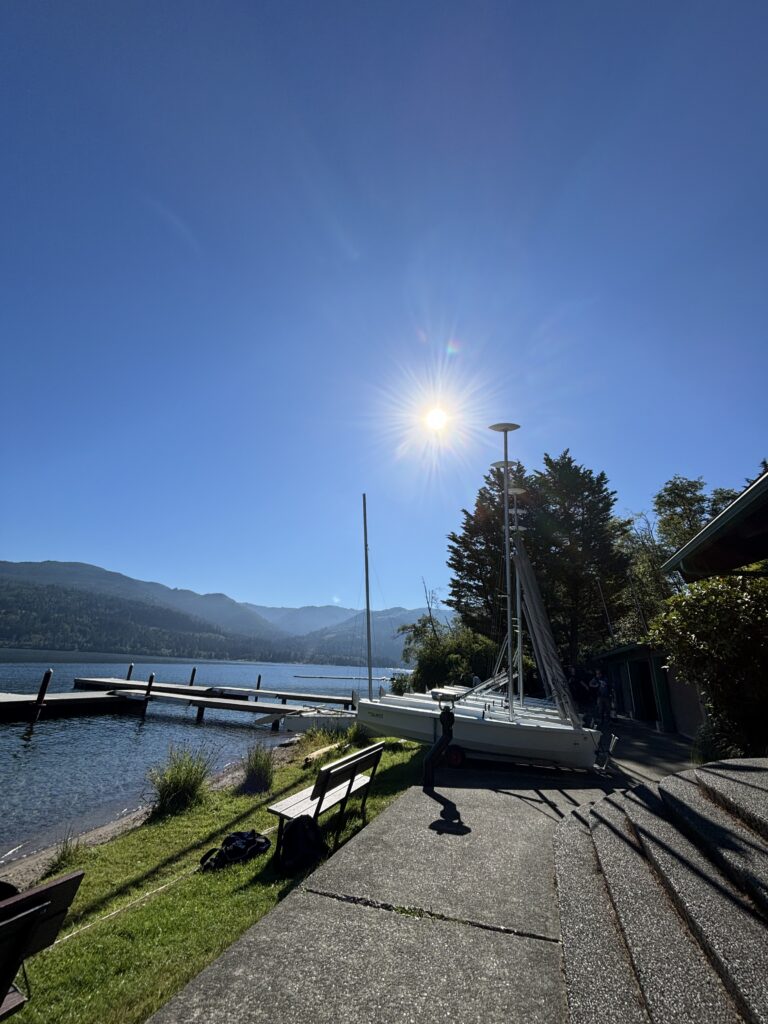
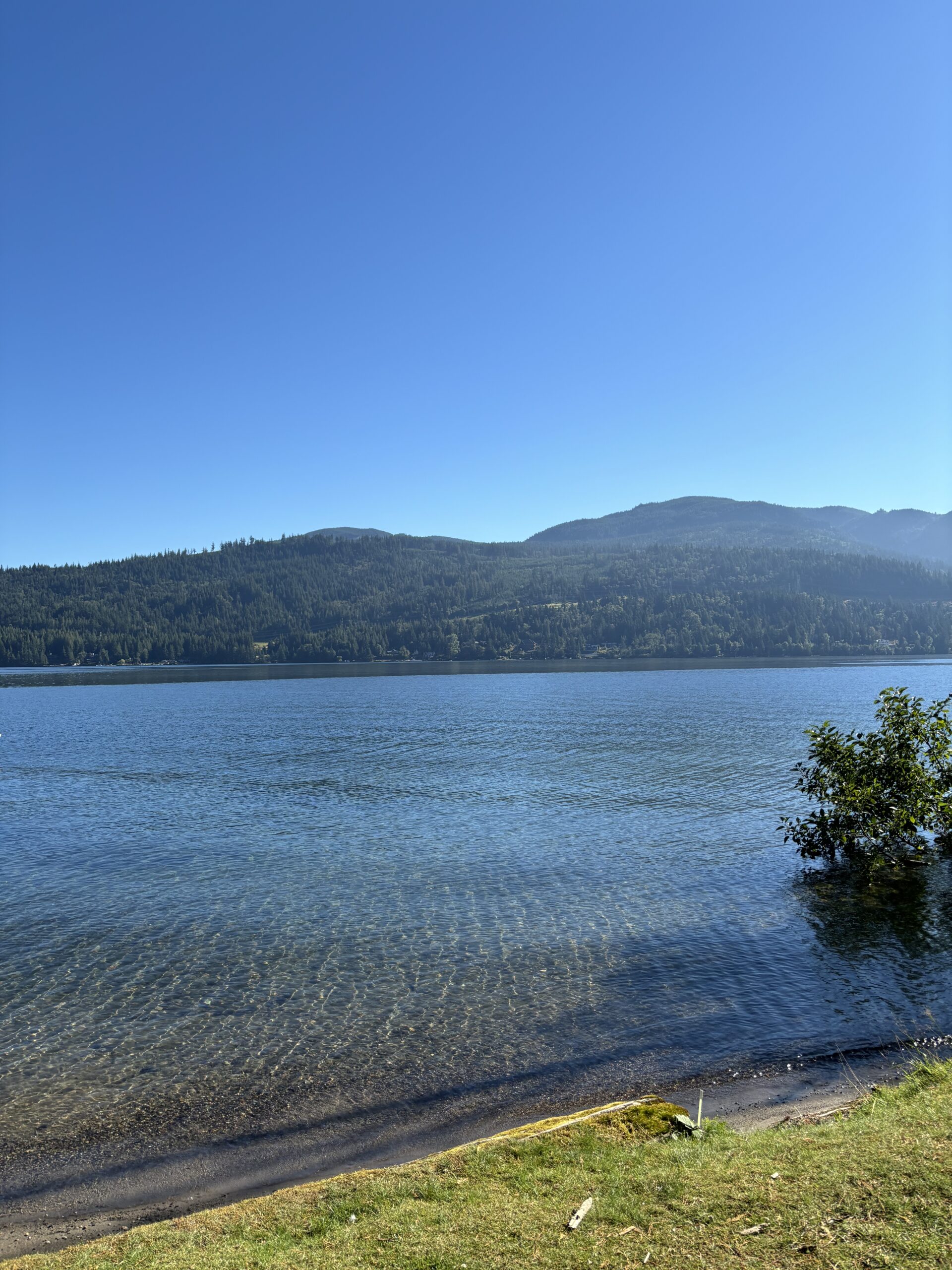
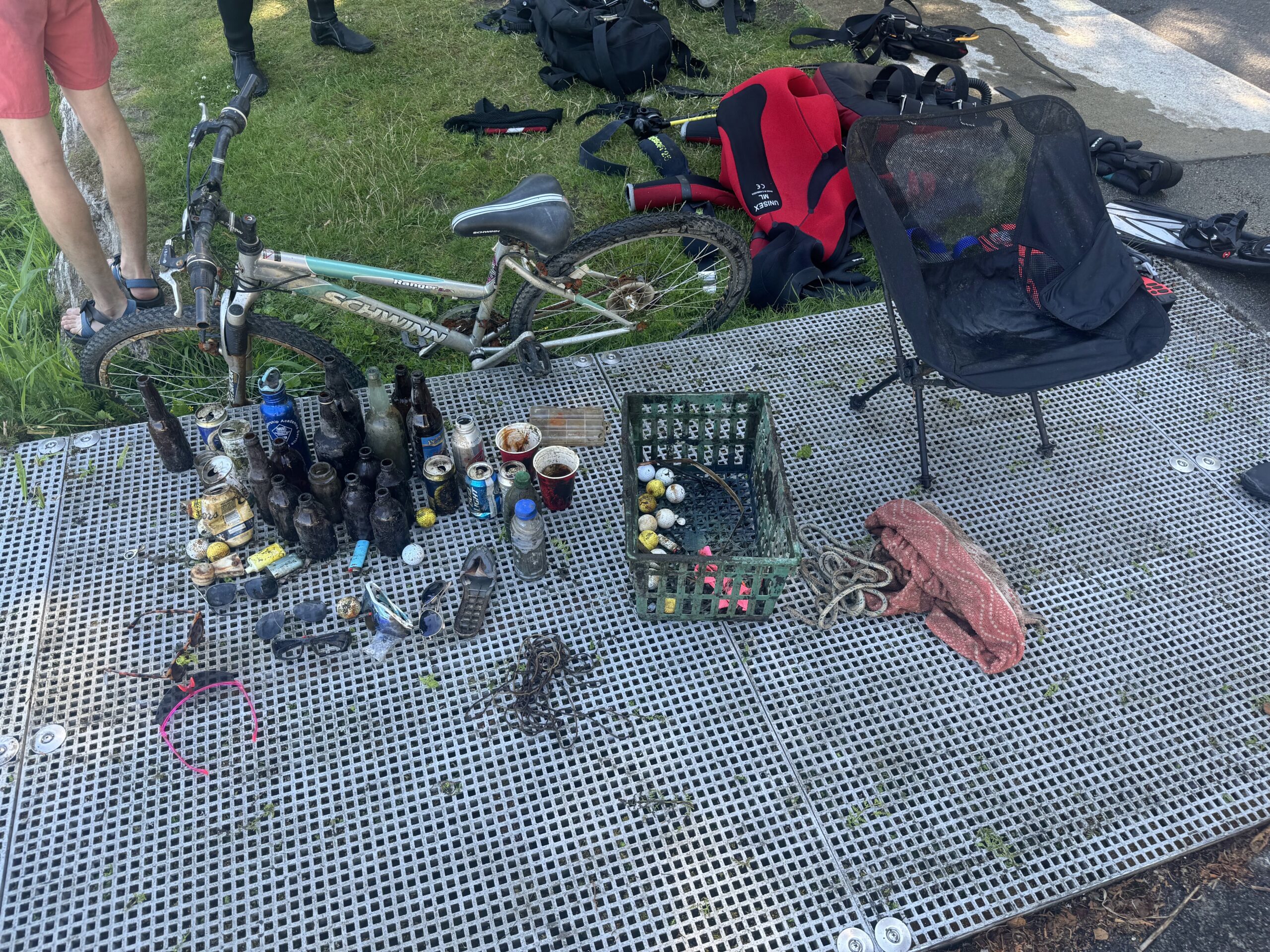
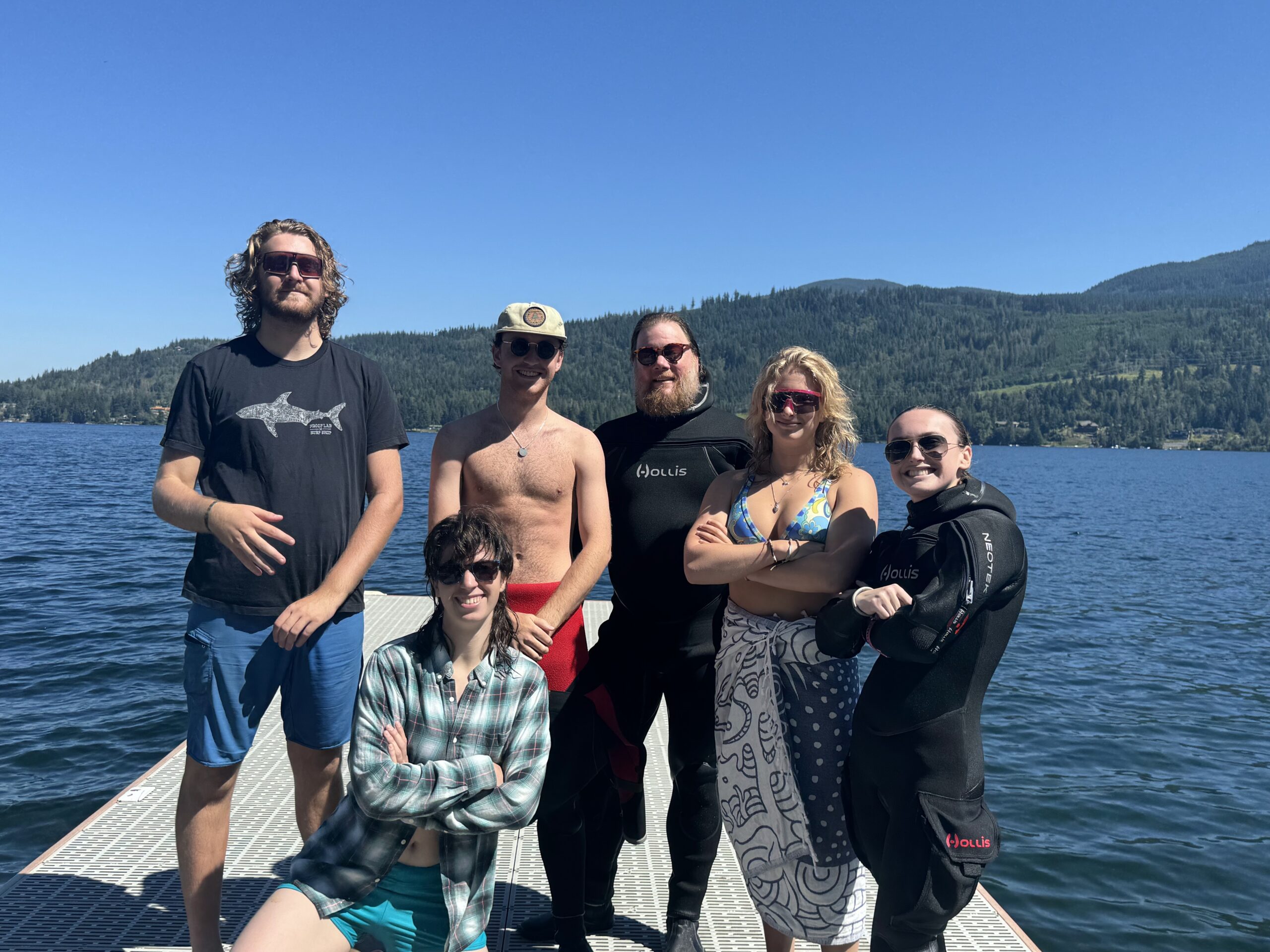
Later that afternoon, we dove right off the SPMC beach to look for good spot to outplant our additional abalone. Nate suggested we outplant in an area near the end of the intake pipes. Since it was high tide and the intake pipes are covered in kelp and algae, it took us about 15 minutes to find them. We then followed the pipes to their end, towards the center of the bay and searched for a suitable habitat to place our precious abalone. The end of the intake pipes were close to the channel which has a lot of boat traffic including ferries. It was very important for us to stay at depth and properly place our dive flag float. On our way back to shore we saw a Giant Pacific Octopus hiding in the kelp! I almost touched it while I was detangling our SMB from some kelp because it was camouflaged so well! We were all so excited as it was on our Pacific Northwest bucket list.
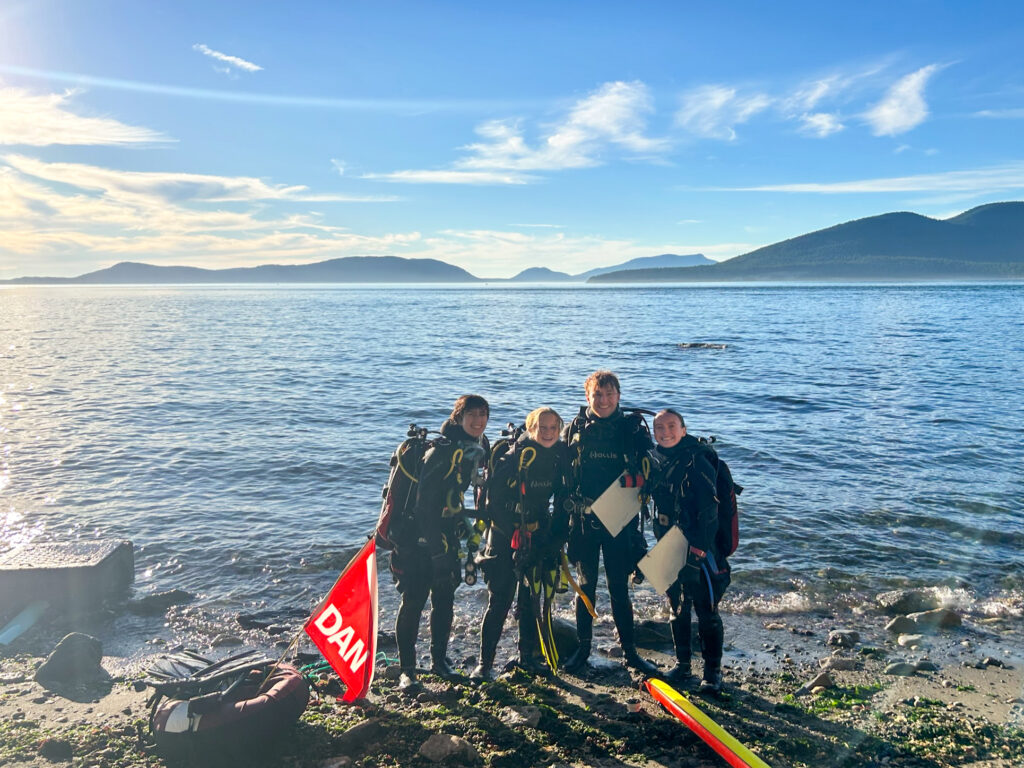
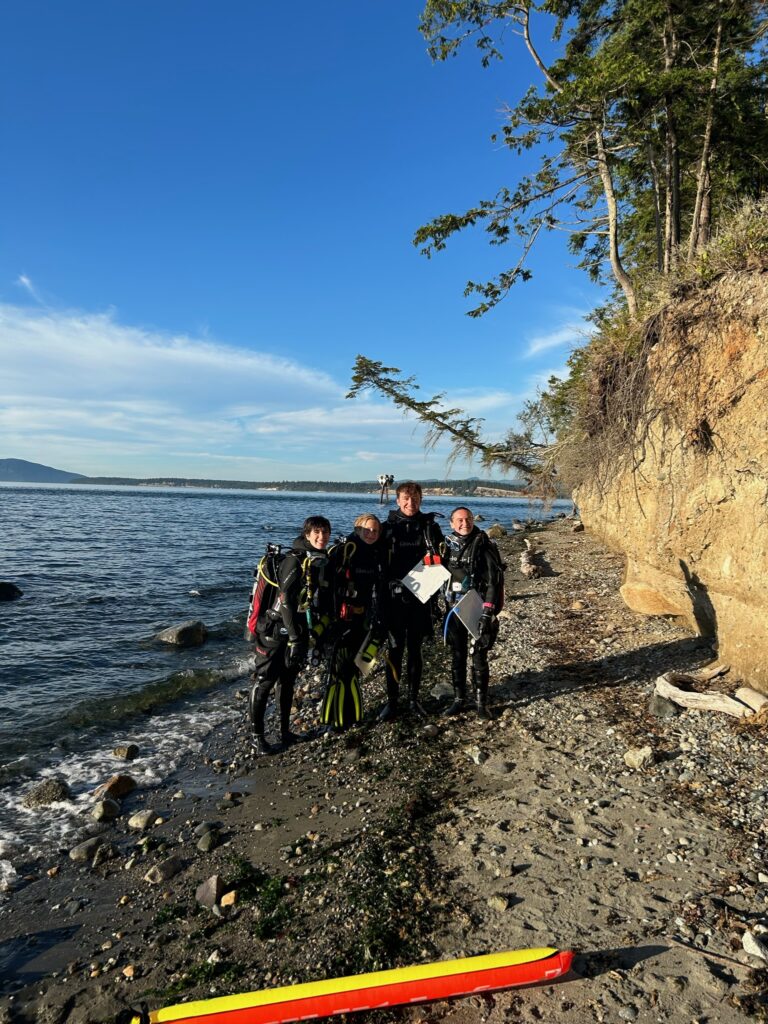
August 3rd, 2024 – The Art Show in Anacortes was a nice way to round out the internship. The local artists really produce beautiful work from wood cravings to clothing to paintings. Some of my favorite pieces were the wood carved bathymetry maps of the Salish Sea and the abstract landscape paintings of the pacific northwest. Brian also took us to see the boat that was used in Pirates of the Caribbean because it was docked near SPMC. We spent the last week soaking up the beautiful WA summer weather.
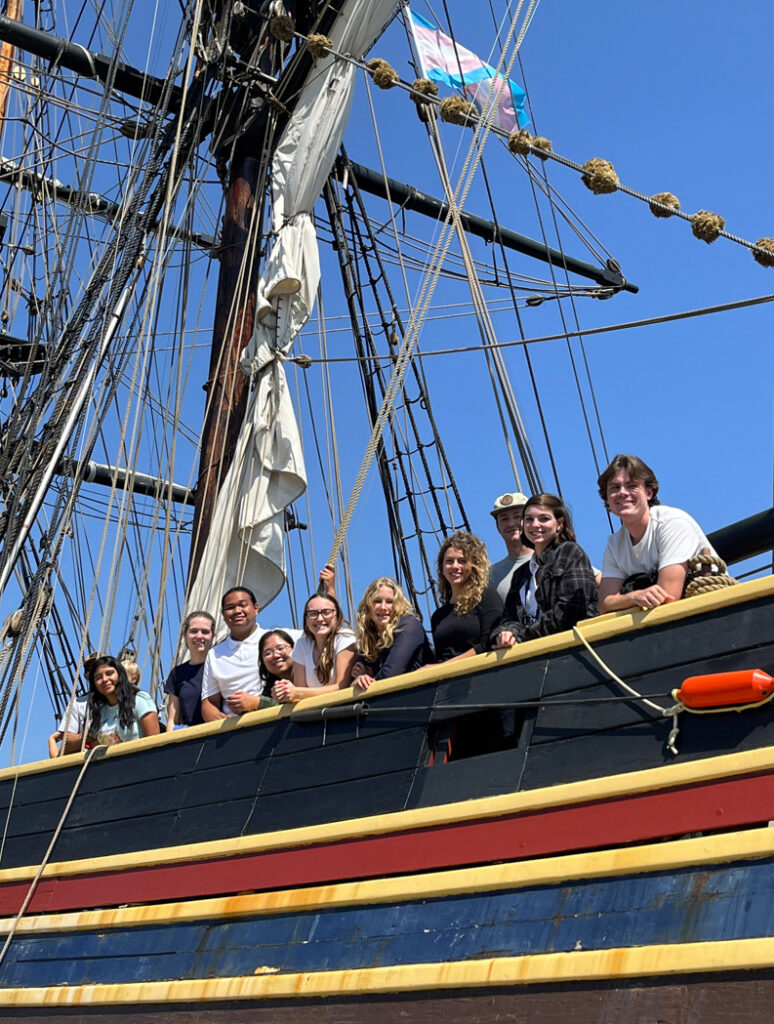
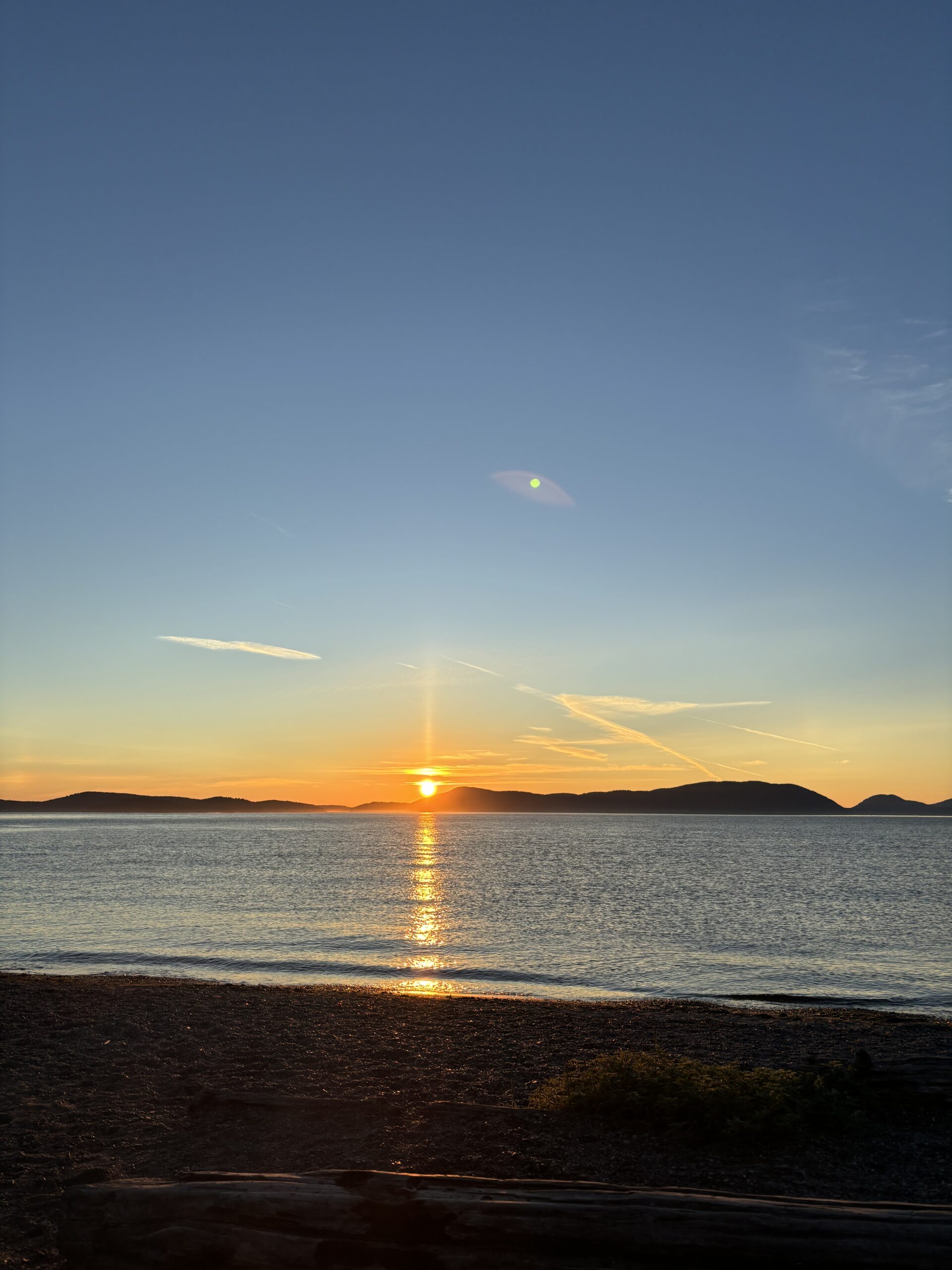
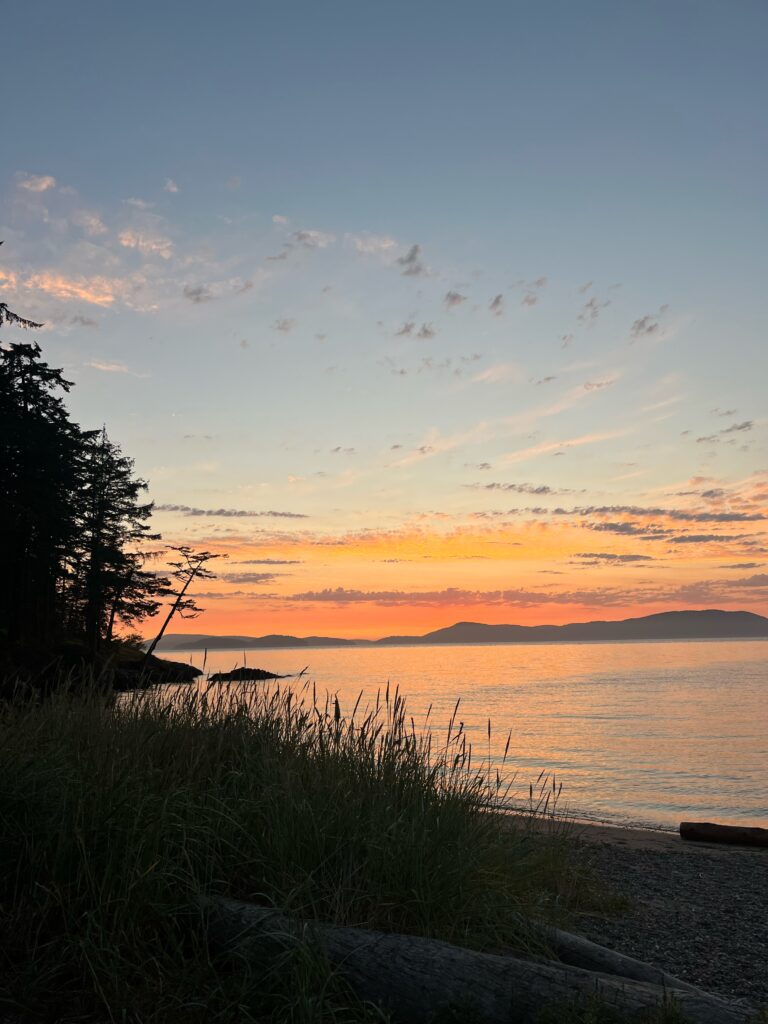
August 7th, 2024 – On the Wednesday of our final full week in WA, the REUs gave their final presentations on their summer research projects. It was cool to see their final results and how their projects had developed as I had been hearing updates all summer long. The presentations were followed by an end of summer goodbye potluck. It was a full circle moment as we opened the summer with a potluck as well. It was crazy to remember back on that first day and realize how far we have come in our research, dive abilities, and friendships! Later that night, we did a sunset night dive at the Cabana (one of the location marinas). We took Holly and Will (two of the REUs) as well to snorkel. We saw a huge gorgeous white spotted rose anemone! The bioluminescence was also spectacular; we splashed around in the water for a while at the surface enjoying the sparkles.
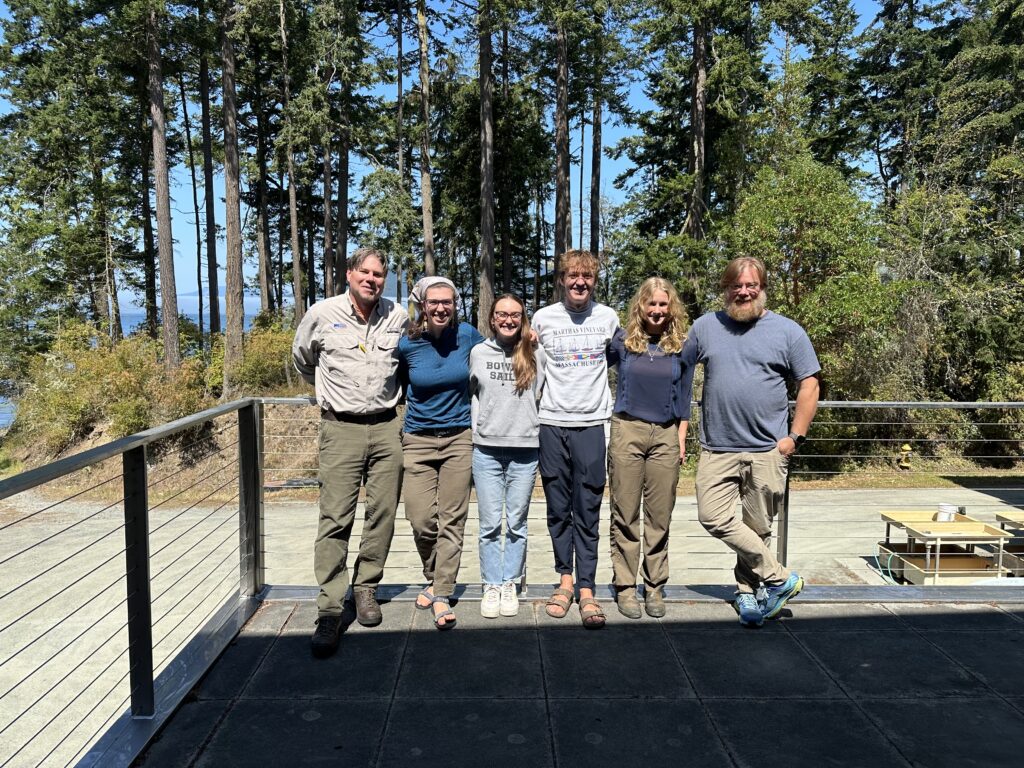
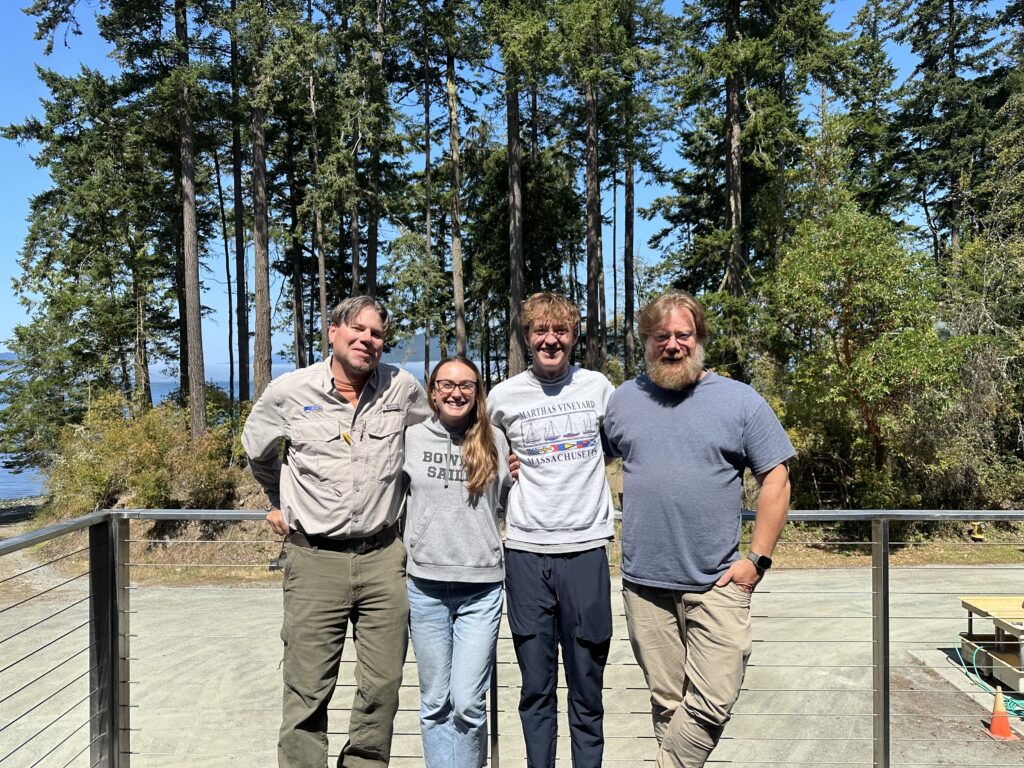
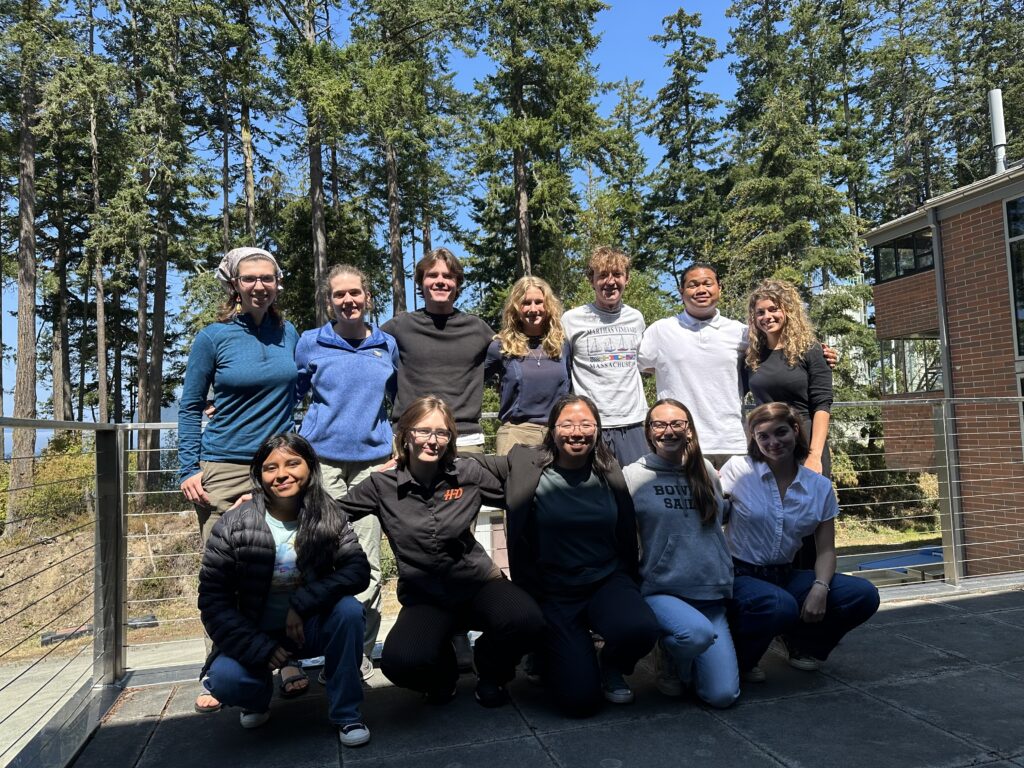
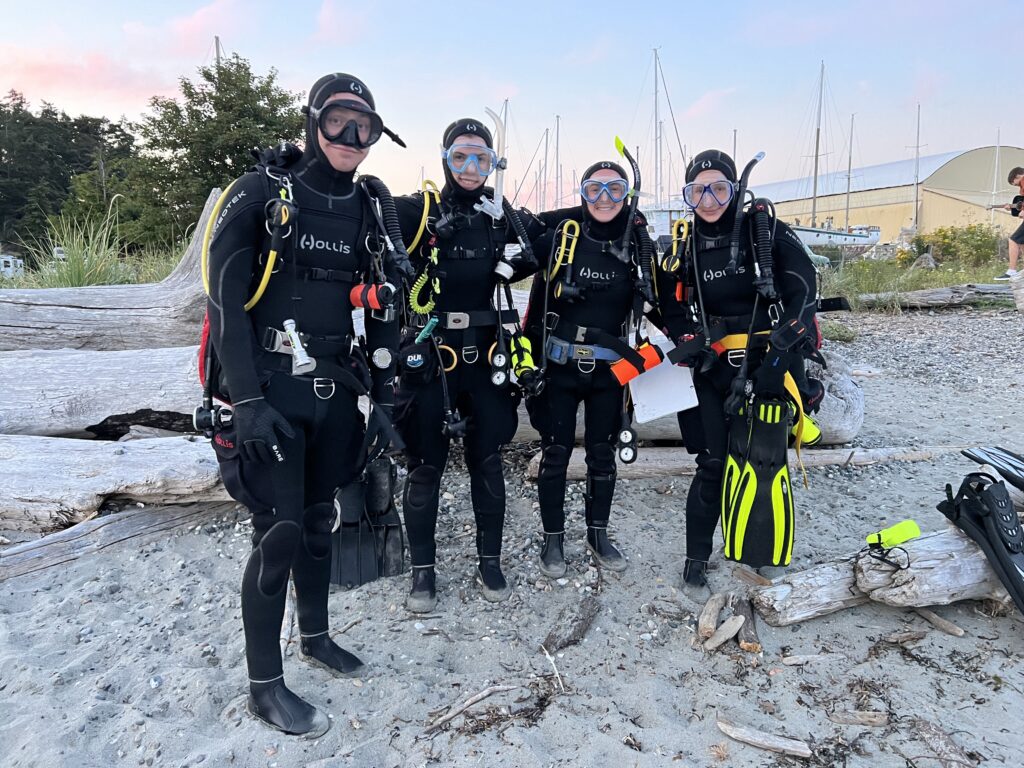
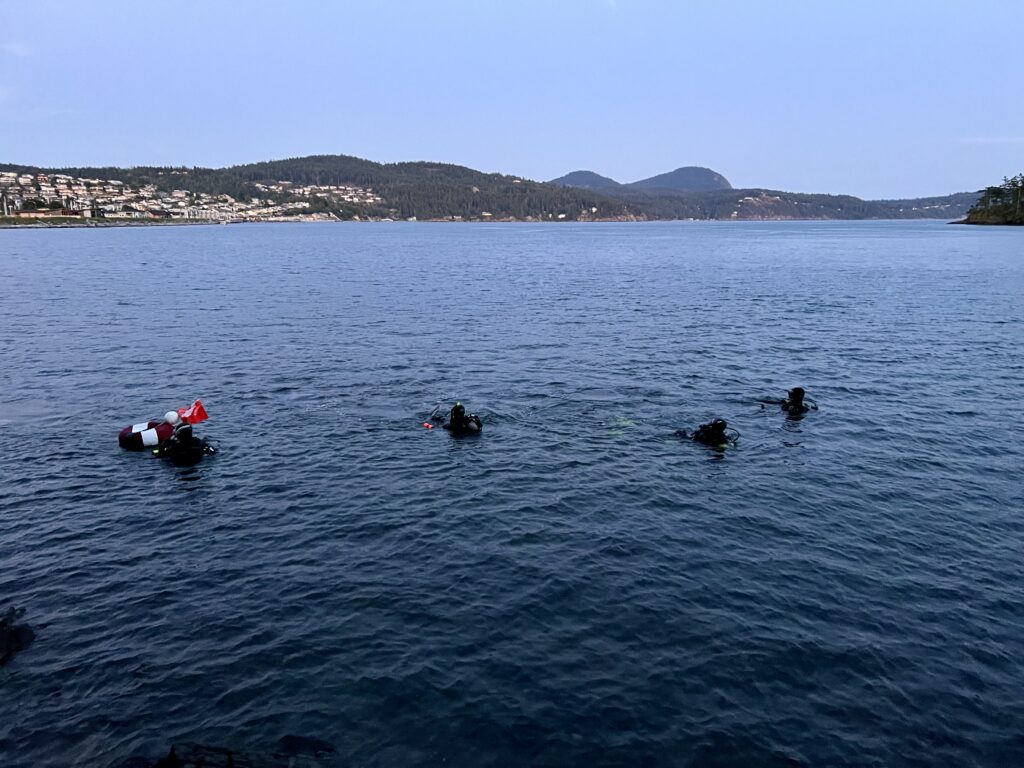
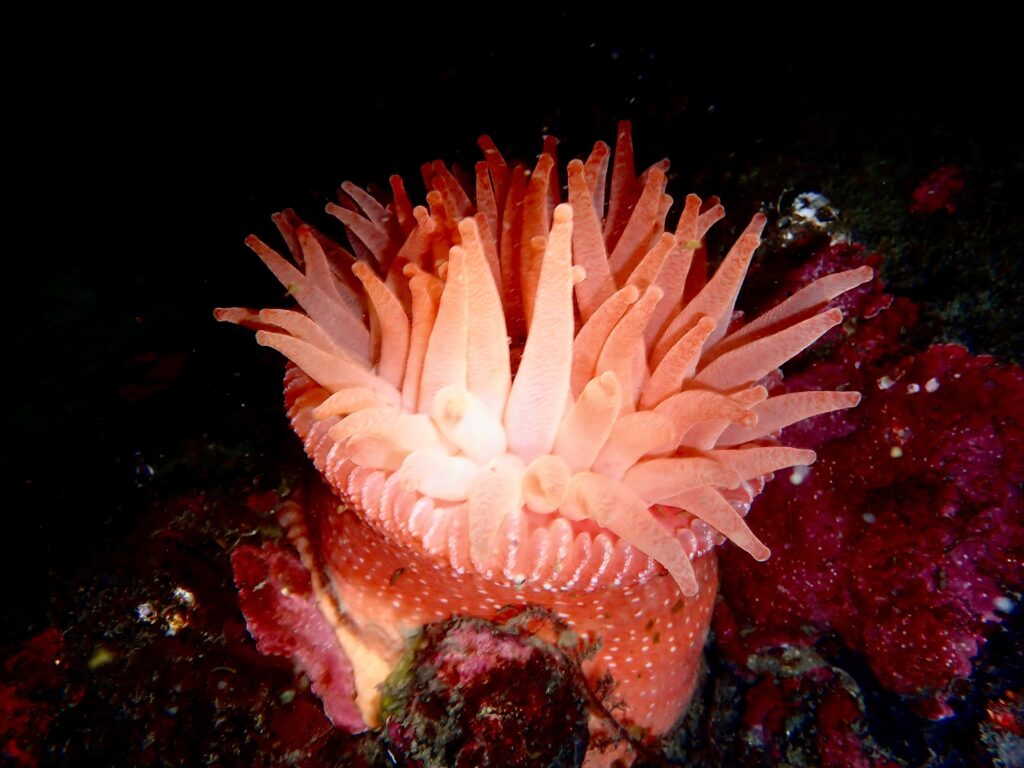
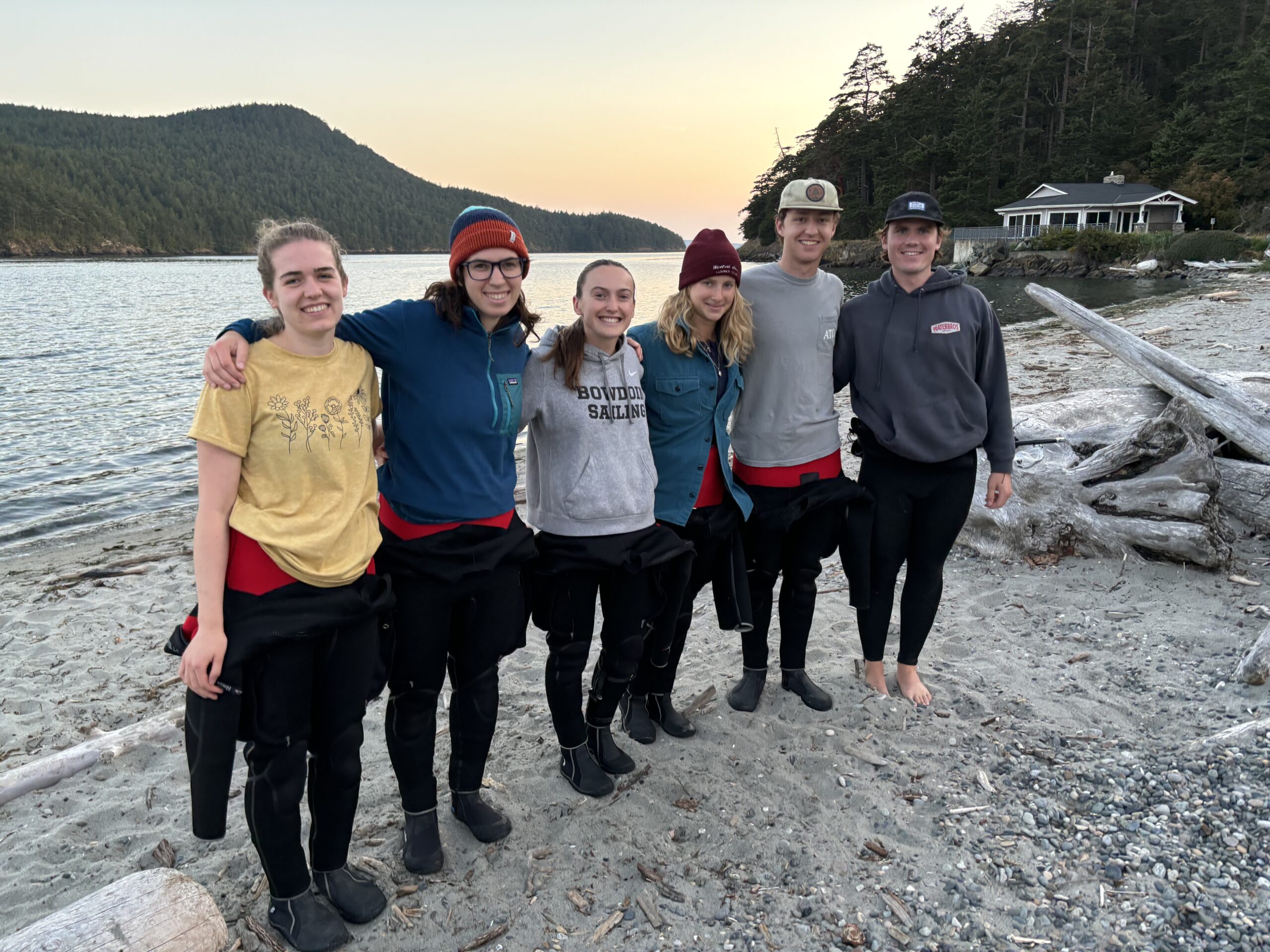
August 9th, 2024 – All the REUS left SPMC, and it was a sad weekend for Ayden and me because the commons felt so empty without them. Although, we had a couple incredible dives to look forward to over the next couple days!
Enhancing my Dive Education
August 8th, 2024 – As an additional part of our Scientific Dive Training, Derek instructed the group on blue water diving. Blue water diving is a branch of technical diving in which a rig system keeps the dive team together, and it is meant to be used for work in the middle of the ocean. Since this type of diving does not have a bottom and is usually not near reefs, artificial structures, or coastlines, it is very important for the divers to have excellent buoyancy. Derek set up the blue water rig and showed us how it works on land. It is a series of lines that are connected to a main system (wooden panel) with carabiner clips. A thicker line is connected to a buoy on one end, the main system in the middle, and then a light weight on the other end to hold the system in place vertically. The additional lines with the carabiner clips are what keeps the divers together. A group of divers go down and one diver stays at the main system and is the buddy for the other divers. The divers communicate with the main system buddy diver by tugging on their lines. A communication system defining how many tugs means what is predetermined. For example, 1 tug is I’m okay, two tugs is go up, three tugs is go down, and many tugs indicates a problem. For buoyancy control testing, the divers that are not in the middle at the main system were writing an essay on their slates. While writing the essay, buoyancy is not at the forefront of the diver’s mind, so it is easy to start descending or ascending by a ft or two without knowledge. It was the main system diver’s responsibility to make sure each diver was at the appropriate depth. We completed these skills in groups of four and rotated being the main system buddy diver. This was a great test of buoyancy while working, and I have to say my buoyancy is better than I anticipated! It was enjoyable to write an essay, or should I say journal entry, to reflect on my summer of diving while diving! This was our last dive as a complete dive team for the summer. It was bittersweet.
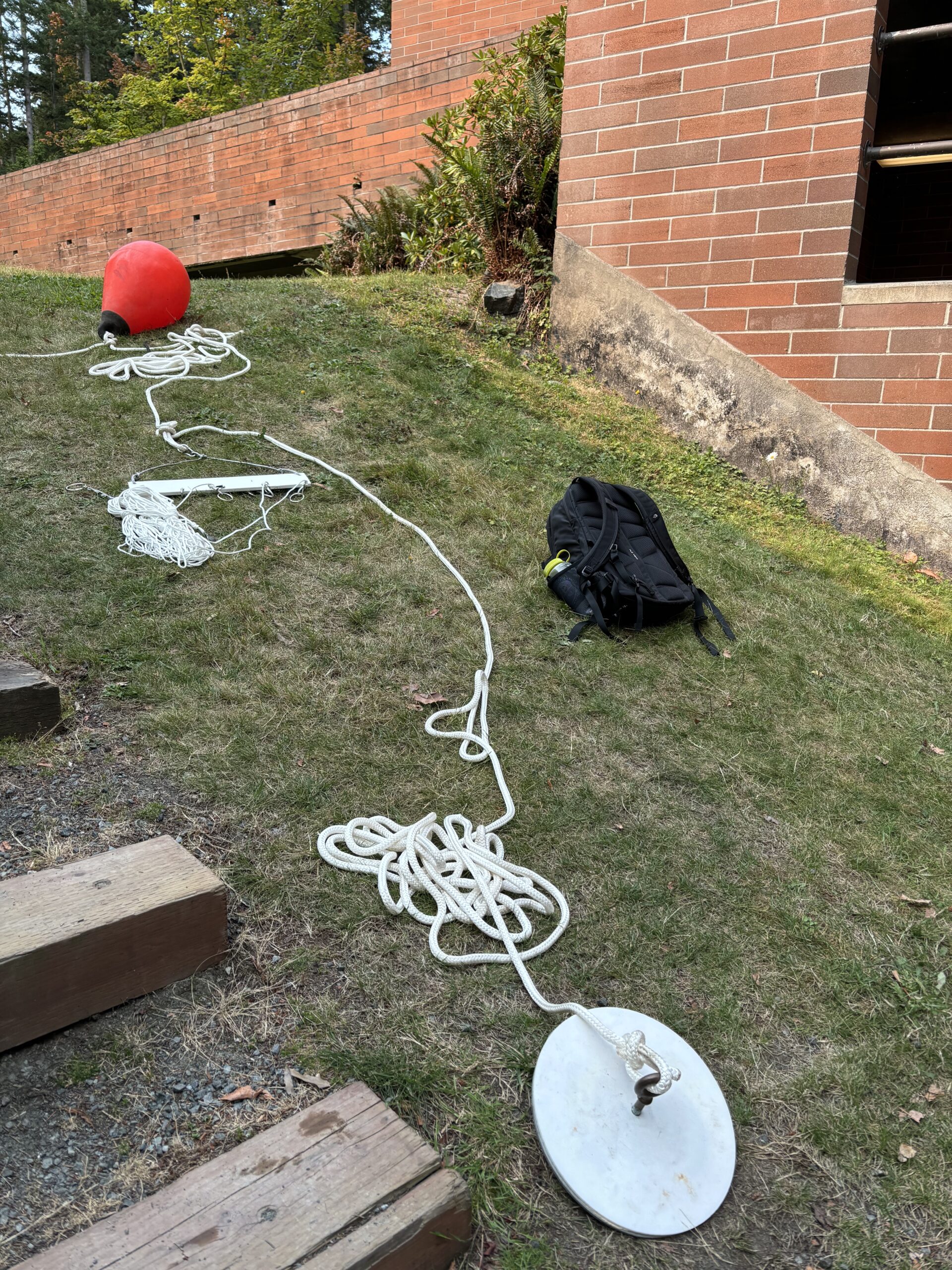
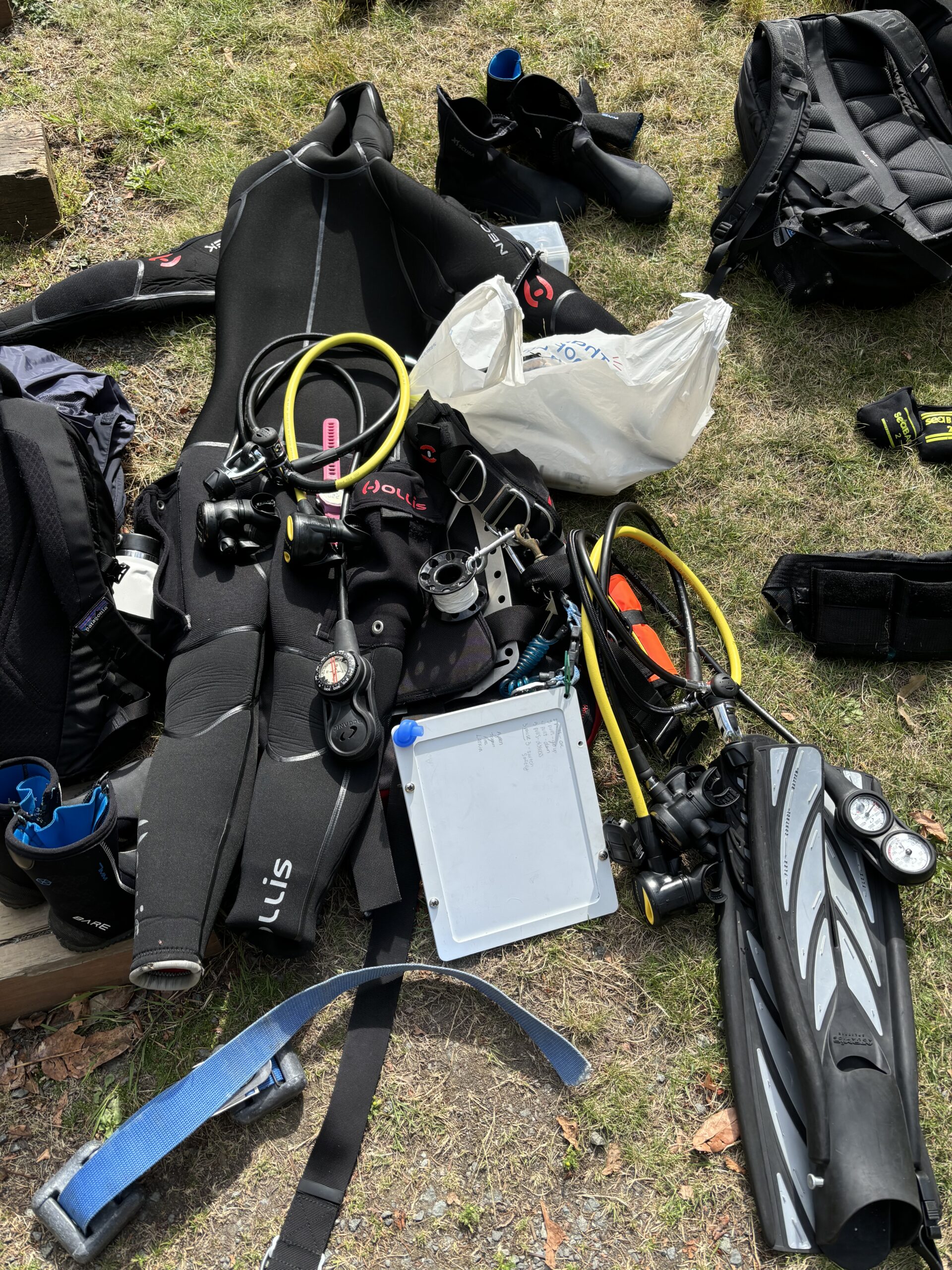
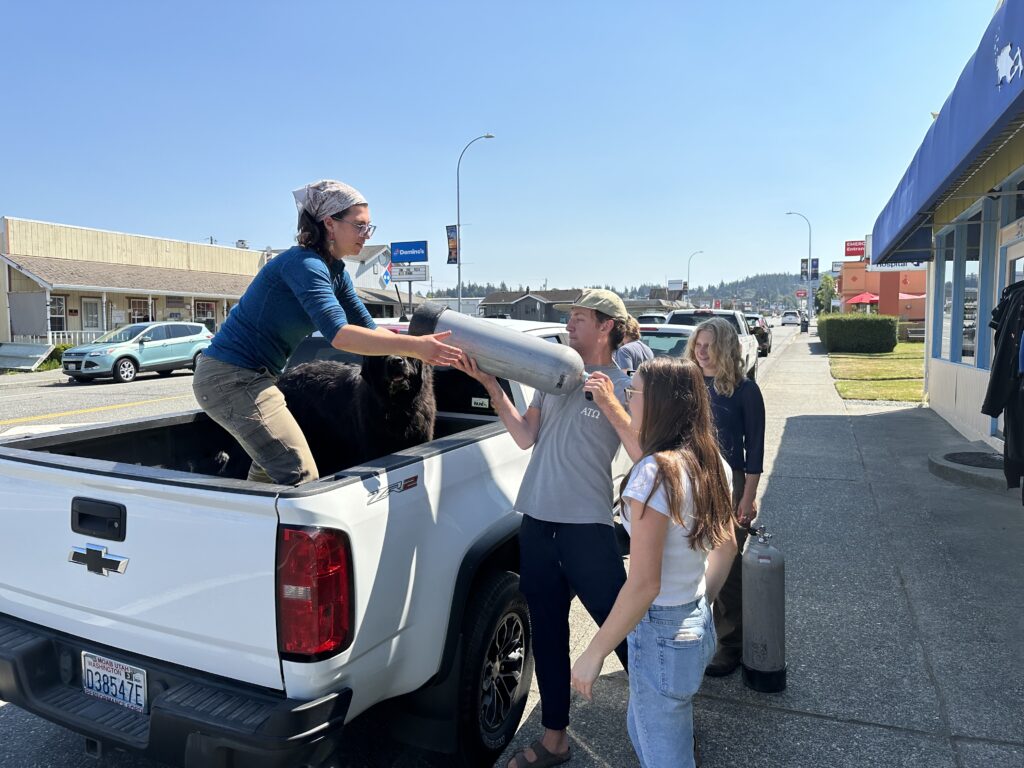
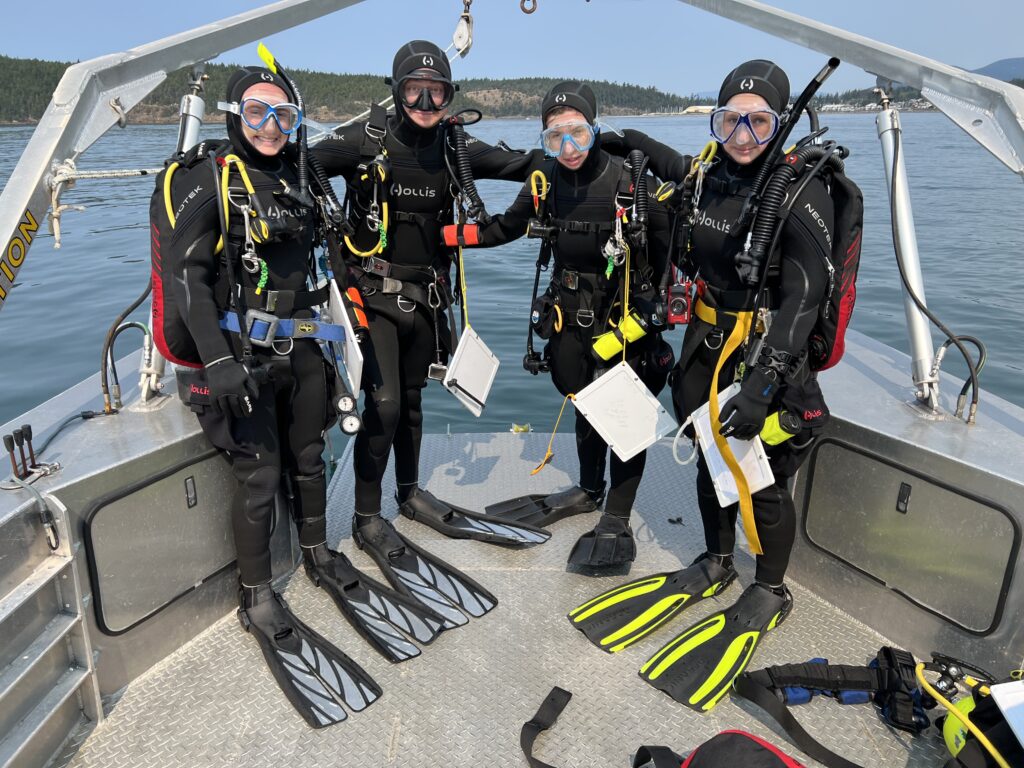
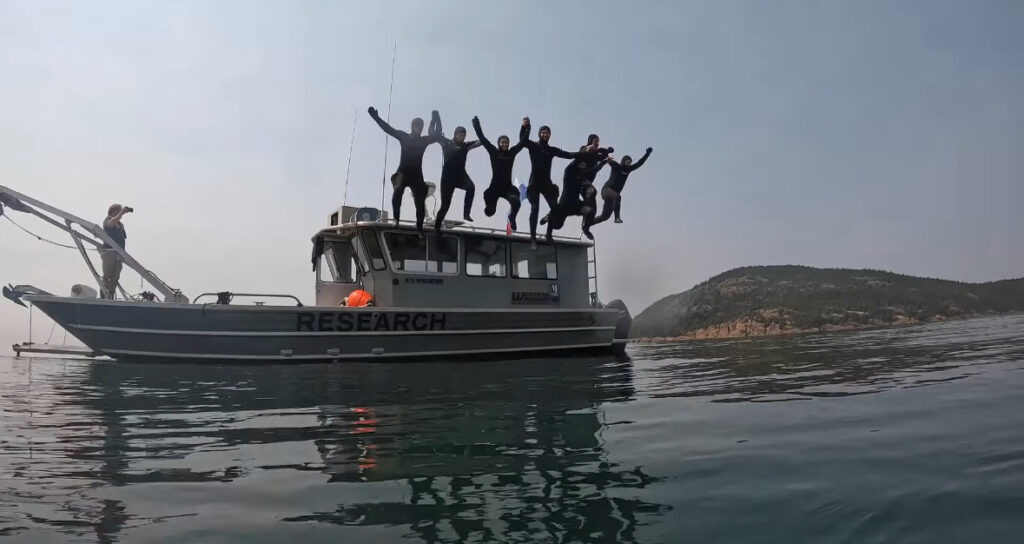
August 11th, 2024 – Ayden and I woke up bright eyed and bushy tailed to texts saying the Derek could take us to Strawberry Falls. This dive site was on the bucket list for us as we had heard all summer that it has some of the most stunning anemones lining the wall. We had tried going to this location one other time this summer as a dive team, but the currents did not cooperate. Let me just say it did NOT disappoint! This must be my favorite dive of the summer and arguably ever. When you look up from about 60 ft deep you see what looks like a waterfall of small strawberry anemones cascading down the rock face. And if you swim 20 ft to you right then you see white metridium anemones flowing down the rock face. It was stunningly beautiful. If you descend a little deeper to about 80 ft, then there’s a ledge and then a huge drop off that goes down to hundreds of meters. You are quite literally swimming over the deep ocean and looking down into darkness. It is a very intriguing and eerie feeling. As an ocean lover, the deep was calling me. Whereas if I asked my mother what she would think about this experience, she would have been terrified. As we ascended and completed our safety stop at about 15 ft, we were surrounded by gorgeous kelp flowing in just a little bit of current. Every depth had something different. It was a truly amazing dive in every way.
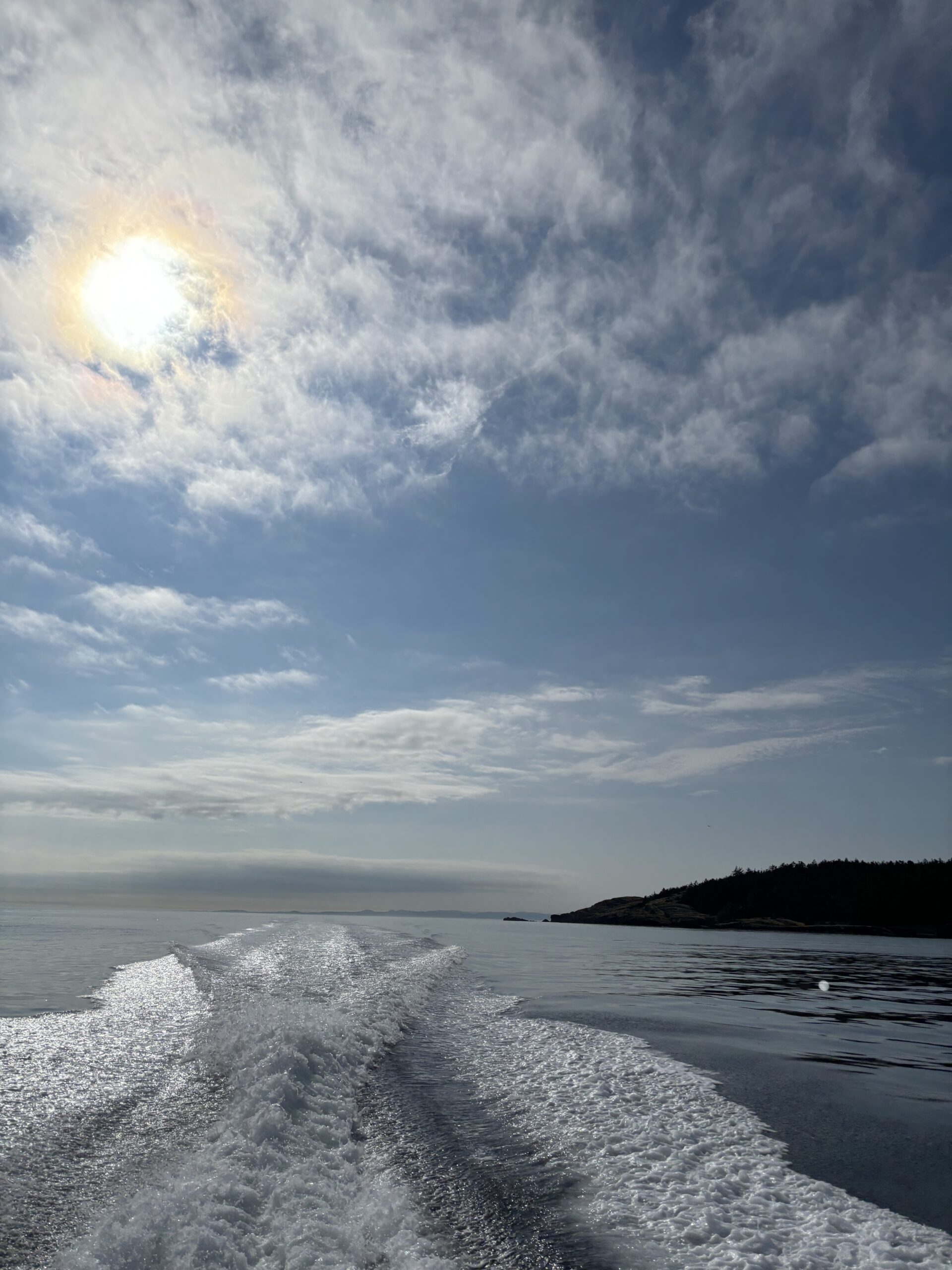
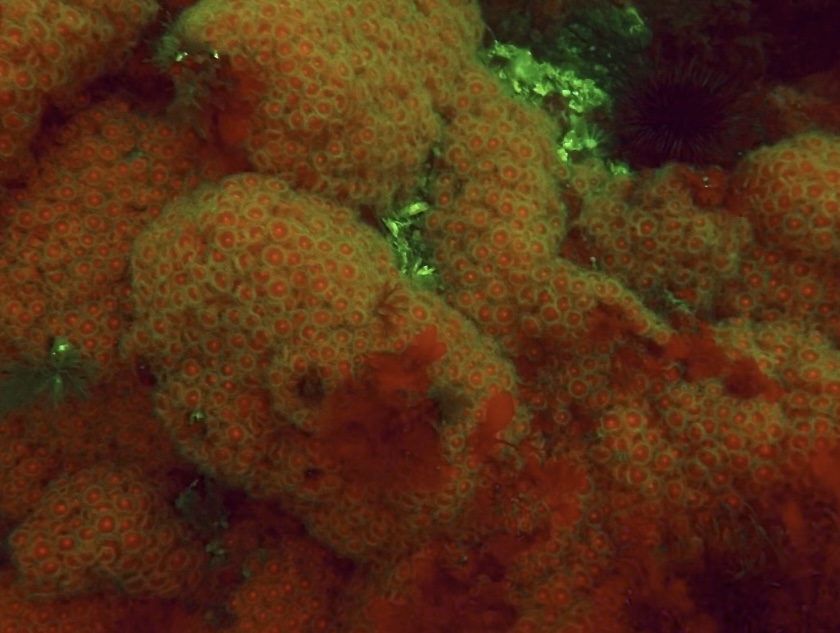
August 12th, 2024 – On the foggy morning of my last second to last day in WA, Derek, Ayden, Jeannie (WWU Student), Jason (WWU Student), Alex (from Puget Sound Restoration Fund), and I made our way to Deception Pass. We got there early before the slack to make sure we did not miss our very slim window. We watched small eddies form along the shoreline under the bridge which was a very cool site but slightly nerve racking because we were about to jump into those waters. Derek called the slack and gave us the green light to get into dive gear. Derek even gave us his AAUS flag, so Ayden and I could take pictures! And then we took a giant stride into Deception Pass. I was in awe as I looked up at the bridge towering above me. I was a little nervous descending but as soon as my head went below the surface my anxiety vanished. We stayed very close to the shoreline wall to avoid boat traffic and be able to grab onto the wall in case of excessive current. We saw some very cool tube anemones that I had never seen before as well as rose anemones, white metridium, rock fish, rare nudibranchs, and crabs! Towards the end of our dive, the current started picking up very quickly. We did hold onto the wall for a couple minutes before making our way towards the surface for a very cool kelp forest safety stop. All the divers got back onto the boat giddy from an incredible dive. And then just like that we dove Deception Pass! The legendary dive site that only a handful of divers have been due to the challenging conditions. The slack tide had to be timed perfectly because there is significant current and downwelling at this location. You must be an advanced diver and very cautious of boat traffic. I could not believe that I had just completed my last dive in WA! But it was a phenomenal last dive to have. It was a very full circle moment for me because during our first week, the first outing we did as a group was to Deception Pass. This dive was the perfect way to end my internship and fabulous summer of diving!
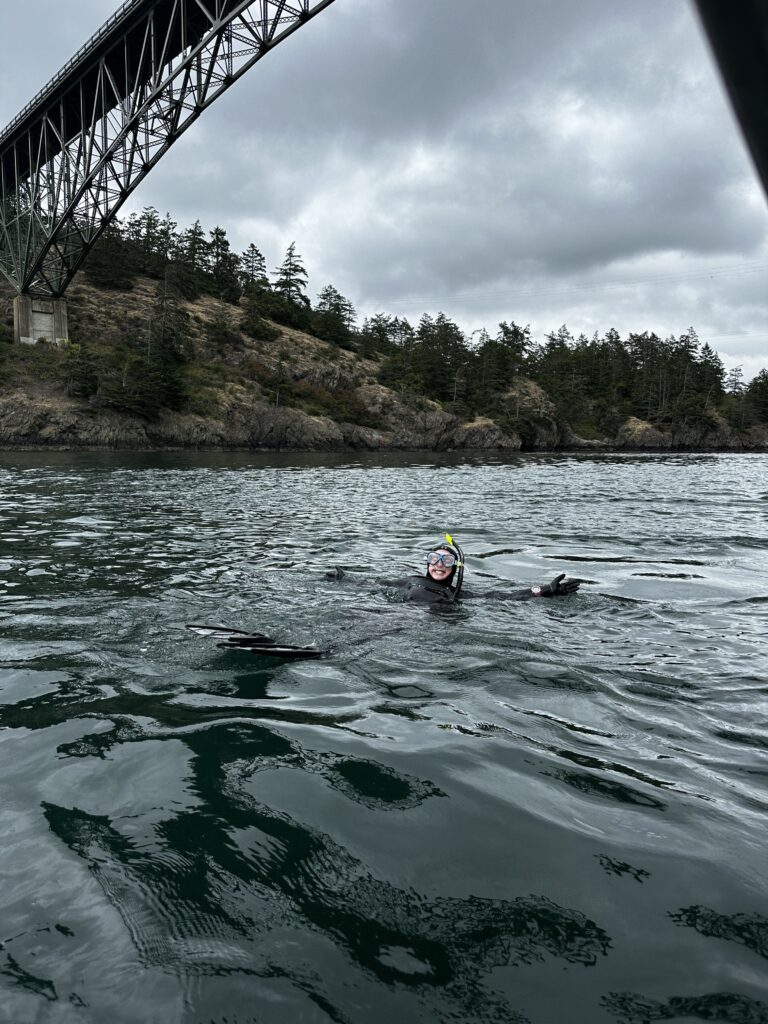
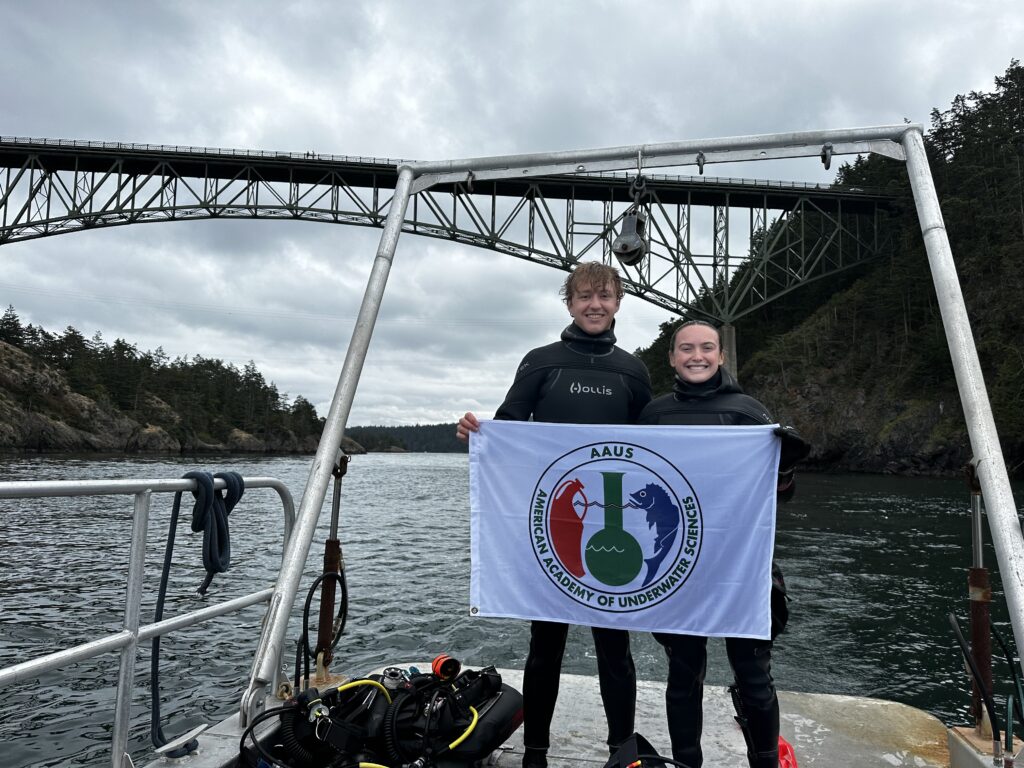
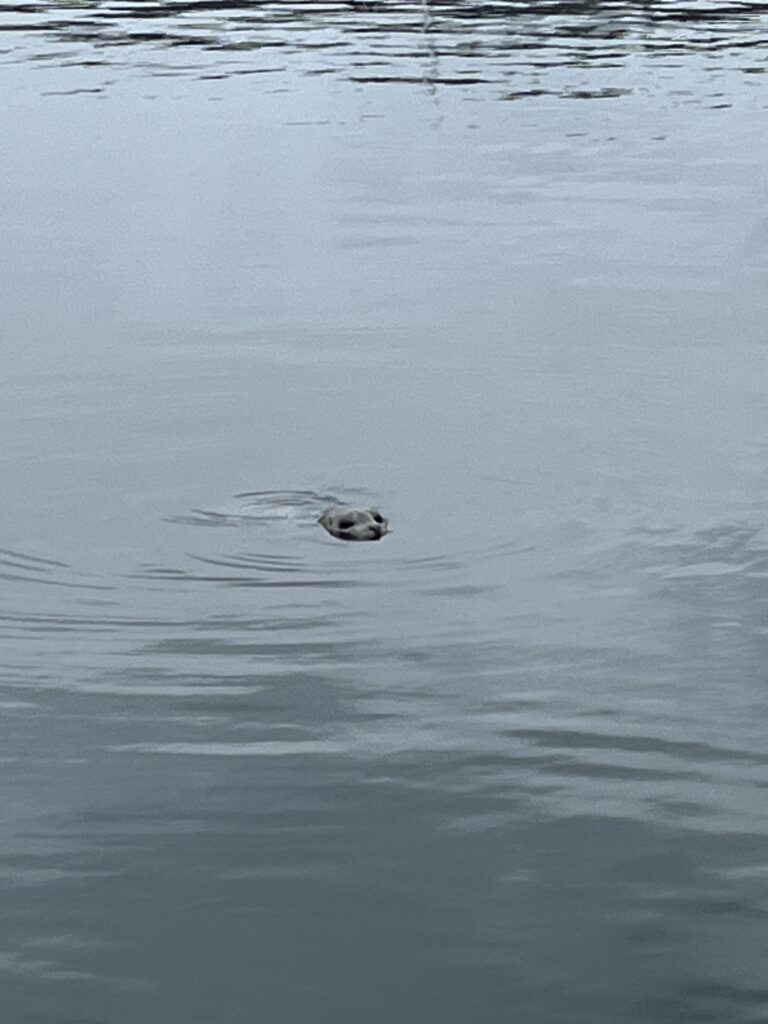
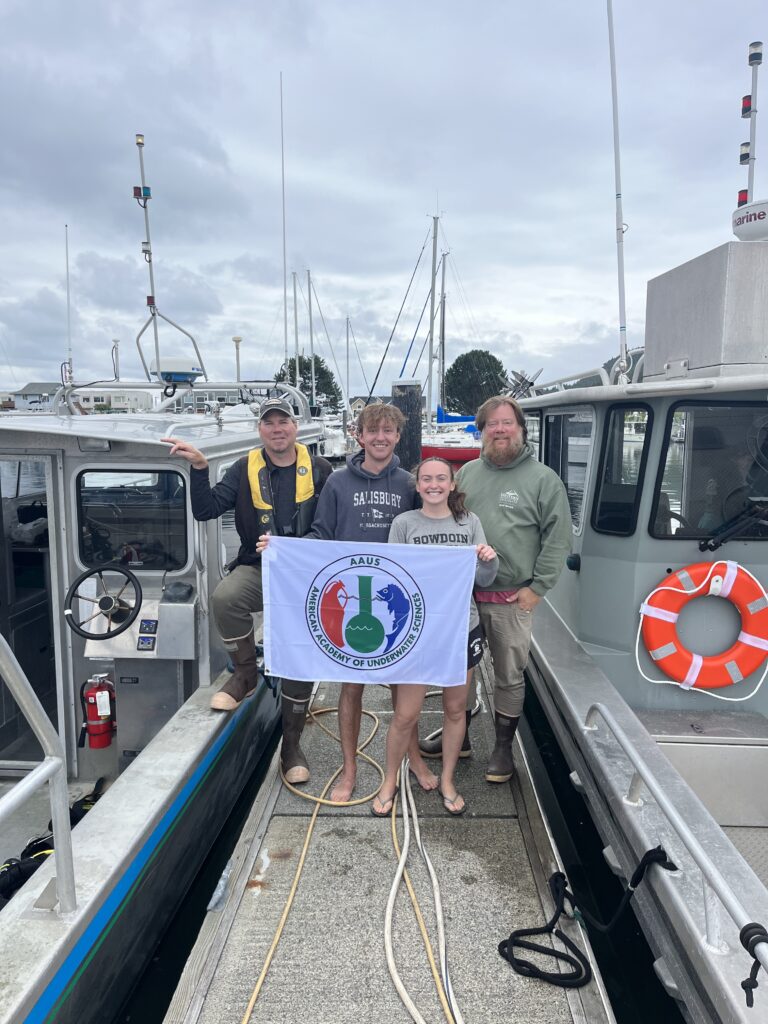
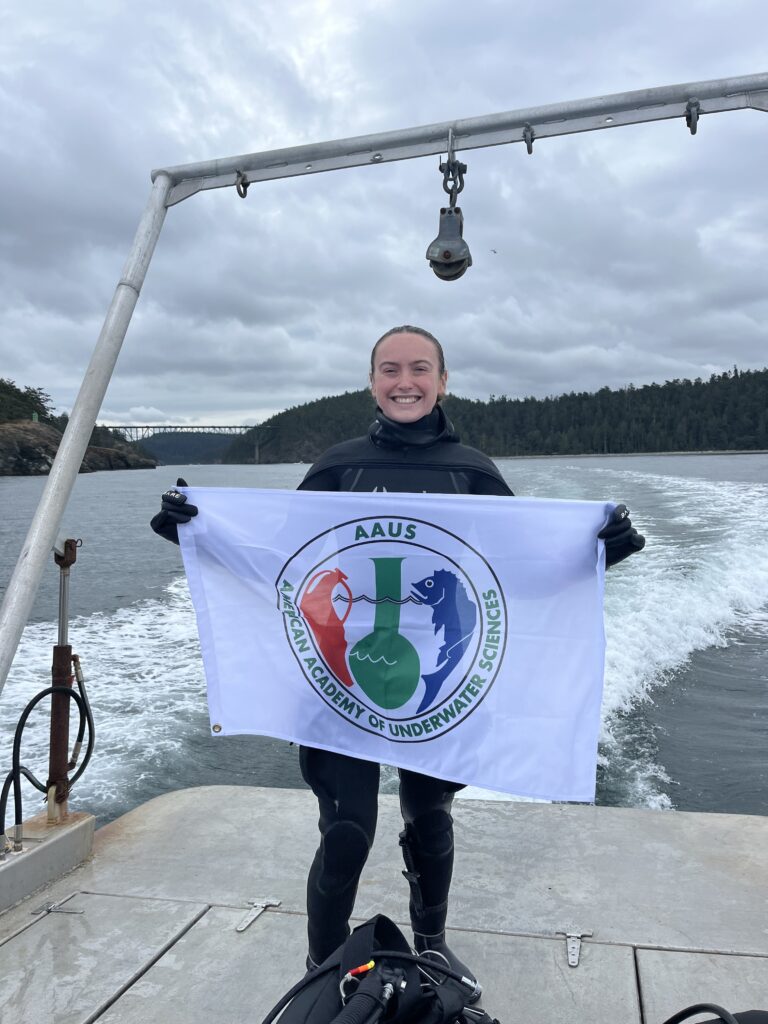
Thank you so much to OWUSS, the AAUS Foundation, and SPMC for this extraordinary internship and the ability to advance my diving skills in one of the most beautiful states. I am so grateful I was able to be part of an impactful biological oceanography research project on abalone out planting and restoration! This research showed me how I can combine my love of ocean field work with diving! A very special thank you to Derek and Nate for being the best advisors I could have asked for all summer. Both are incredible dive instructors that showed me how beautiful cold water diving is. I am so appreciative of all the connections and friends I have made this summer and cannot wait to connect with so many of you again in the future. I am honored to be part of this ocean loving community!
